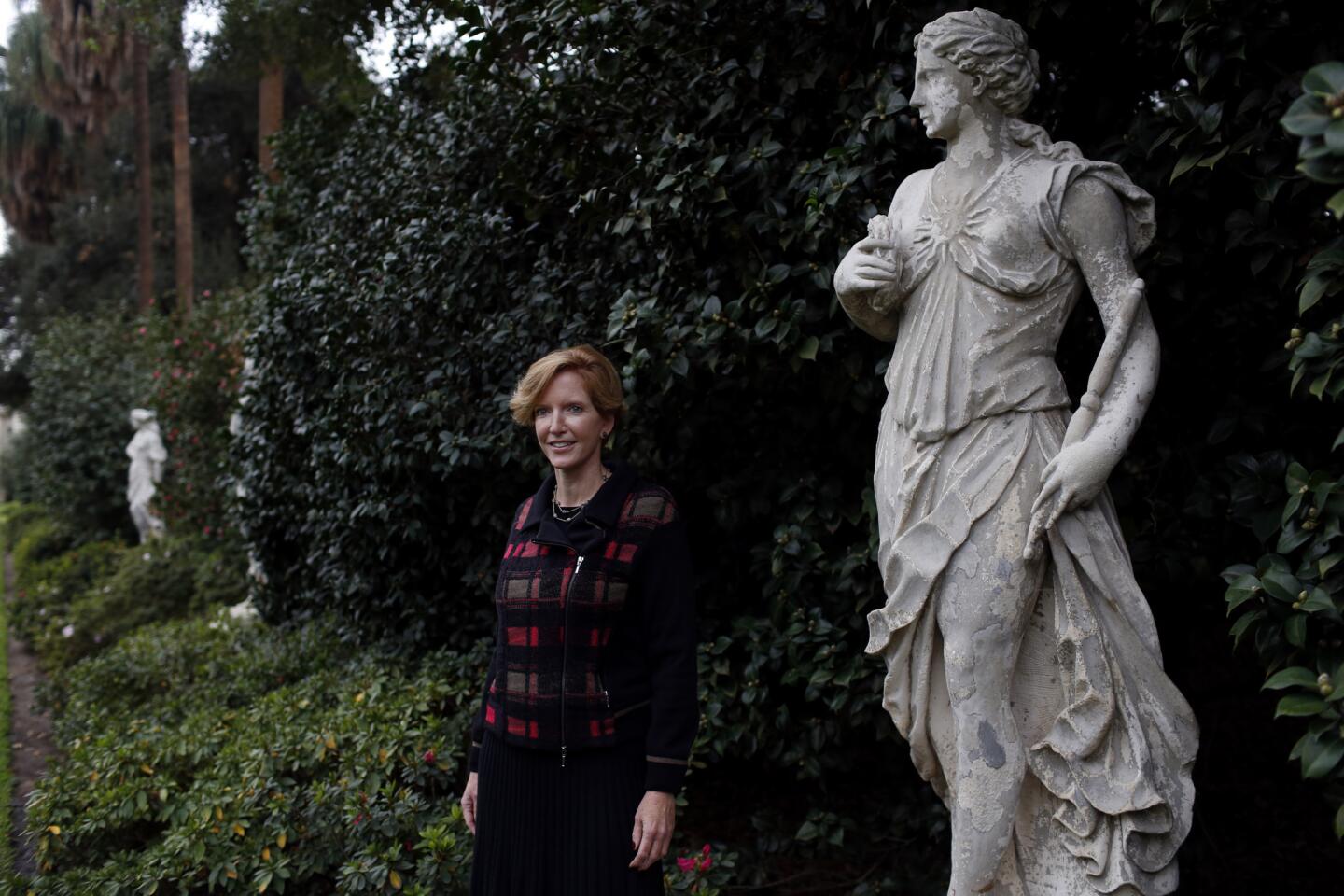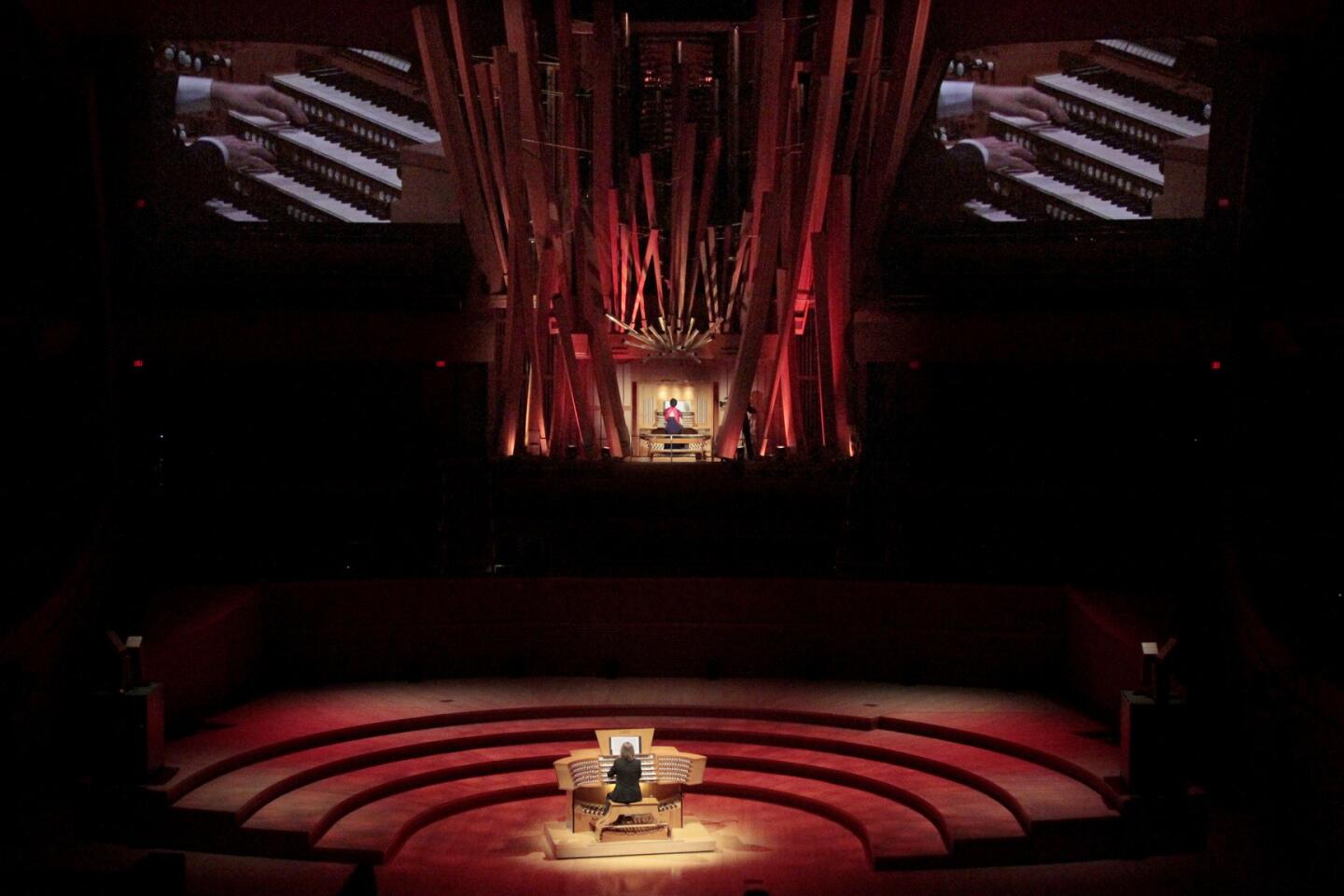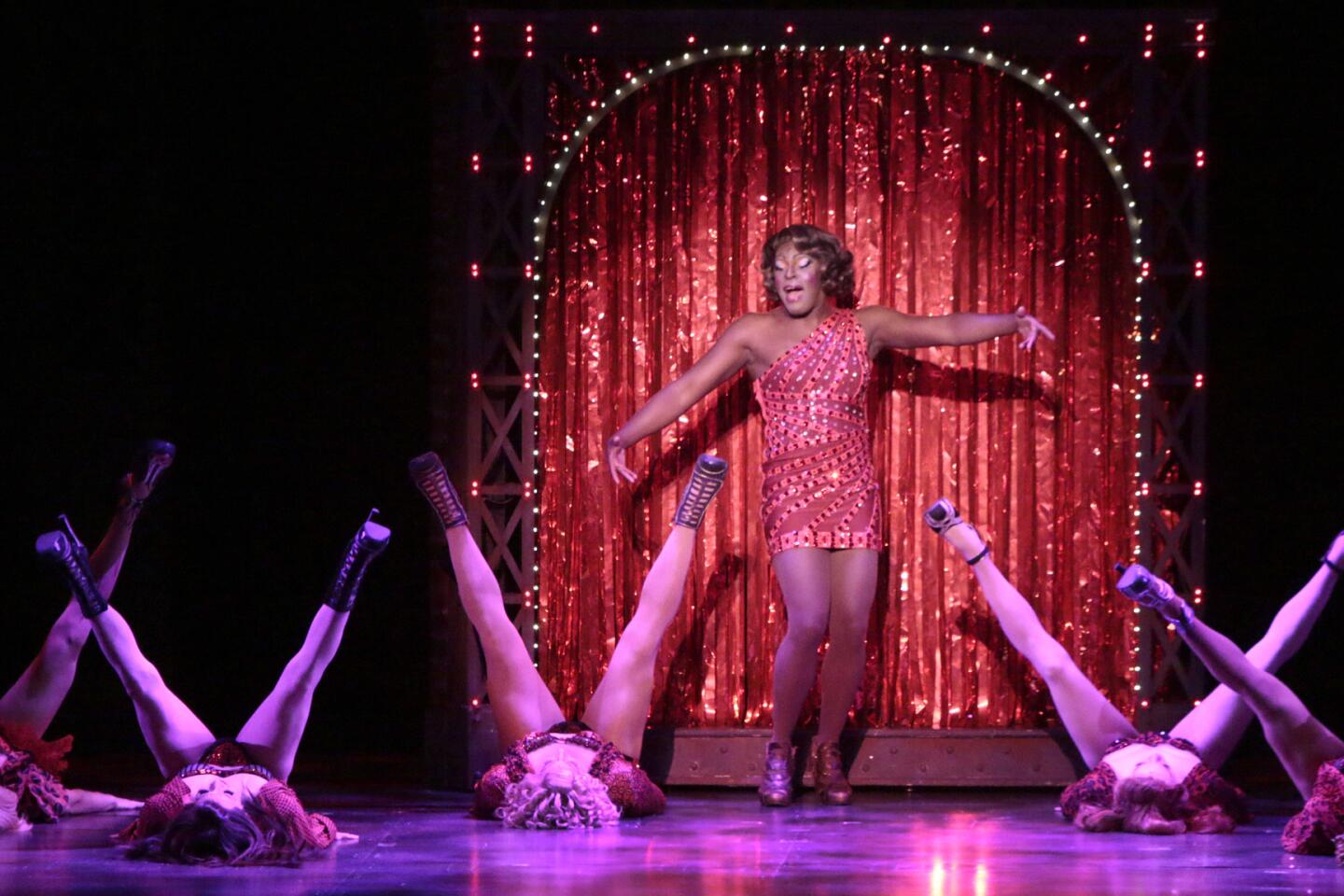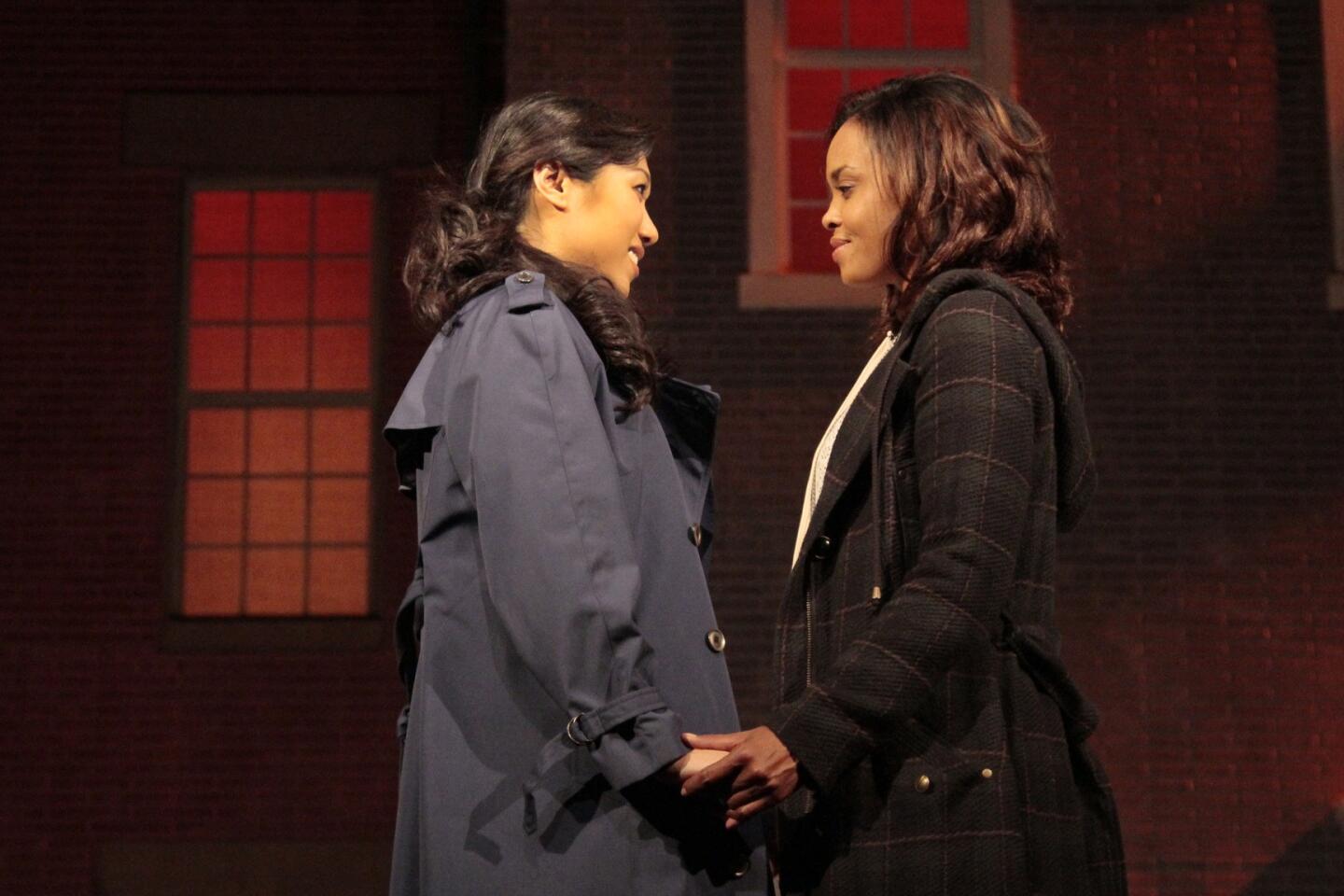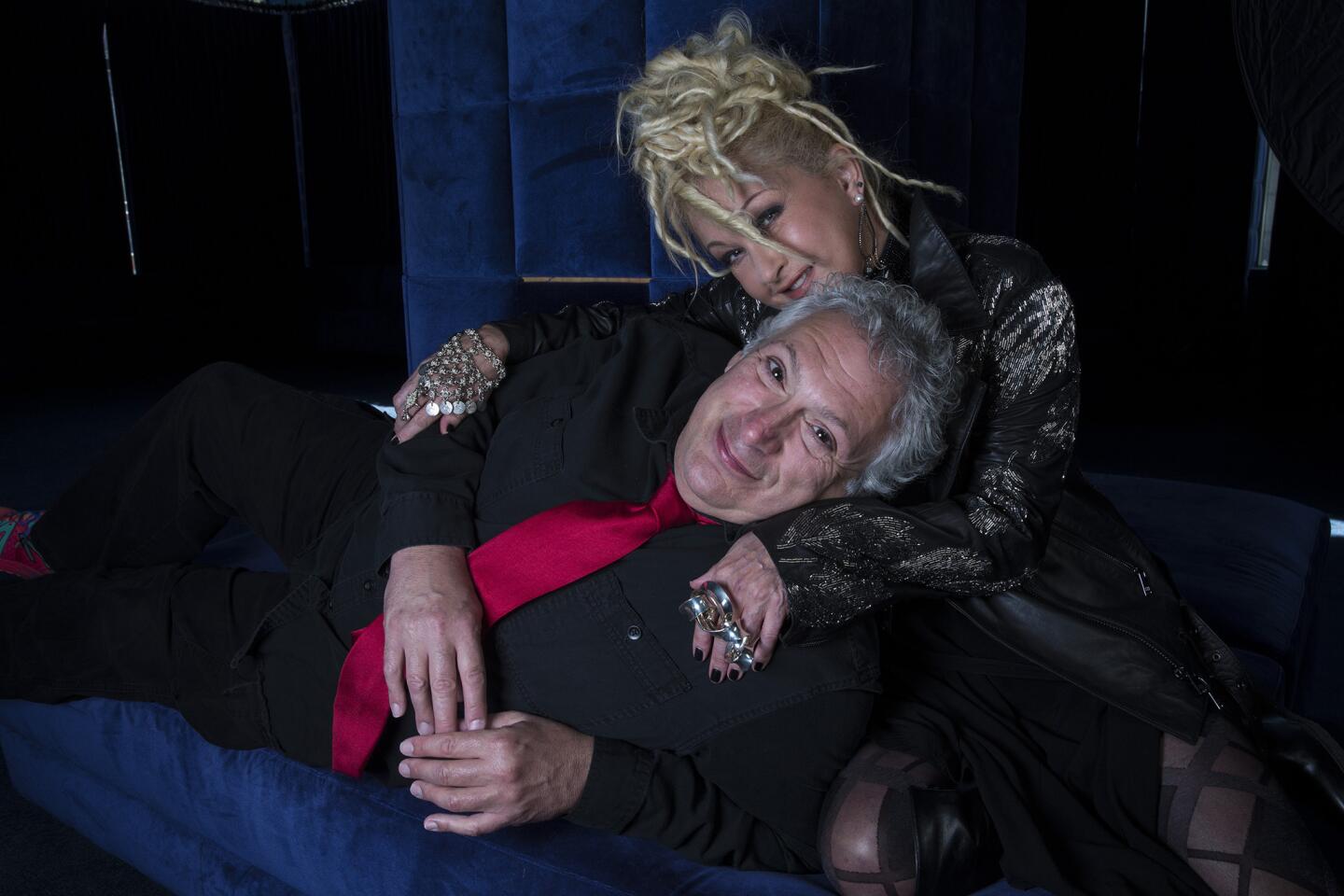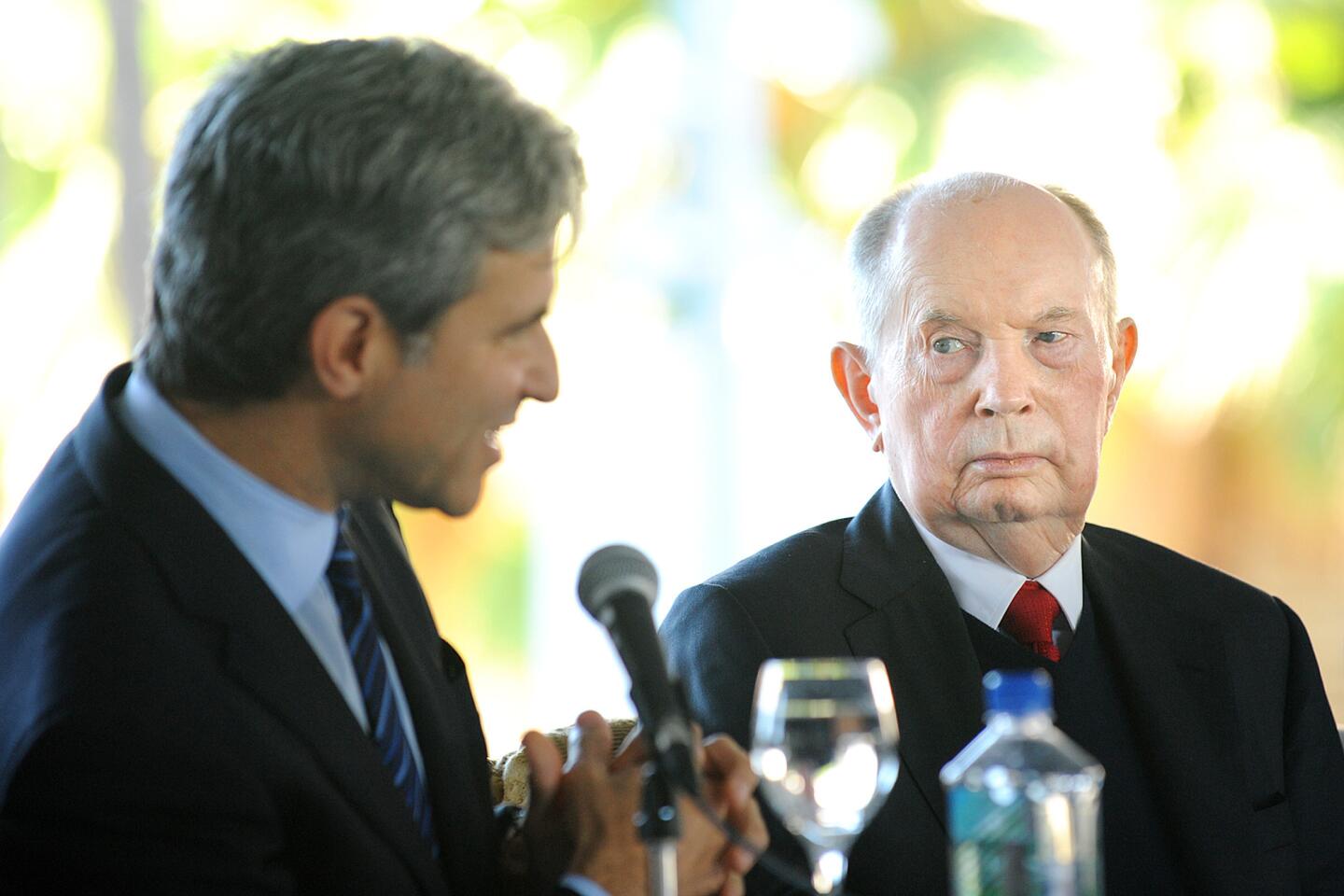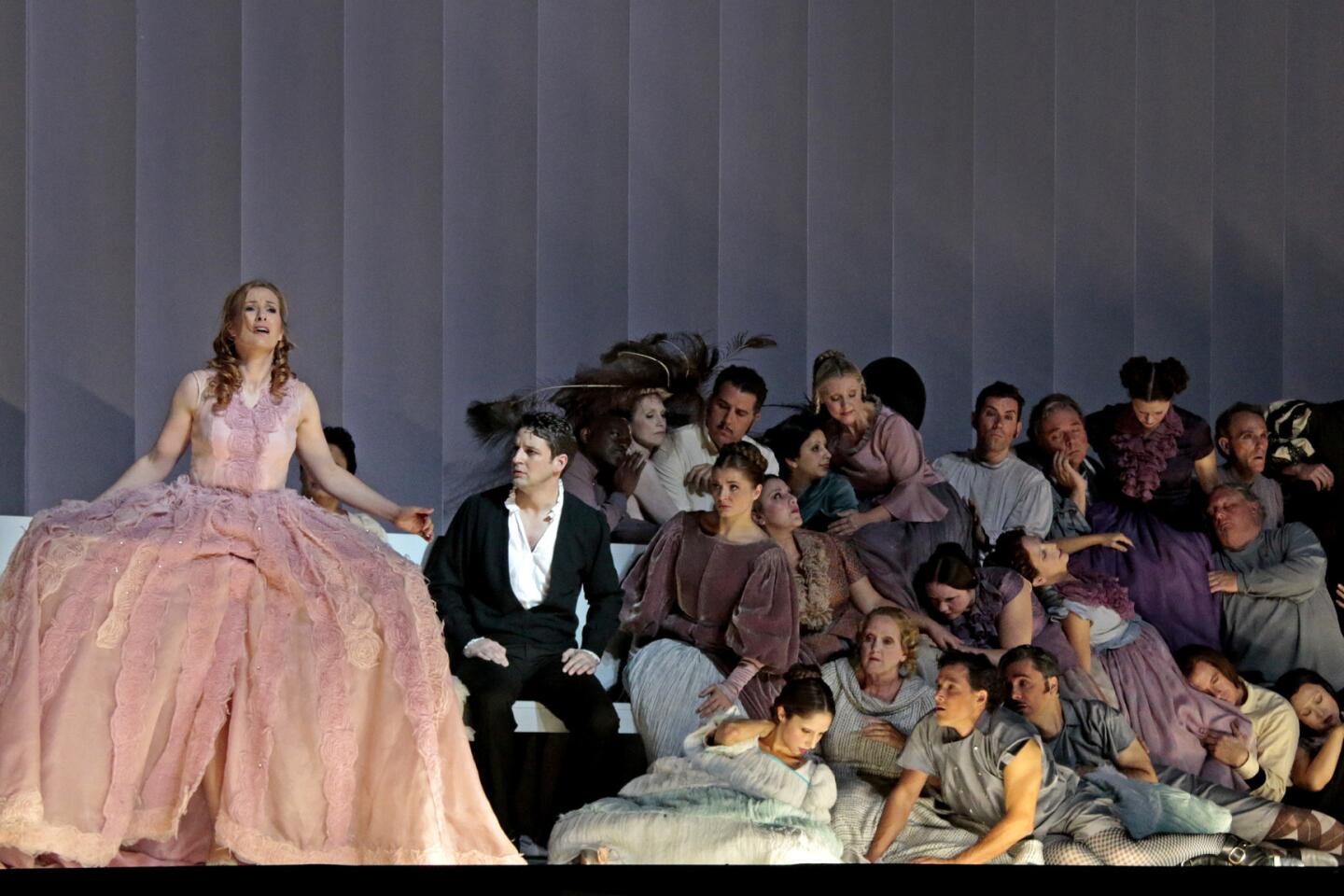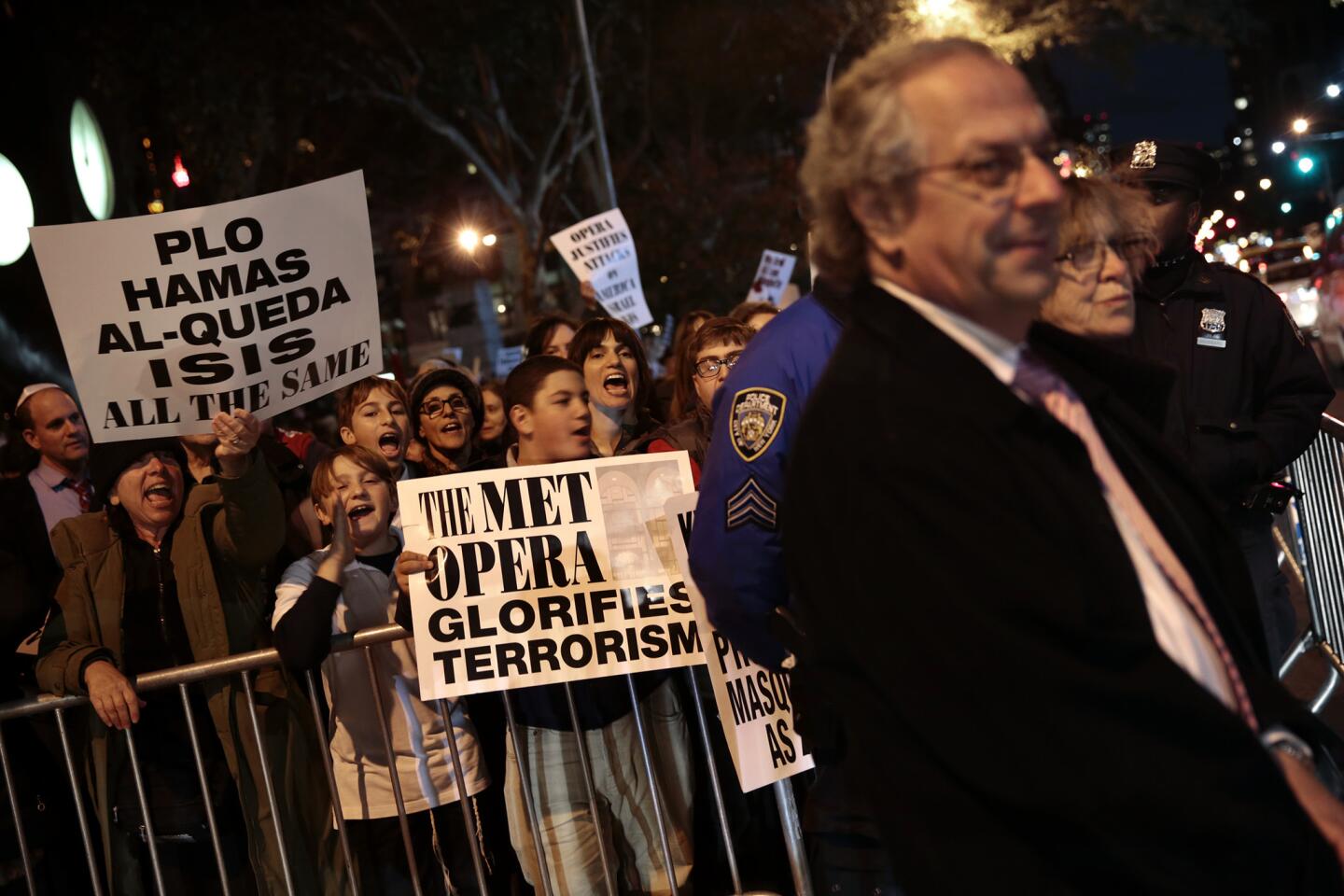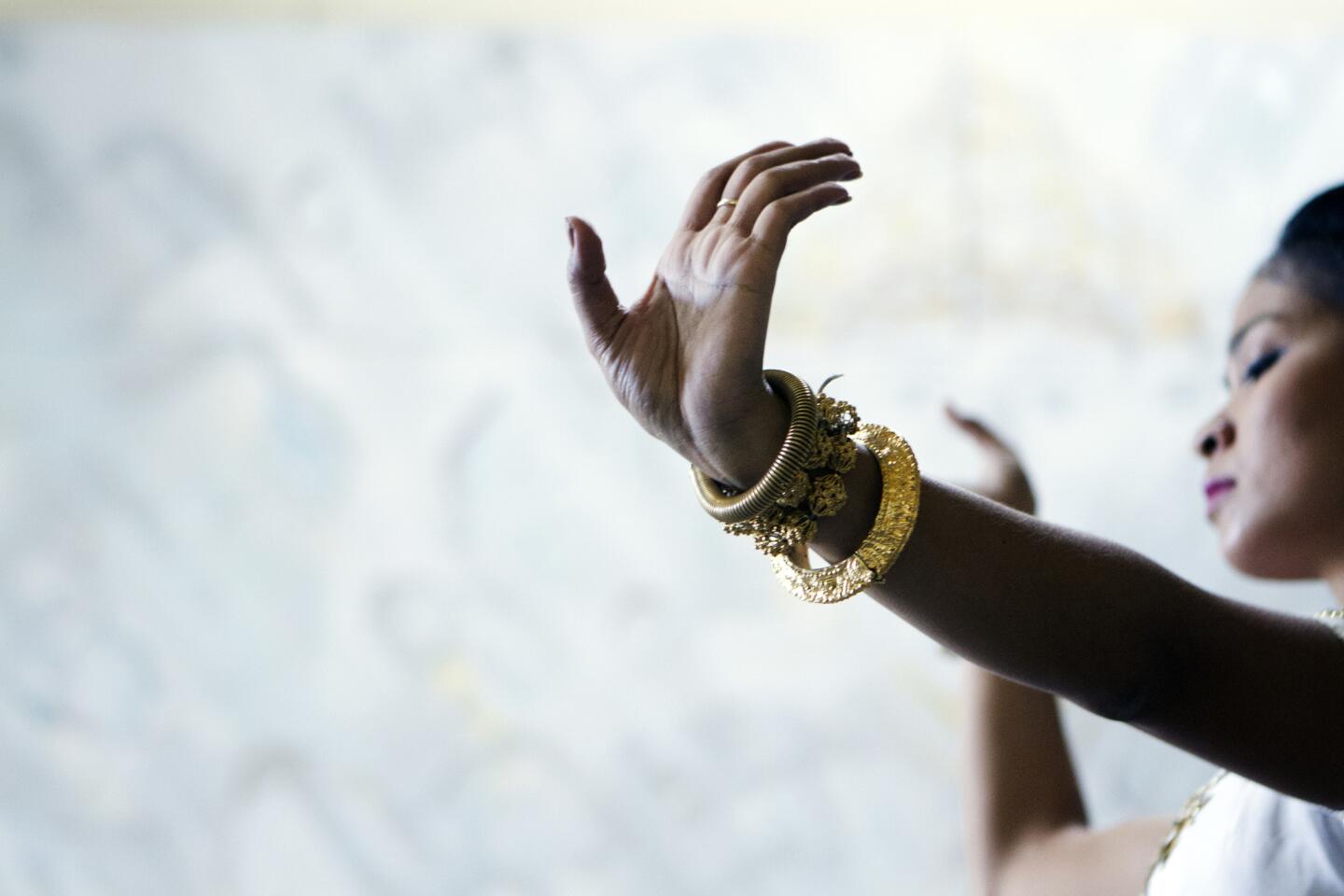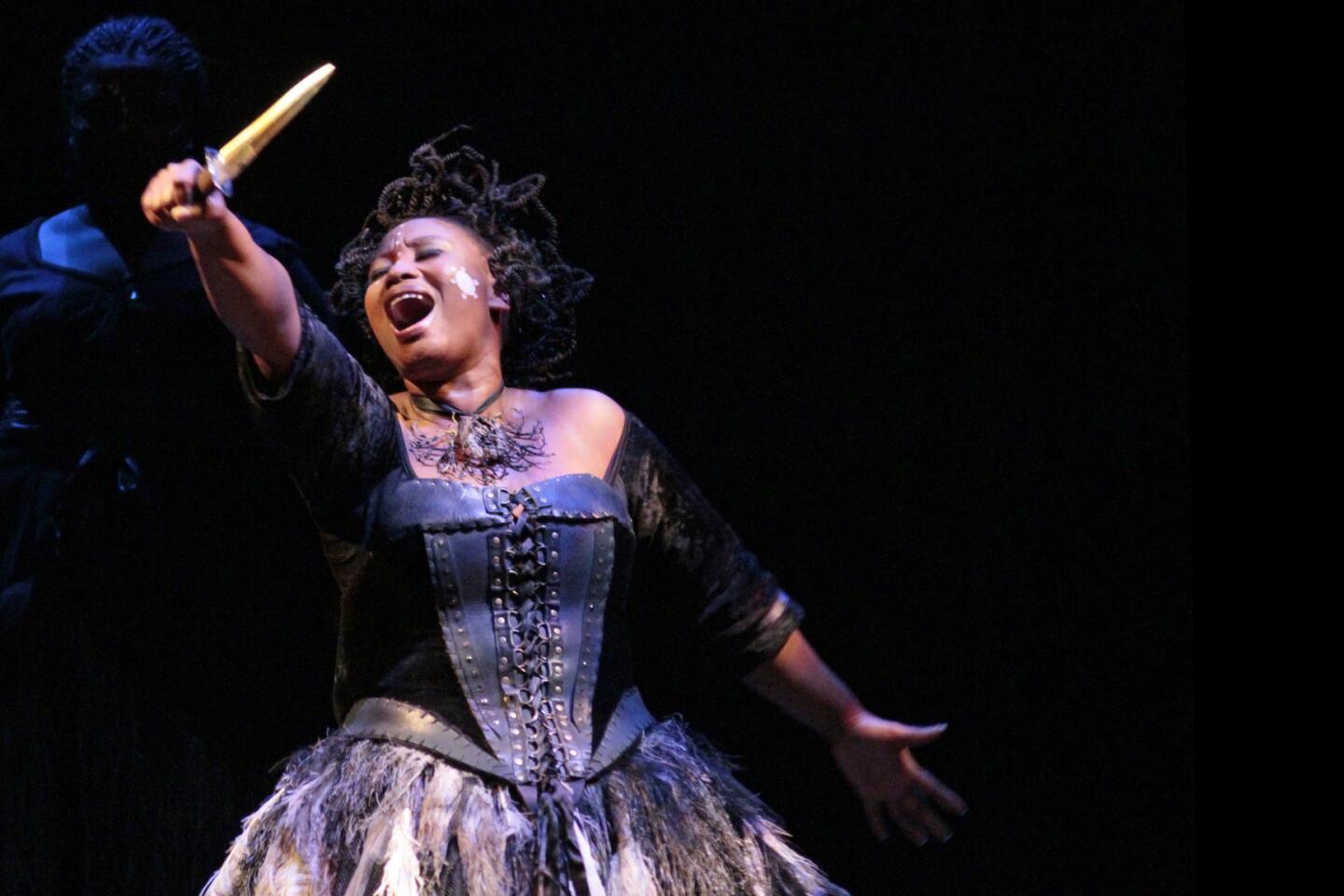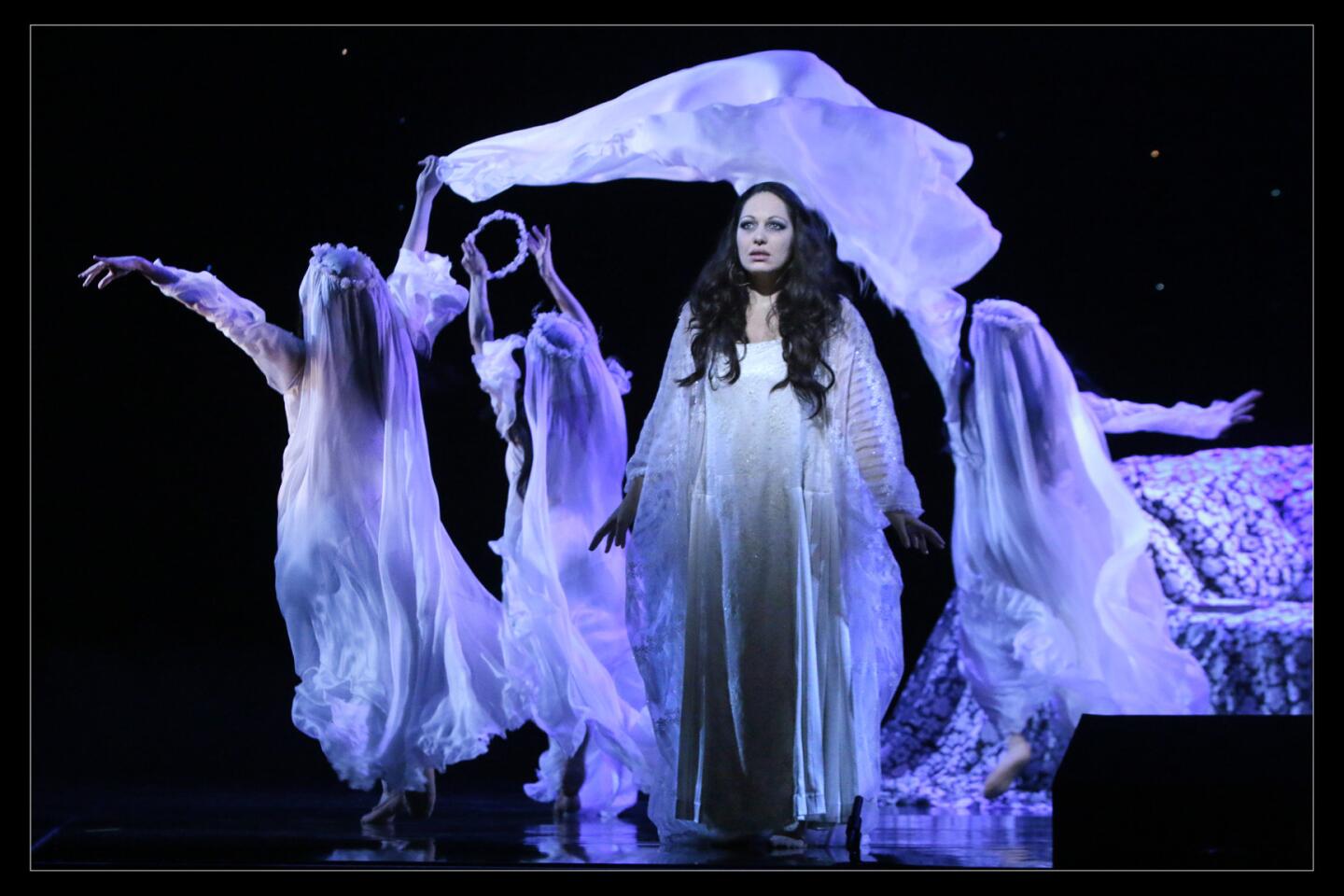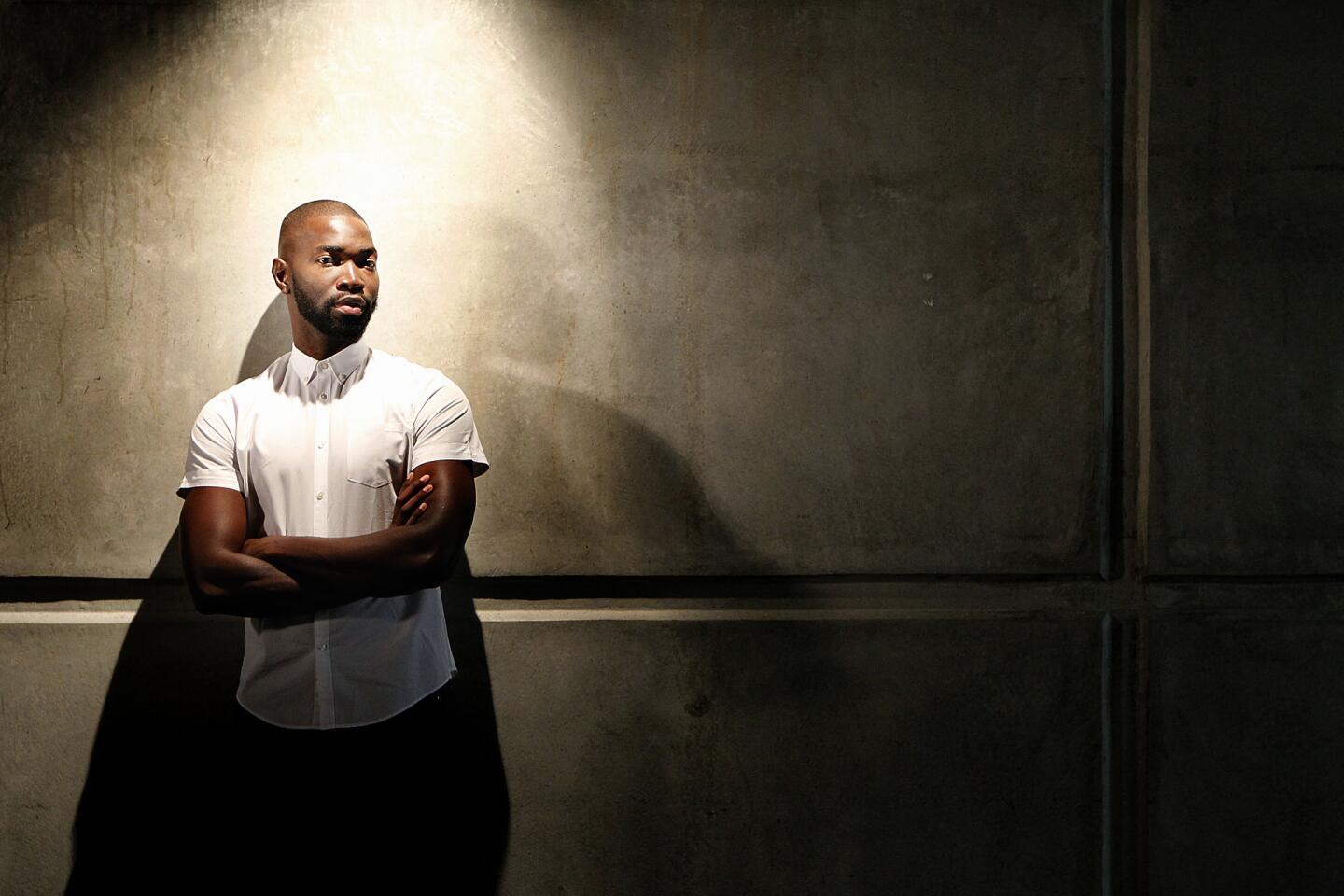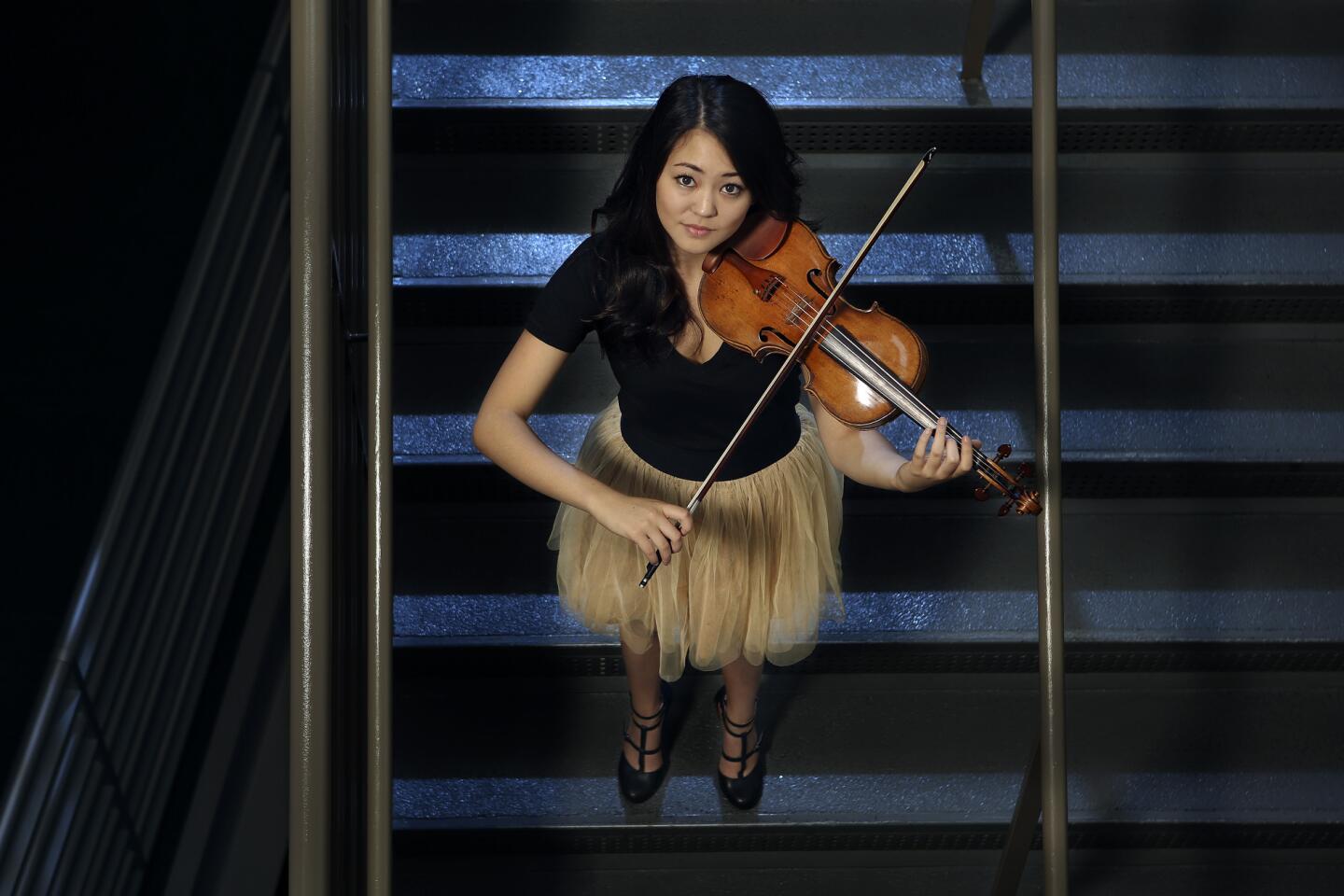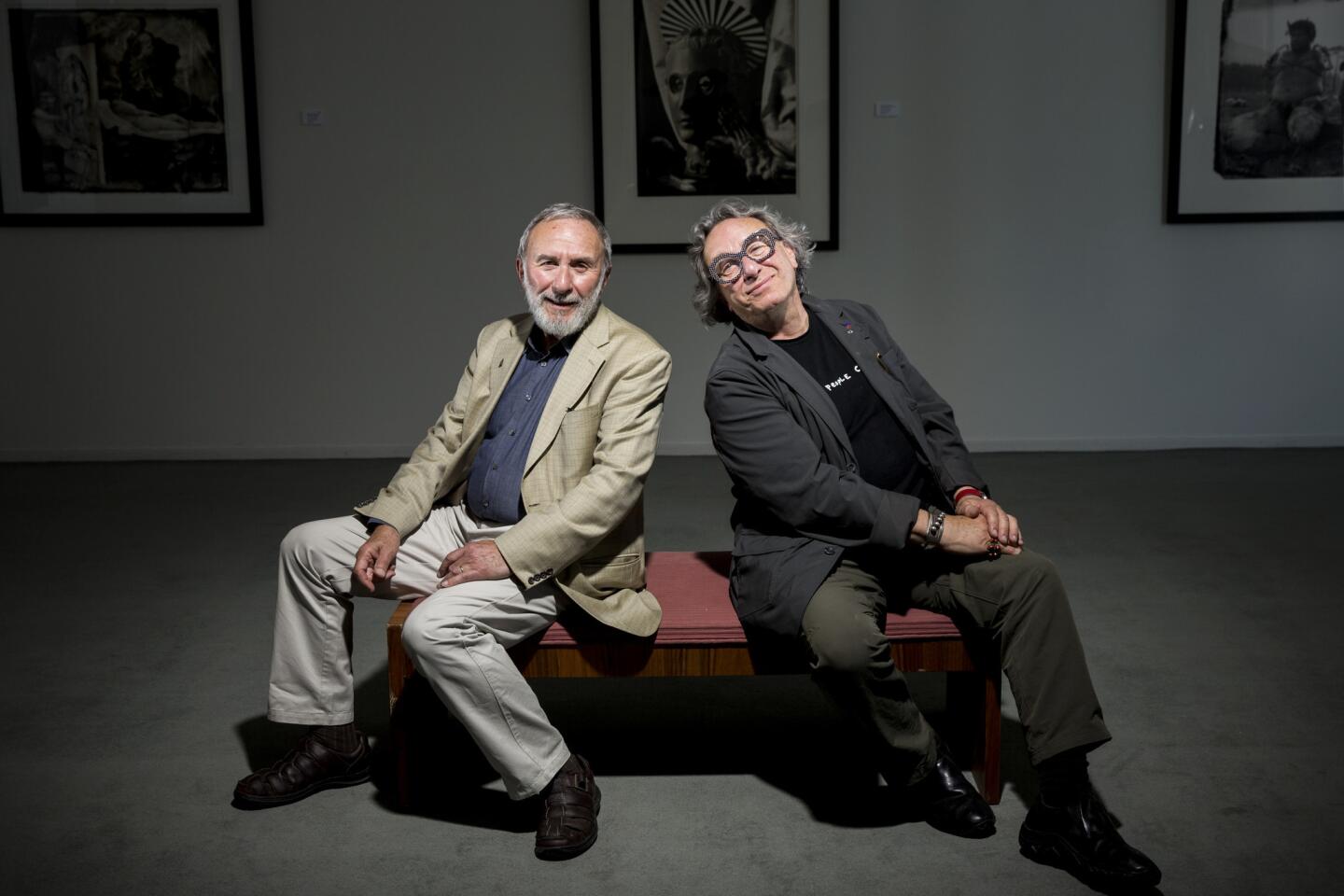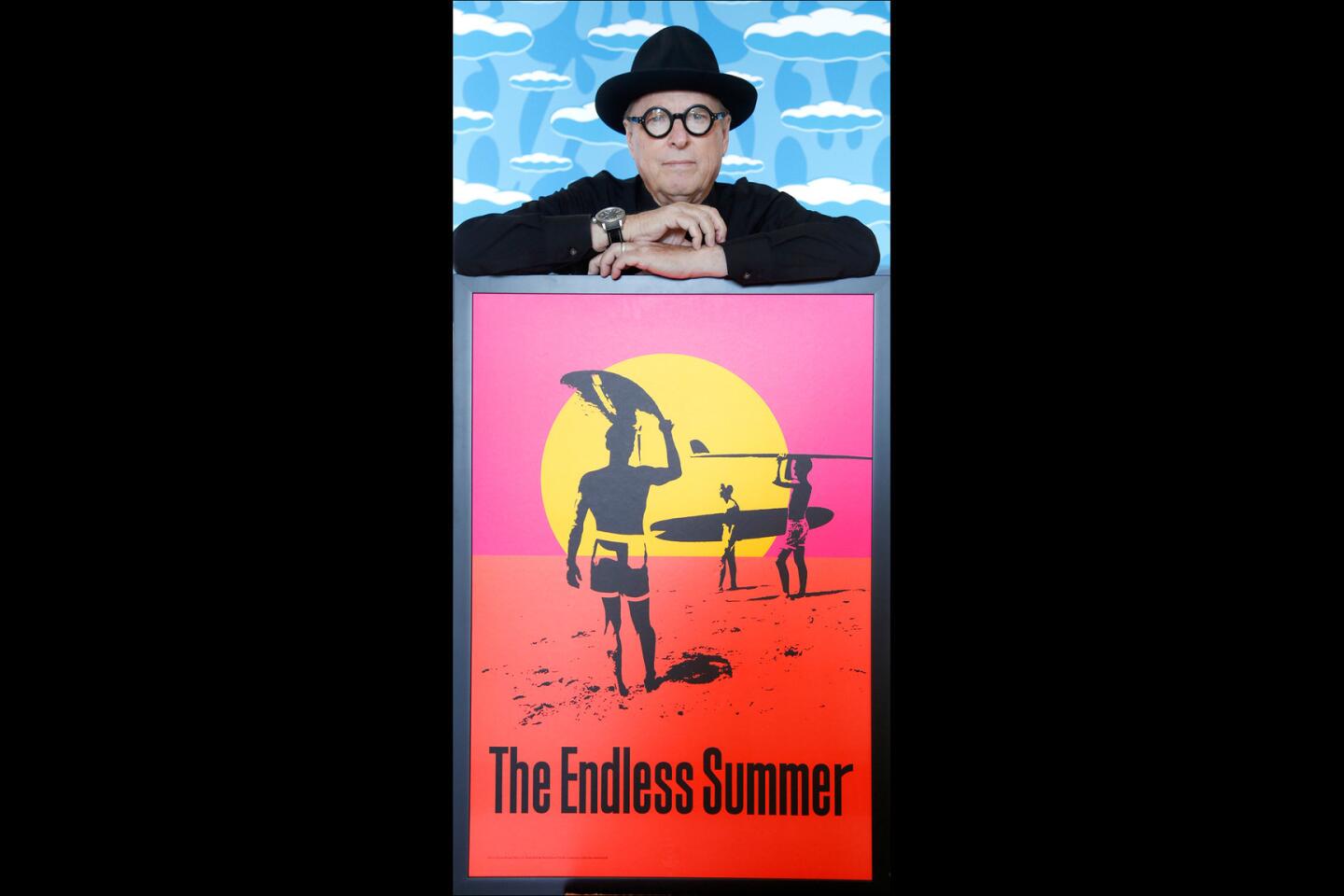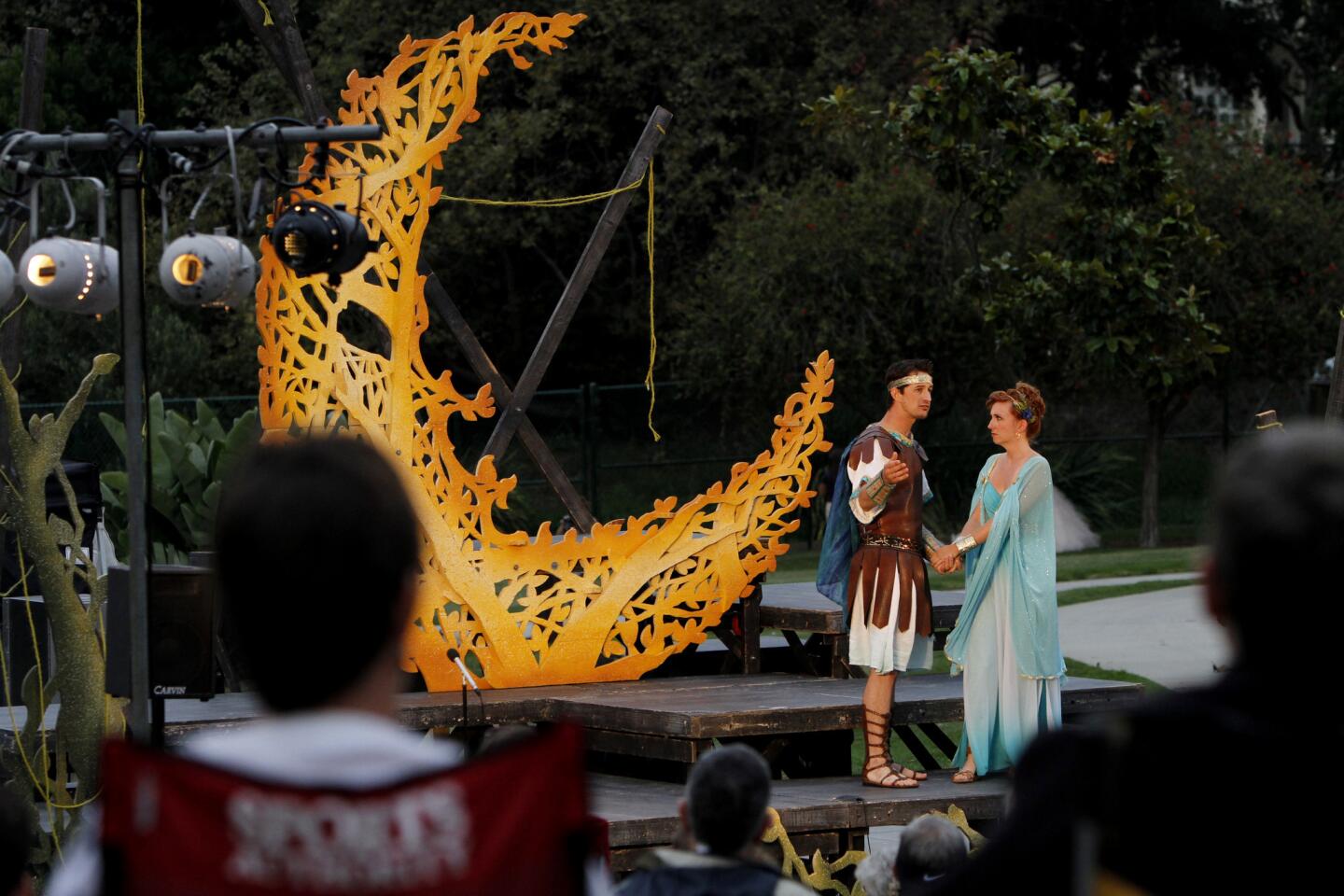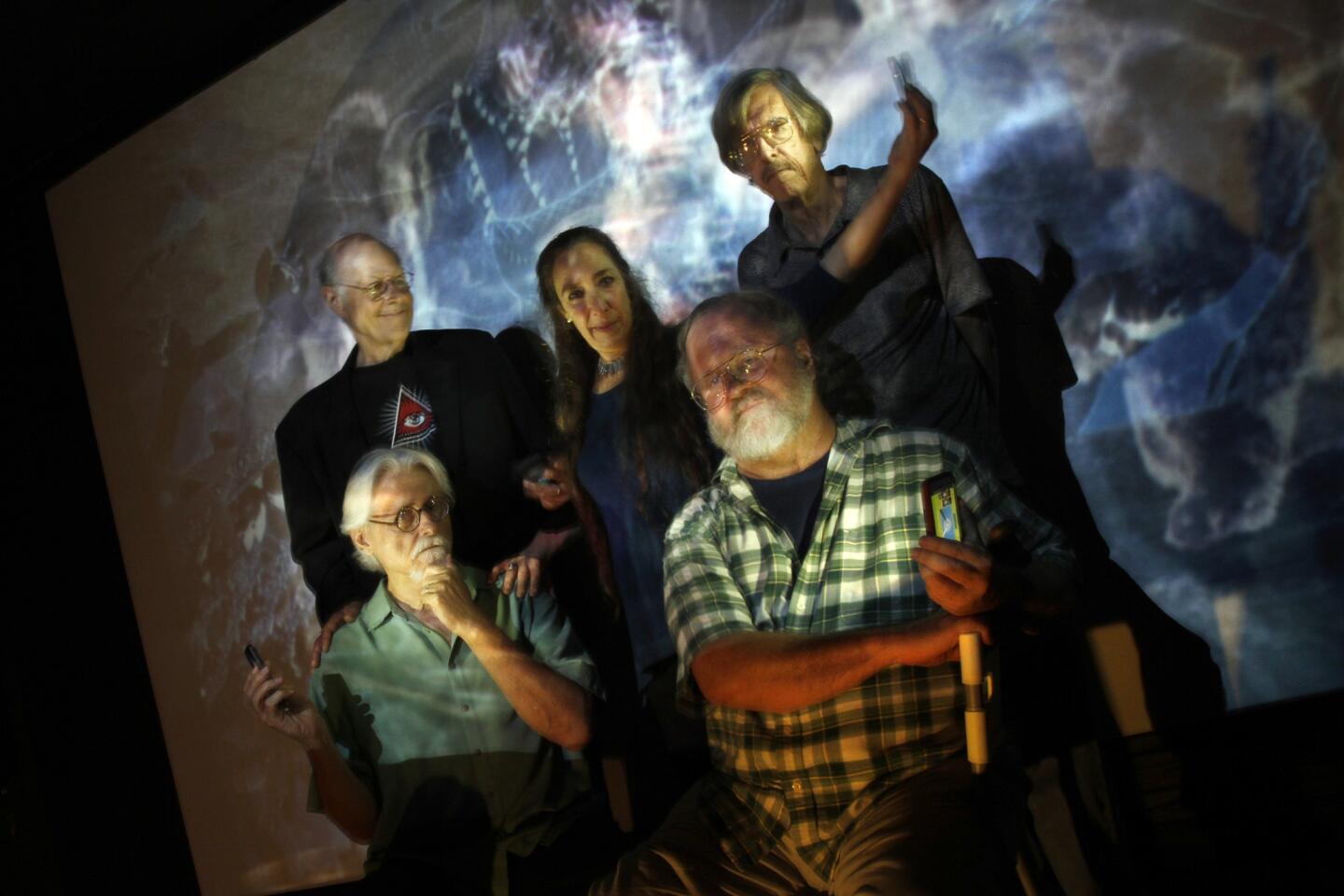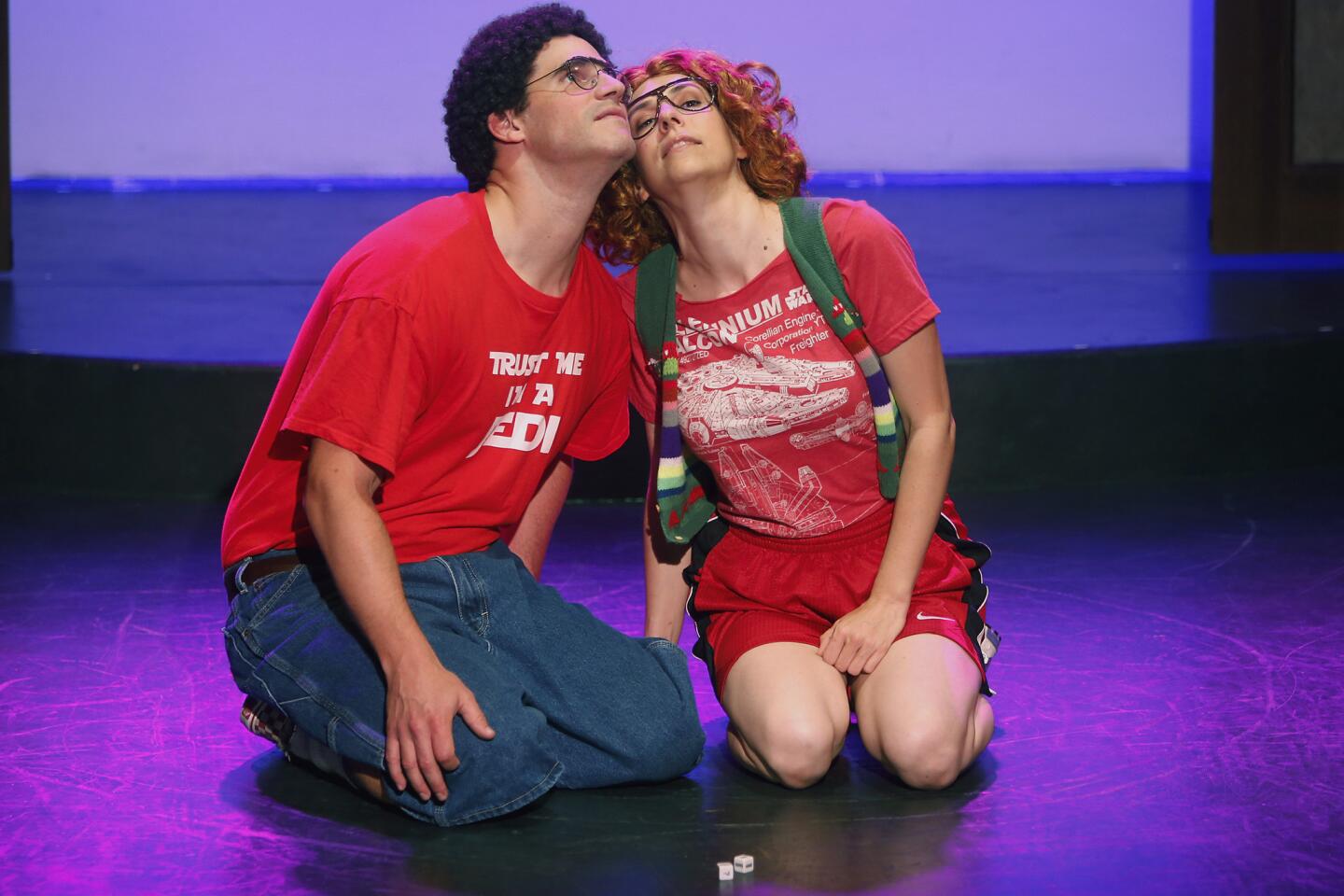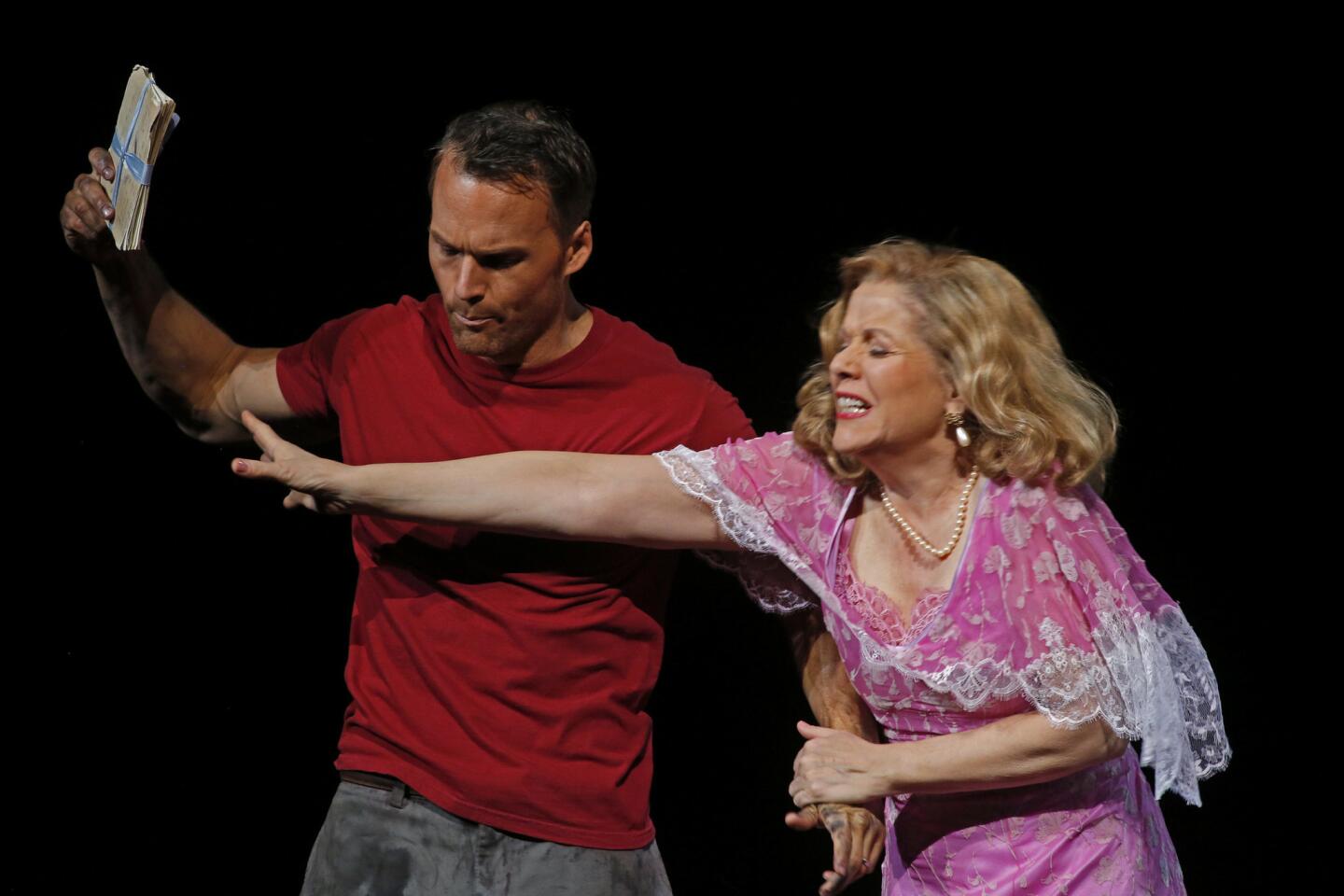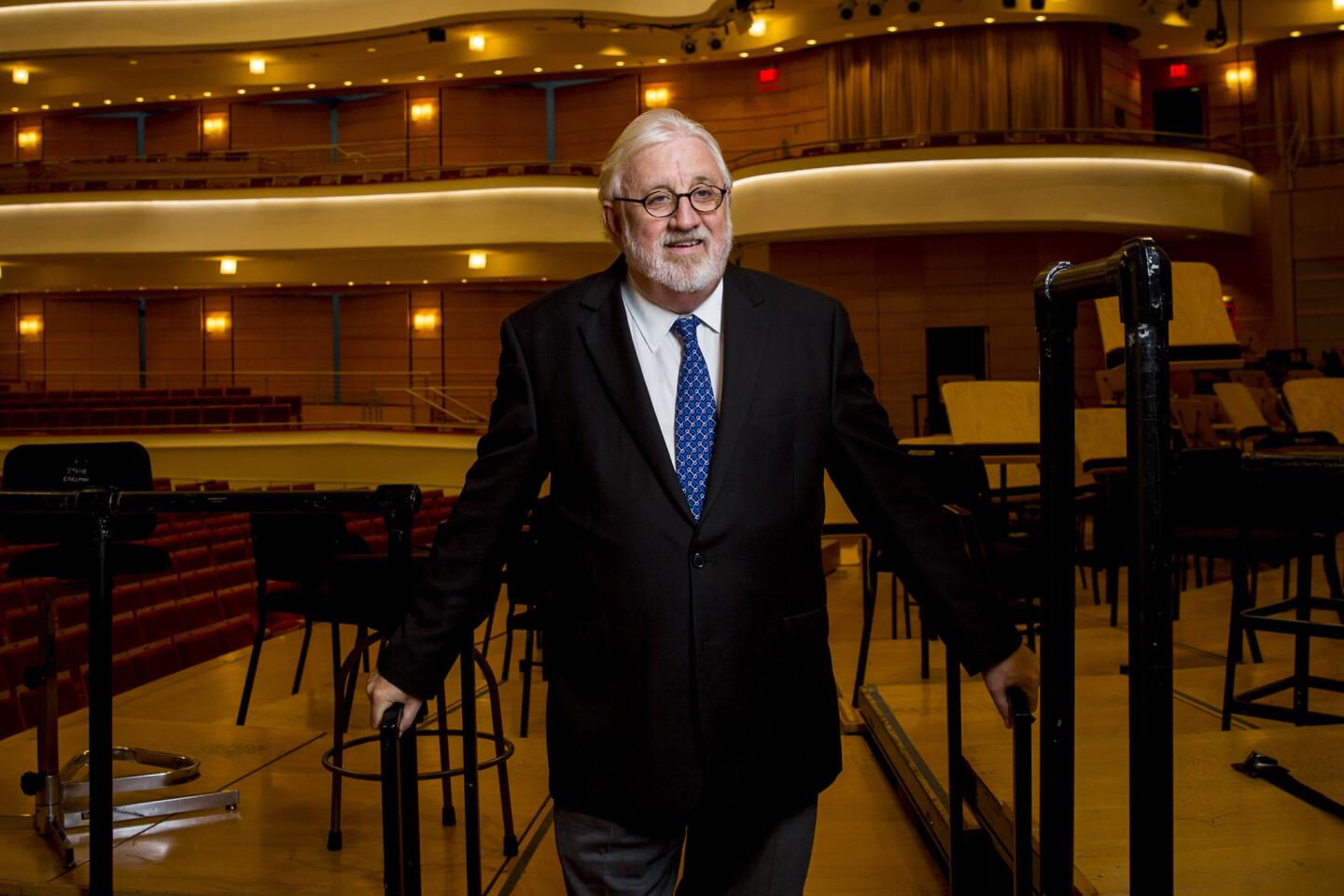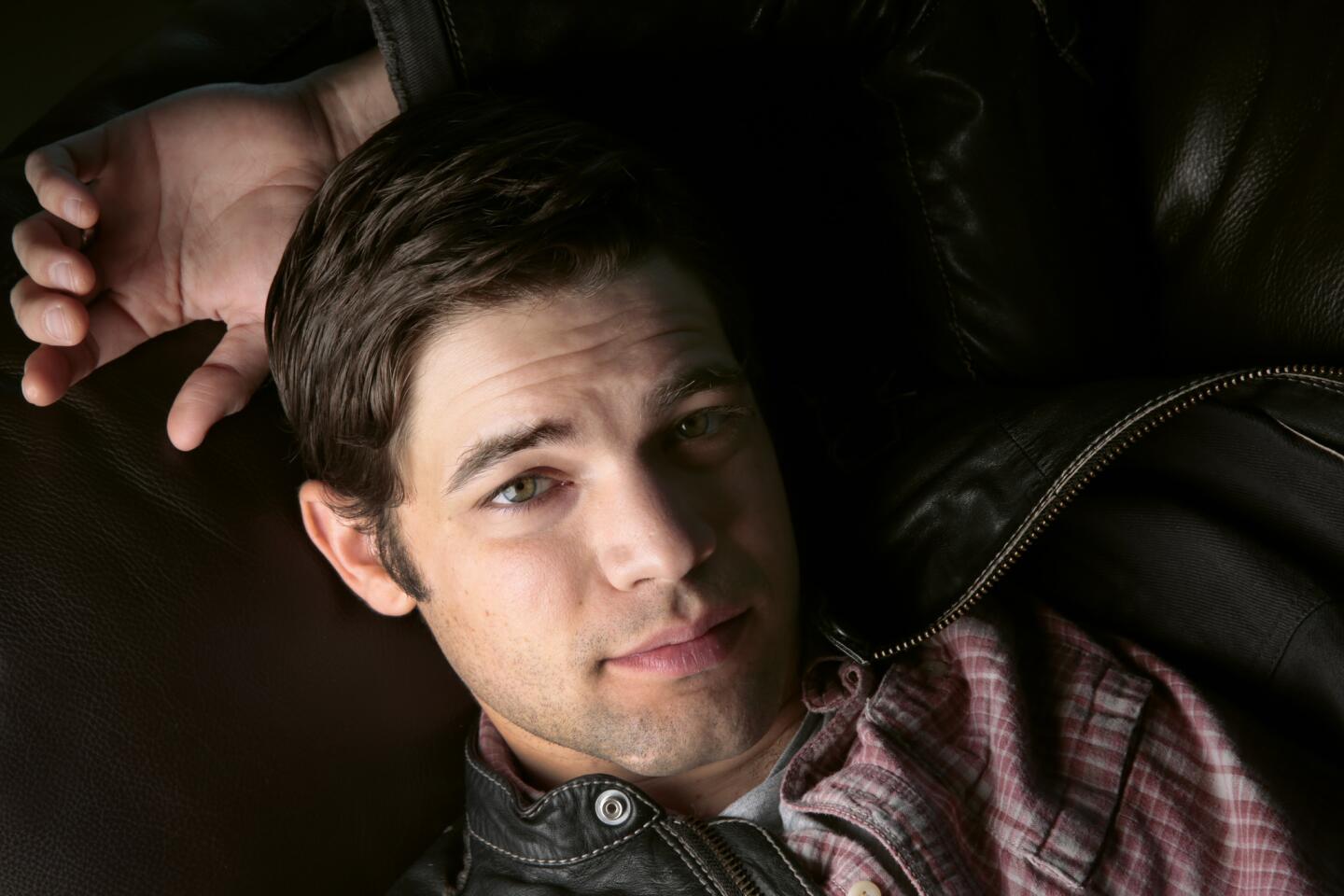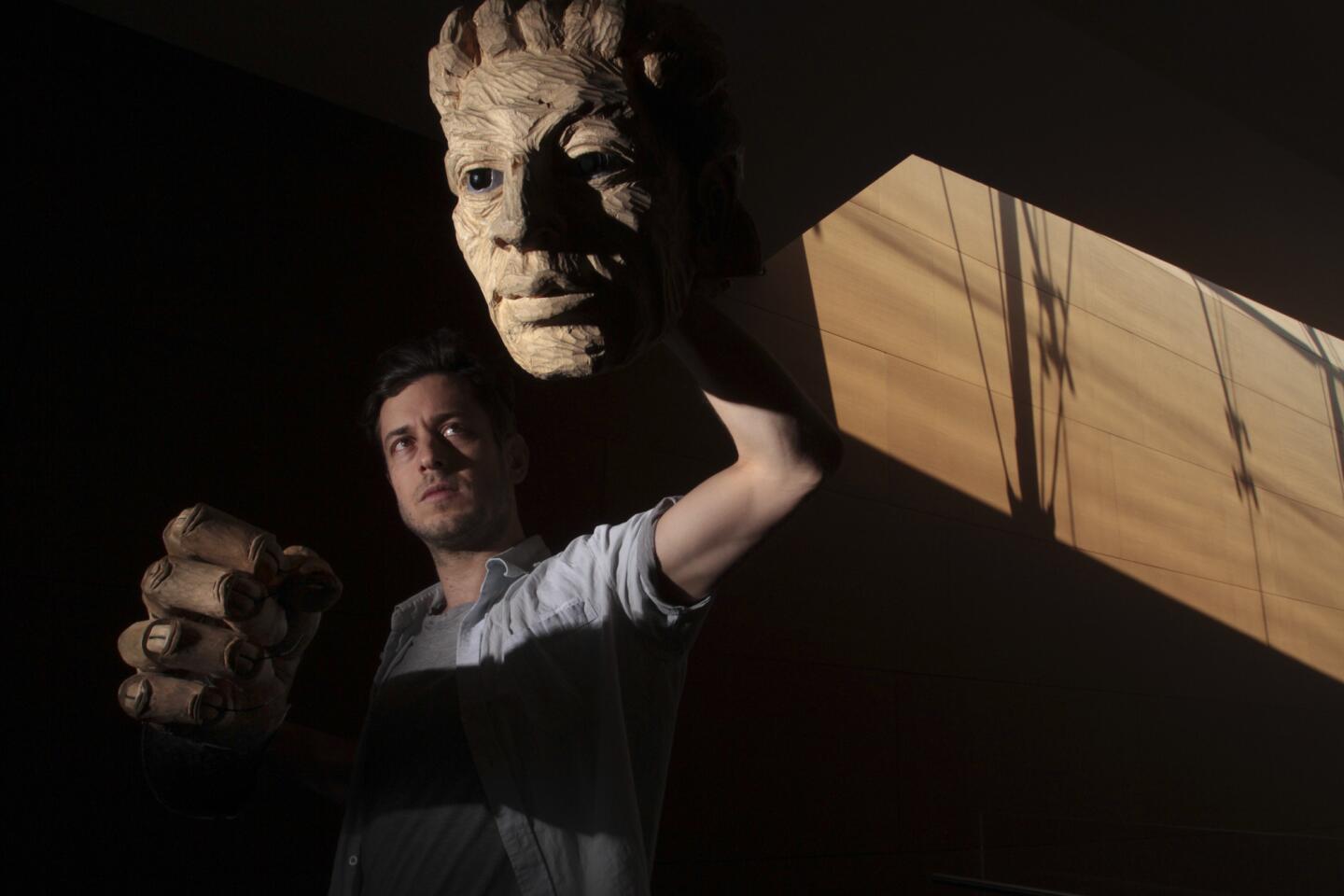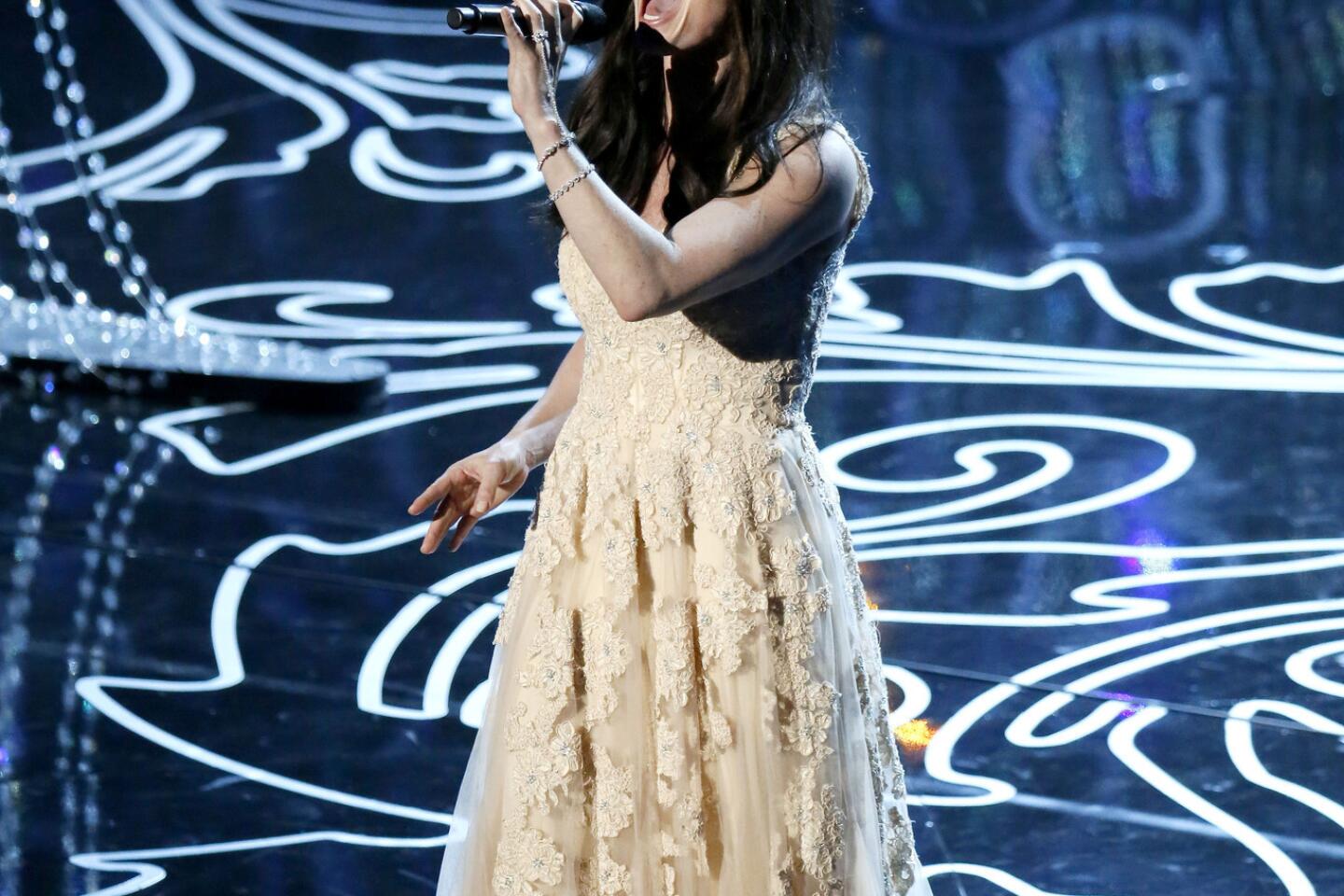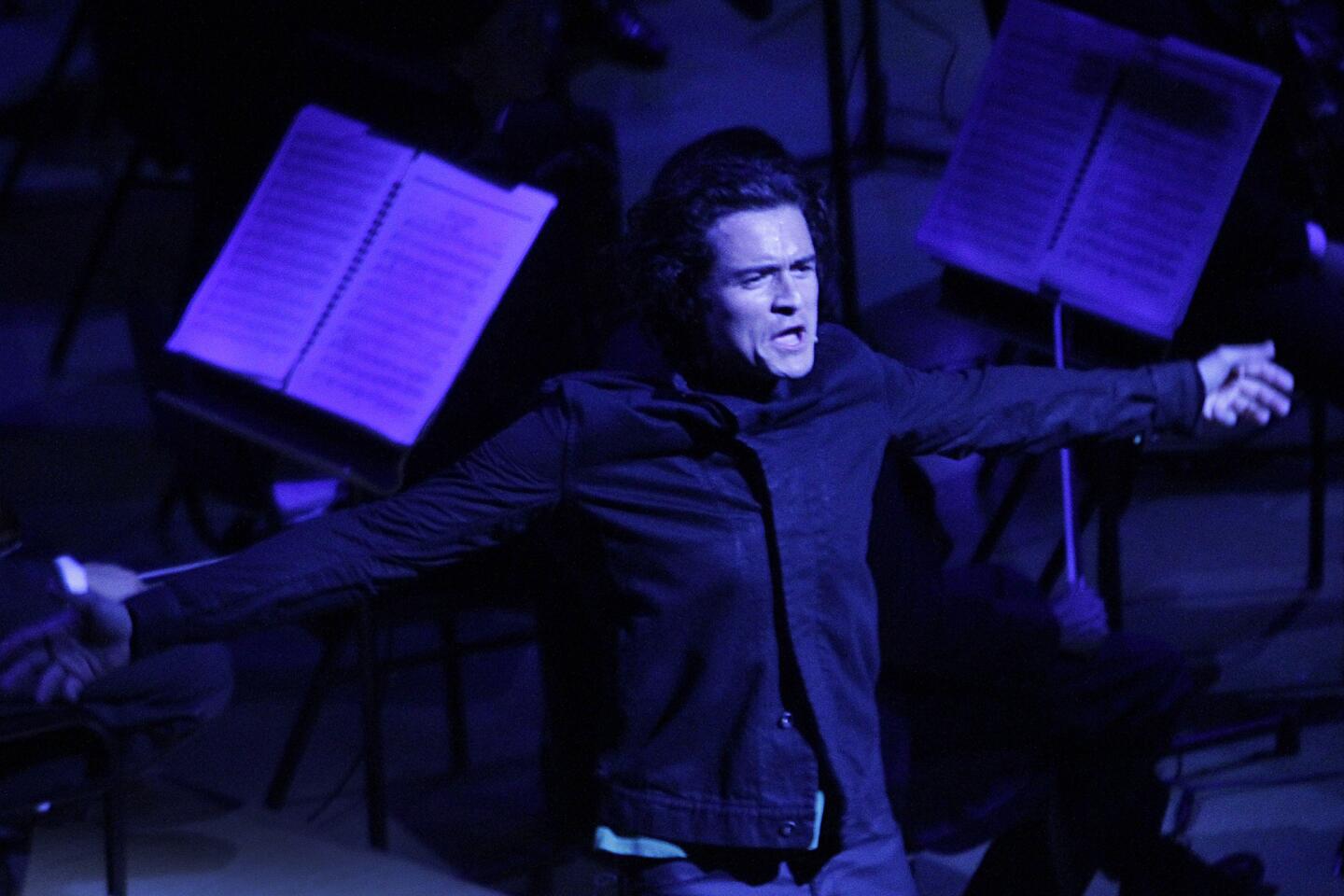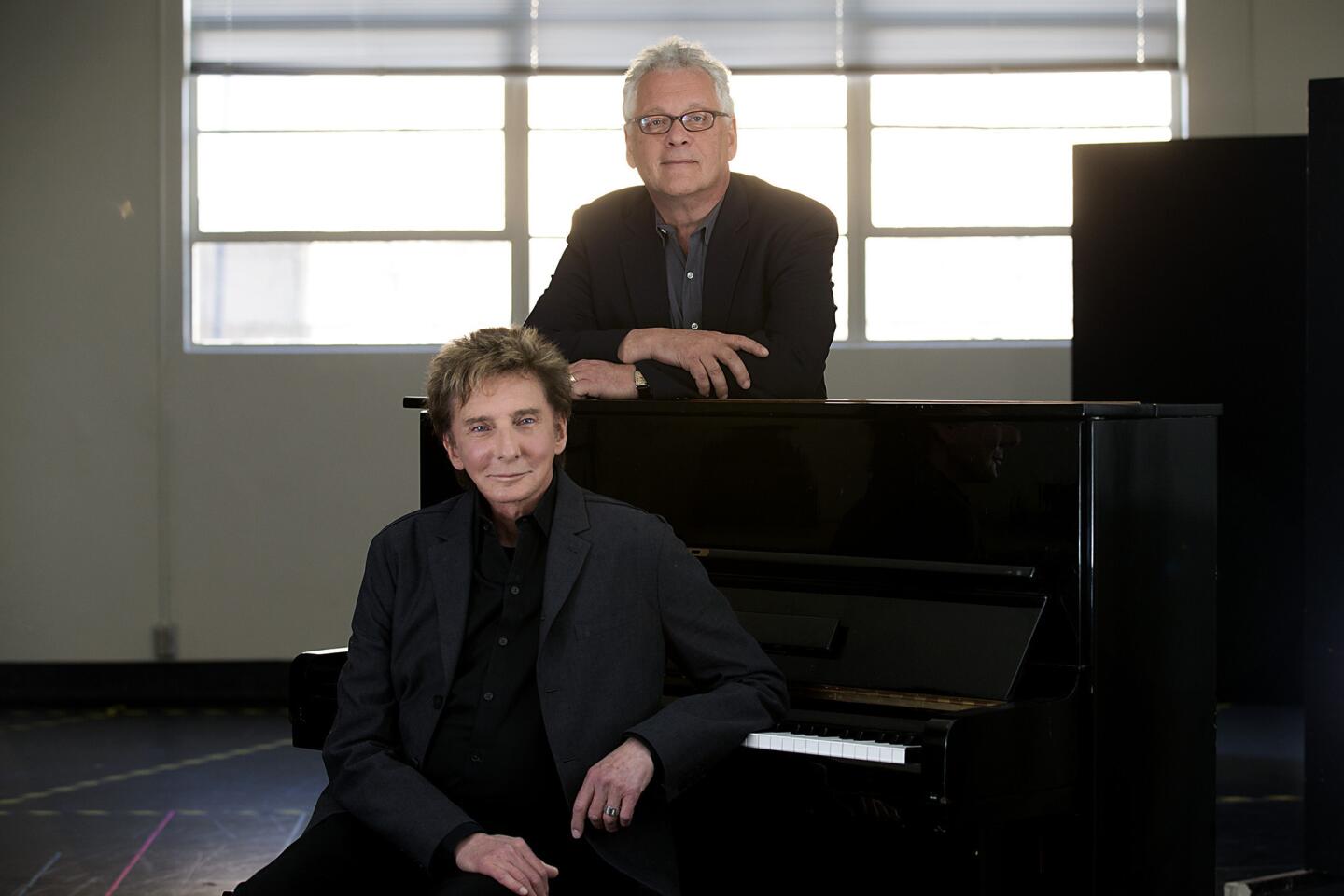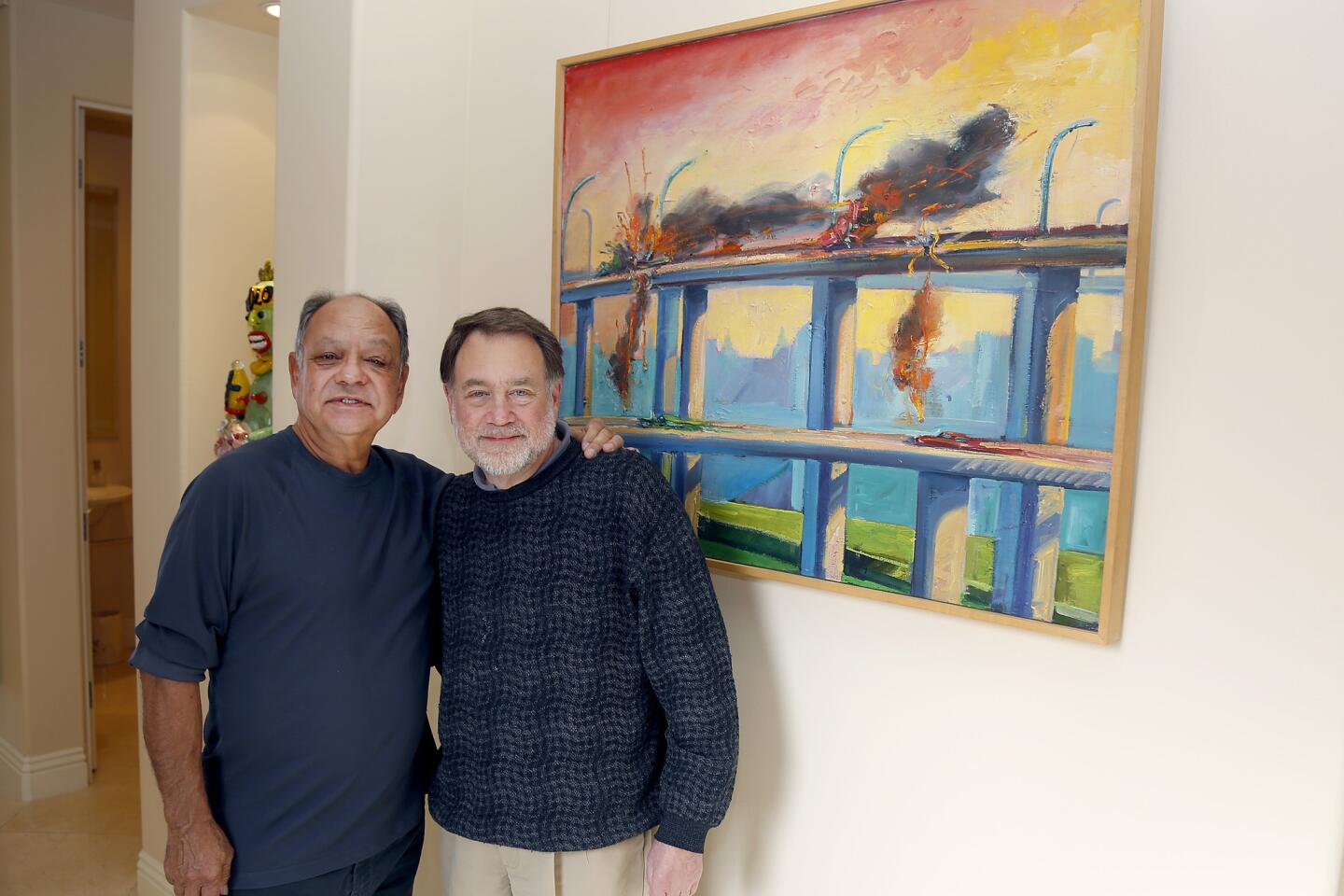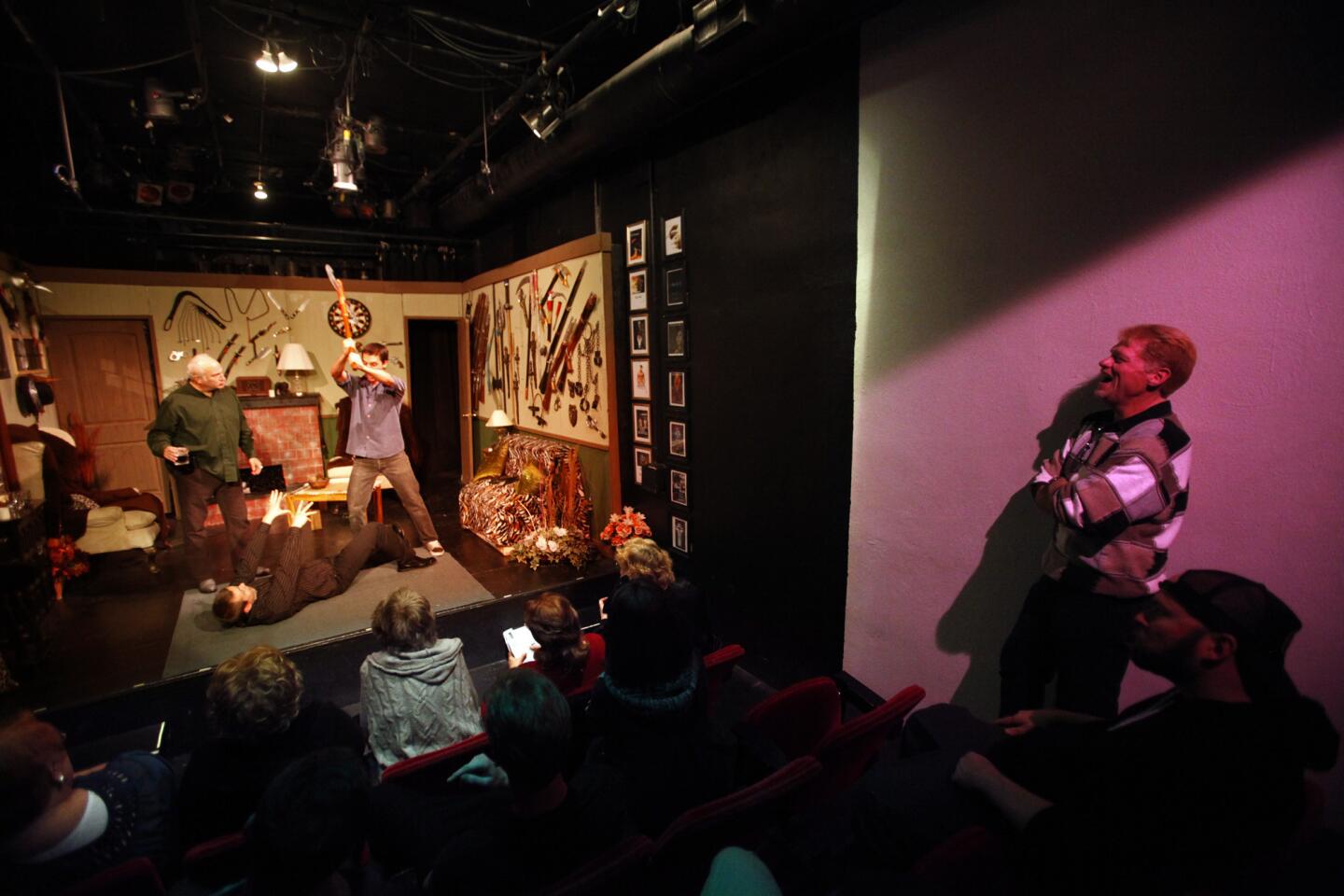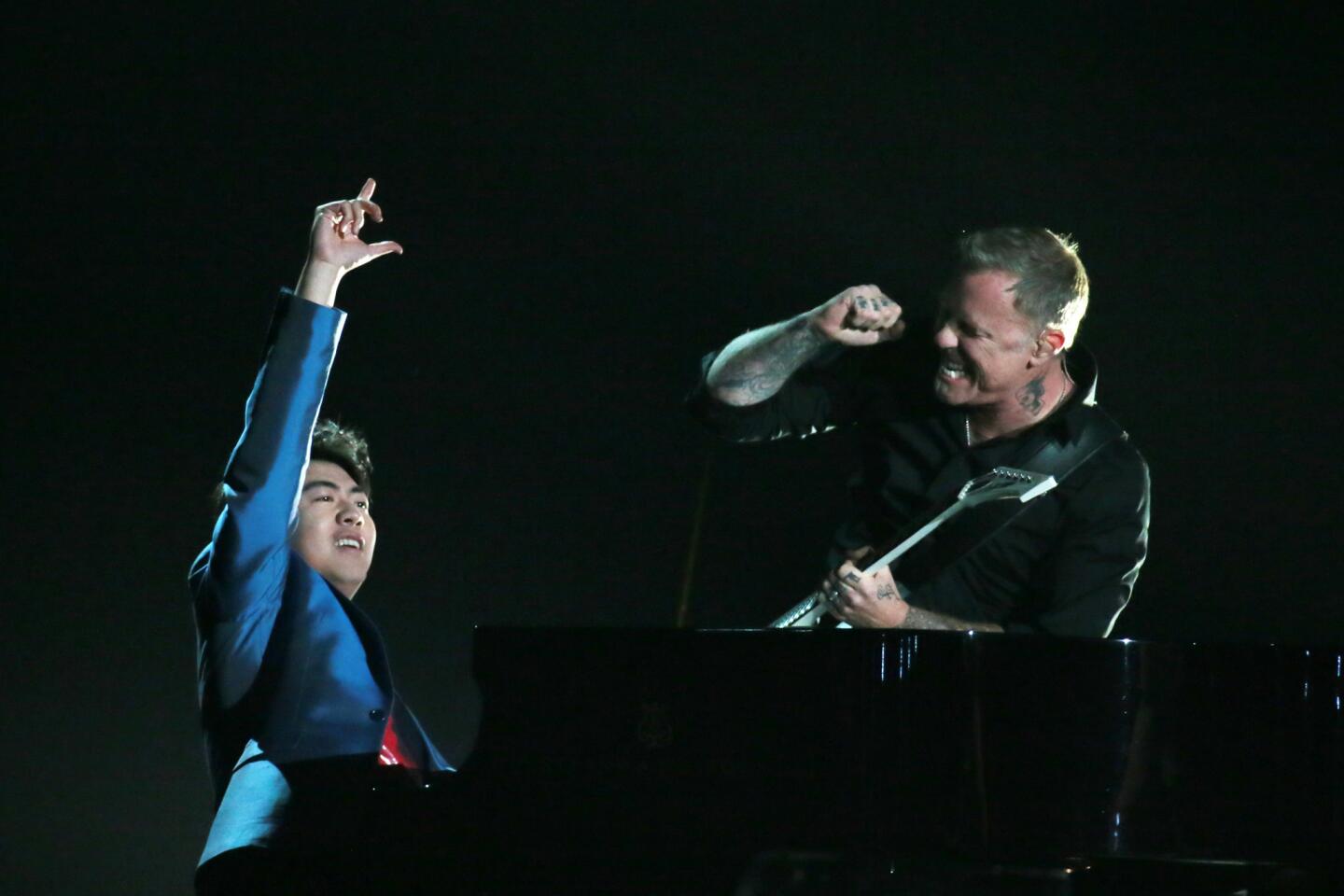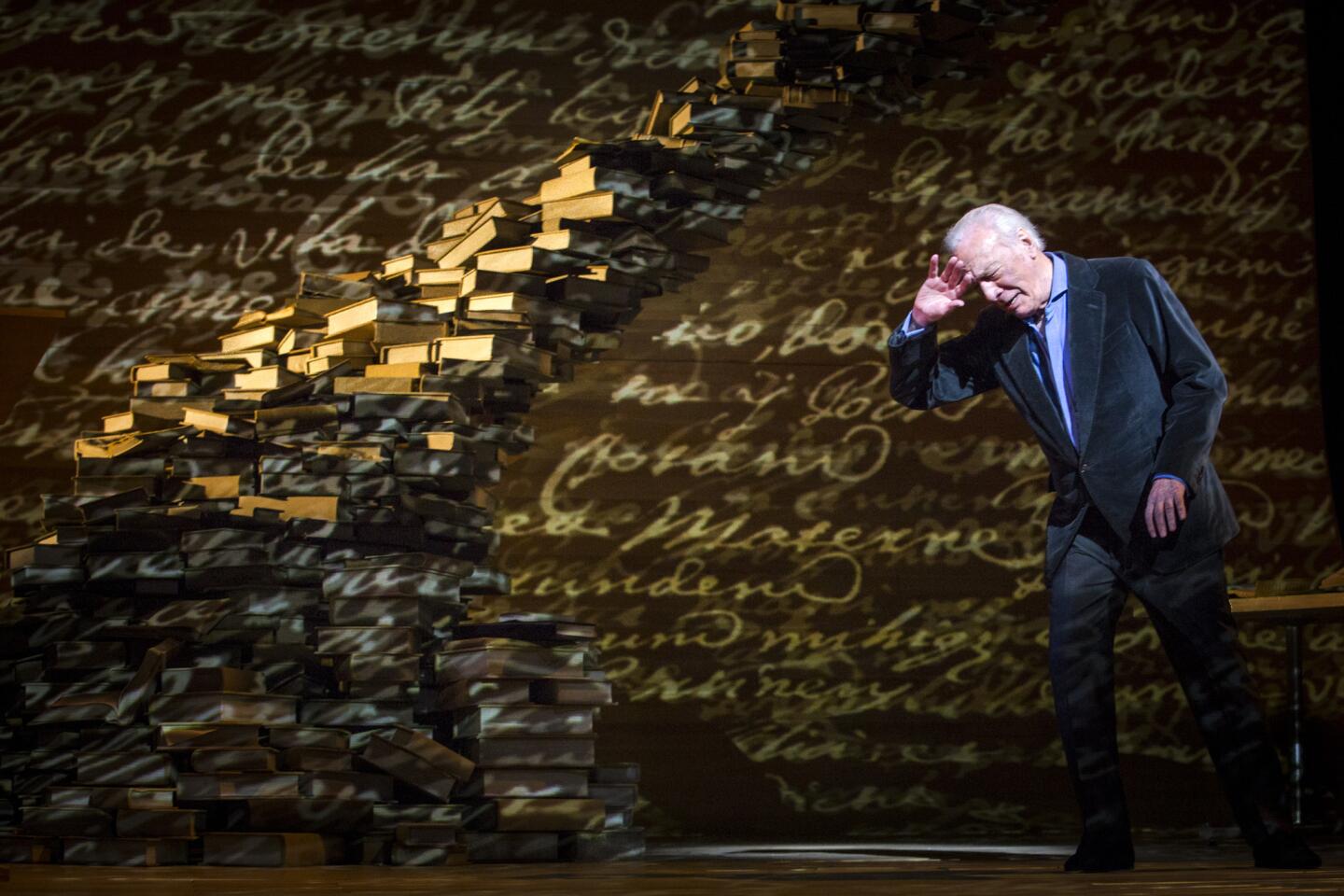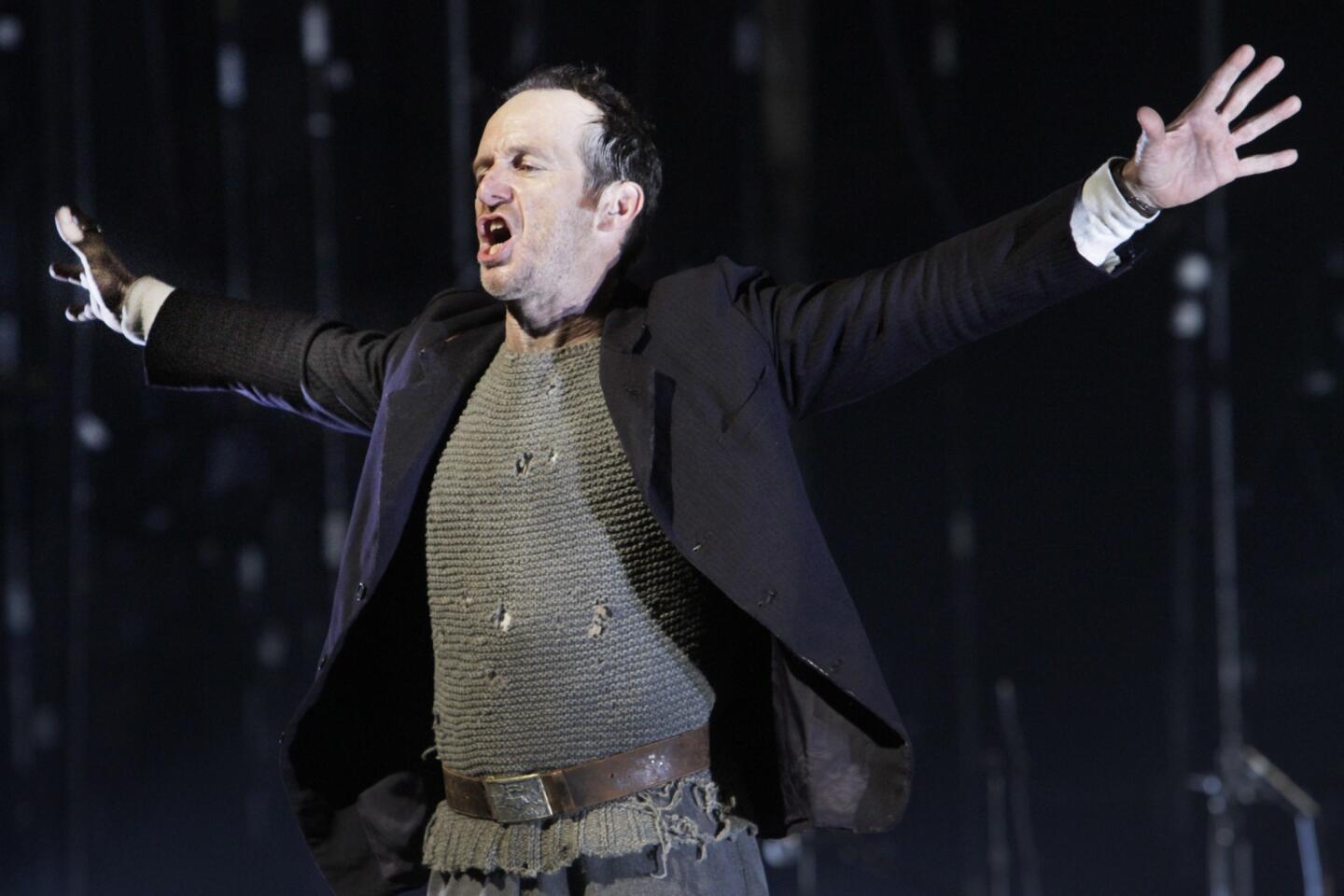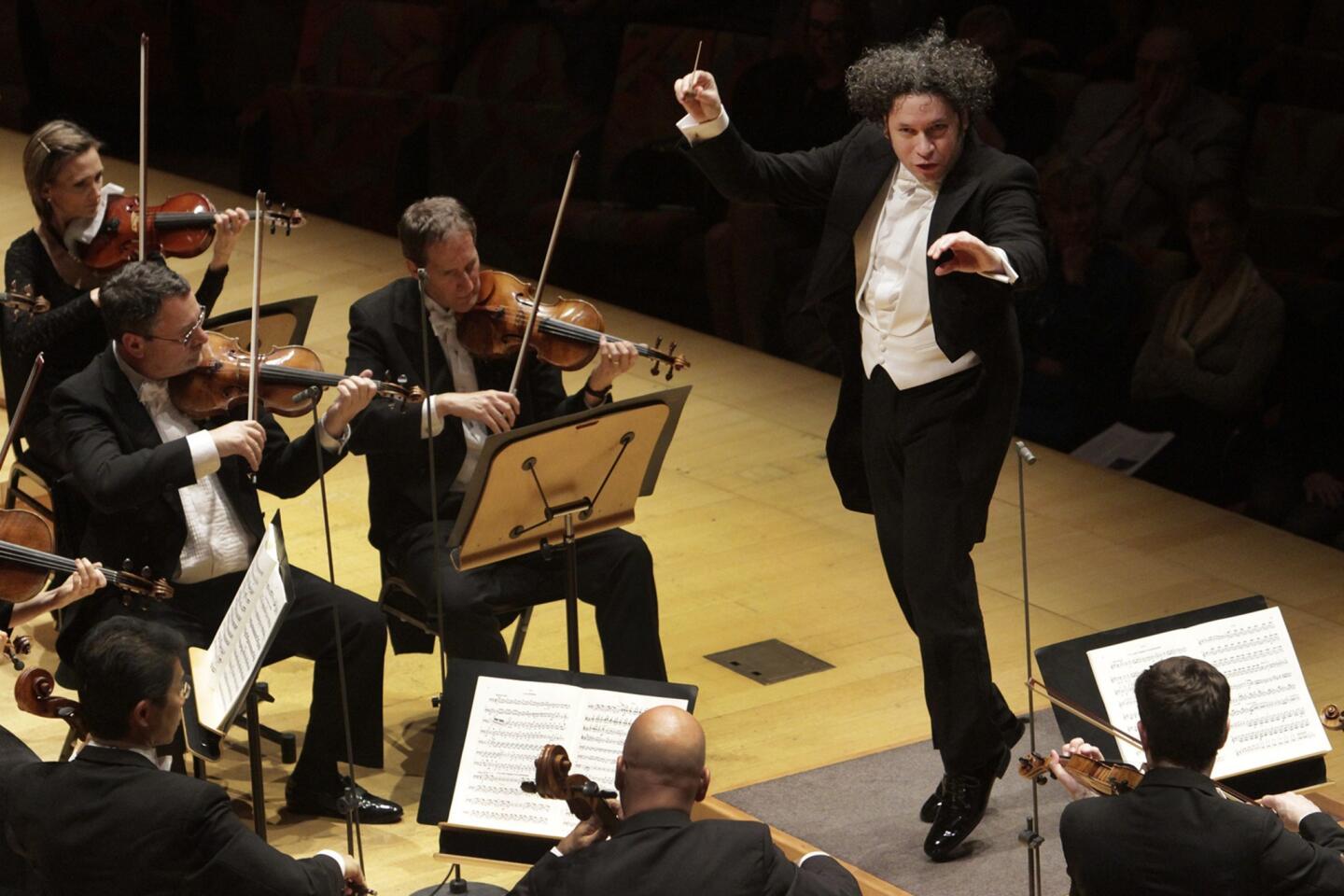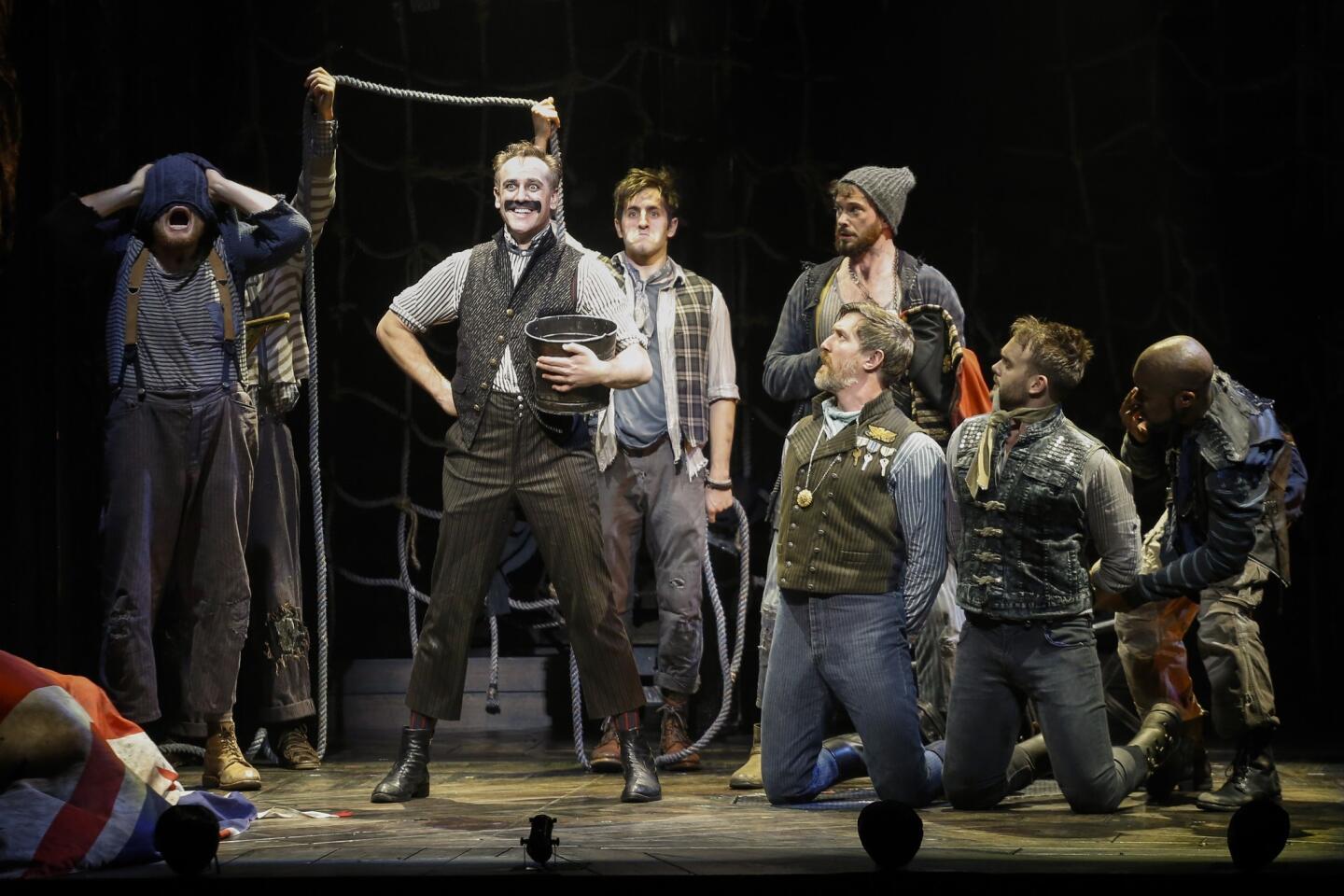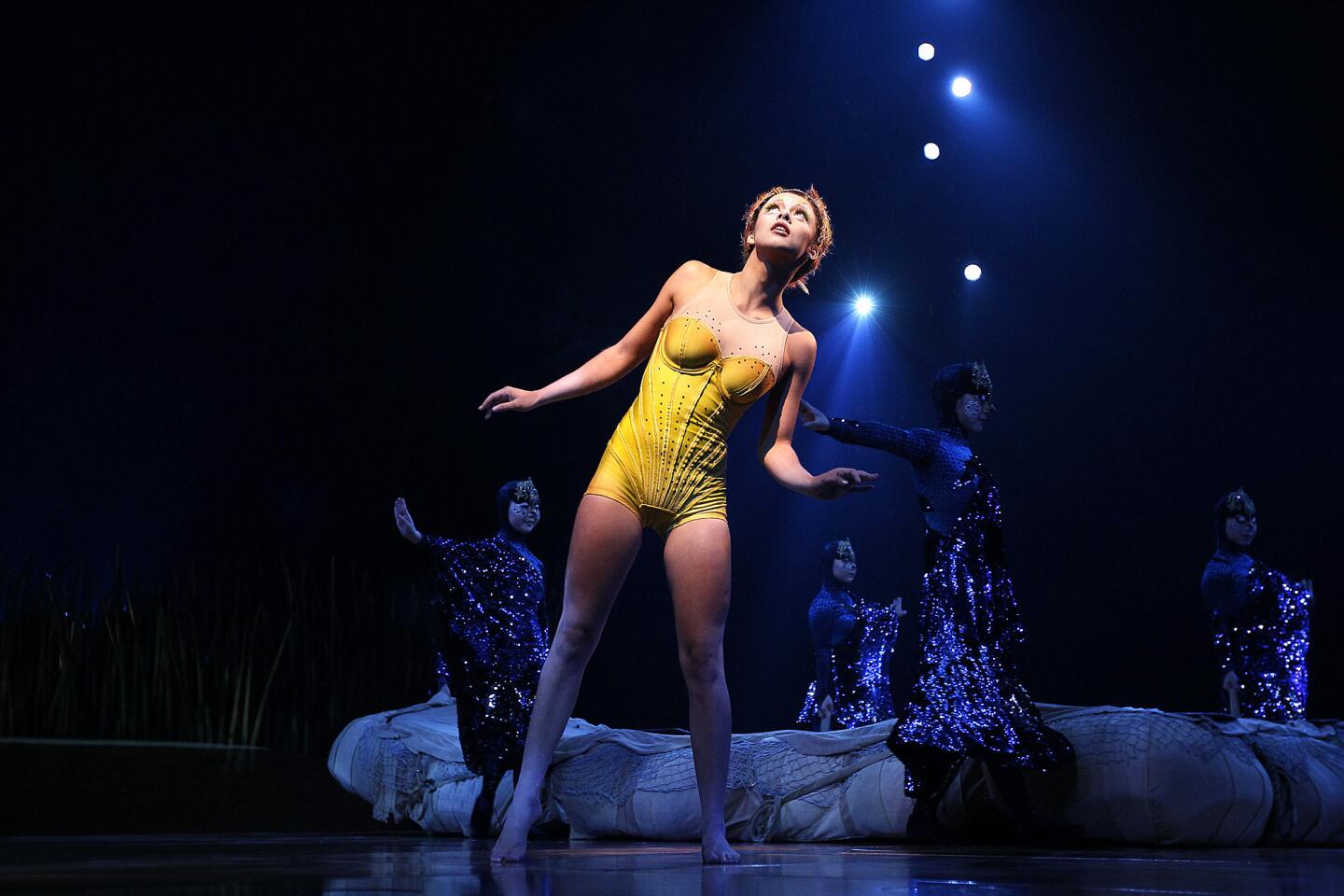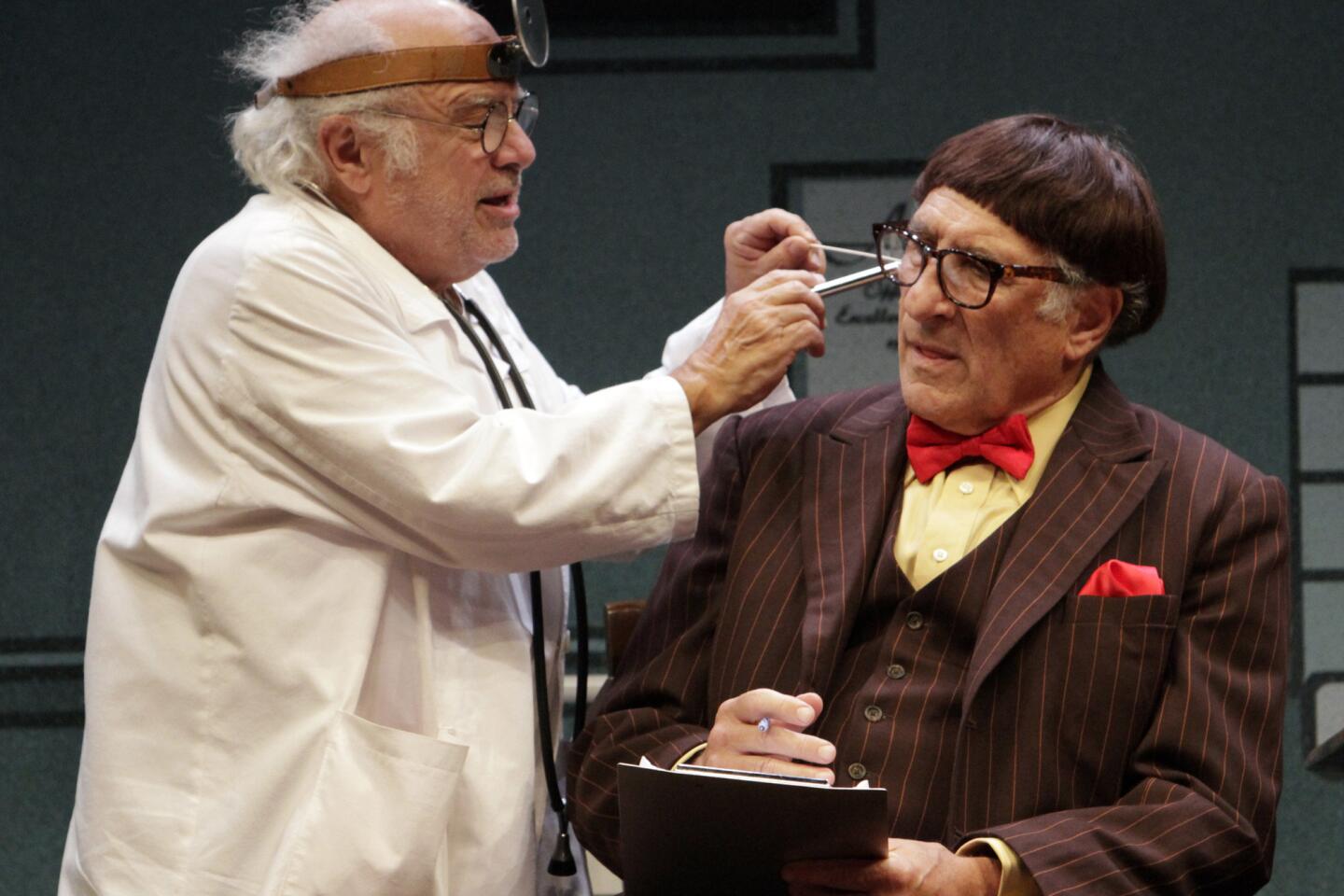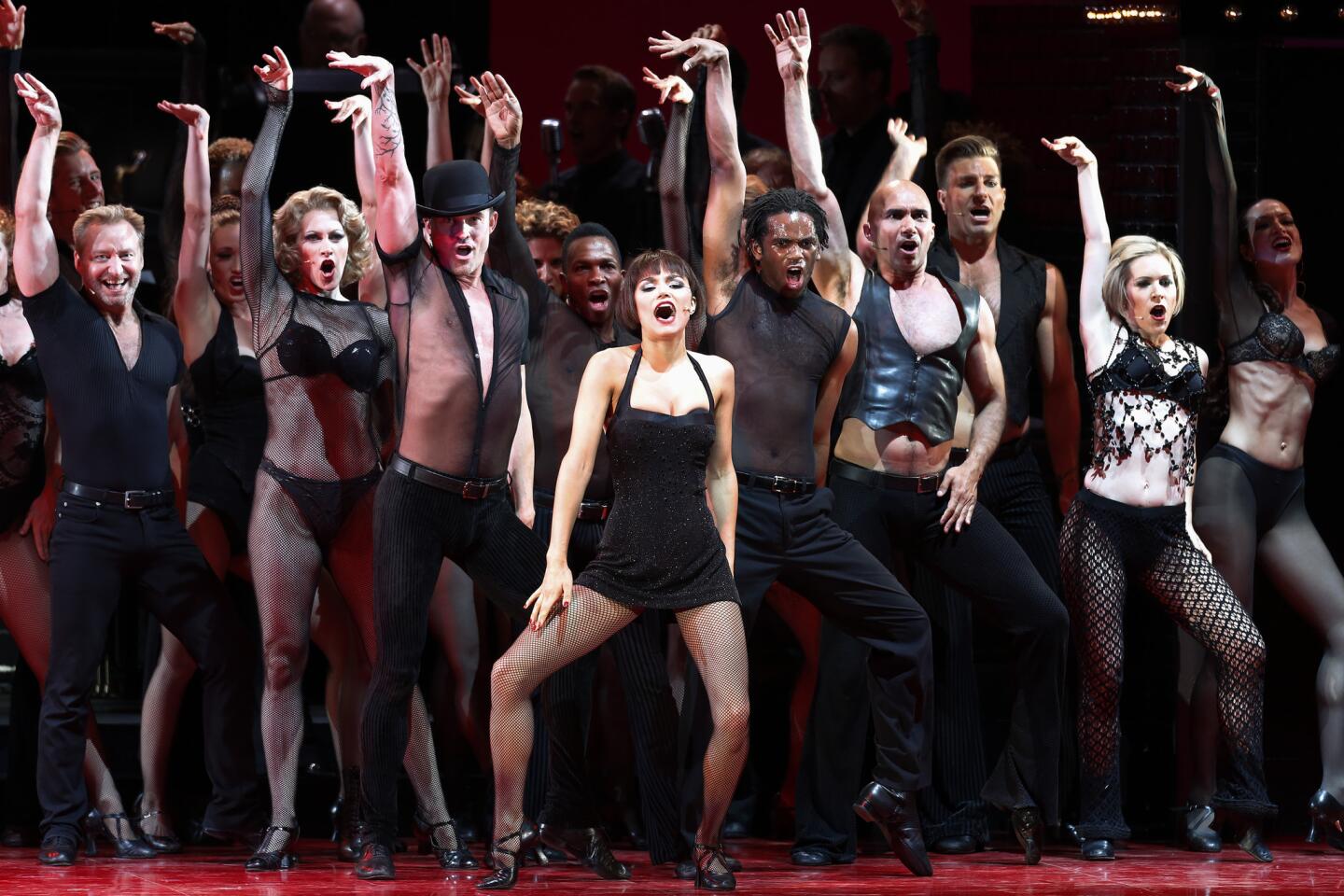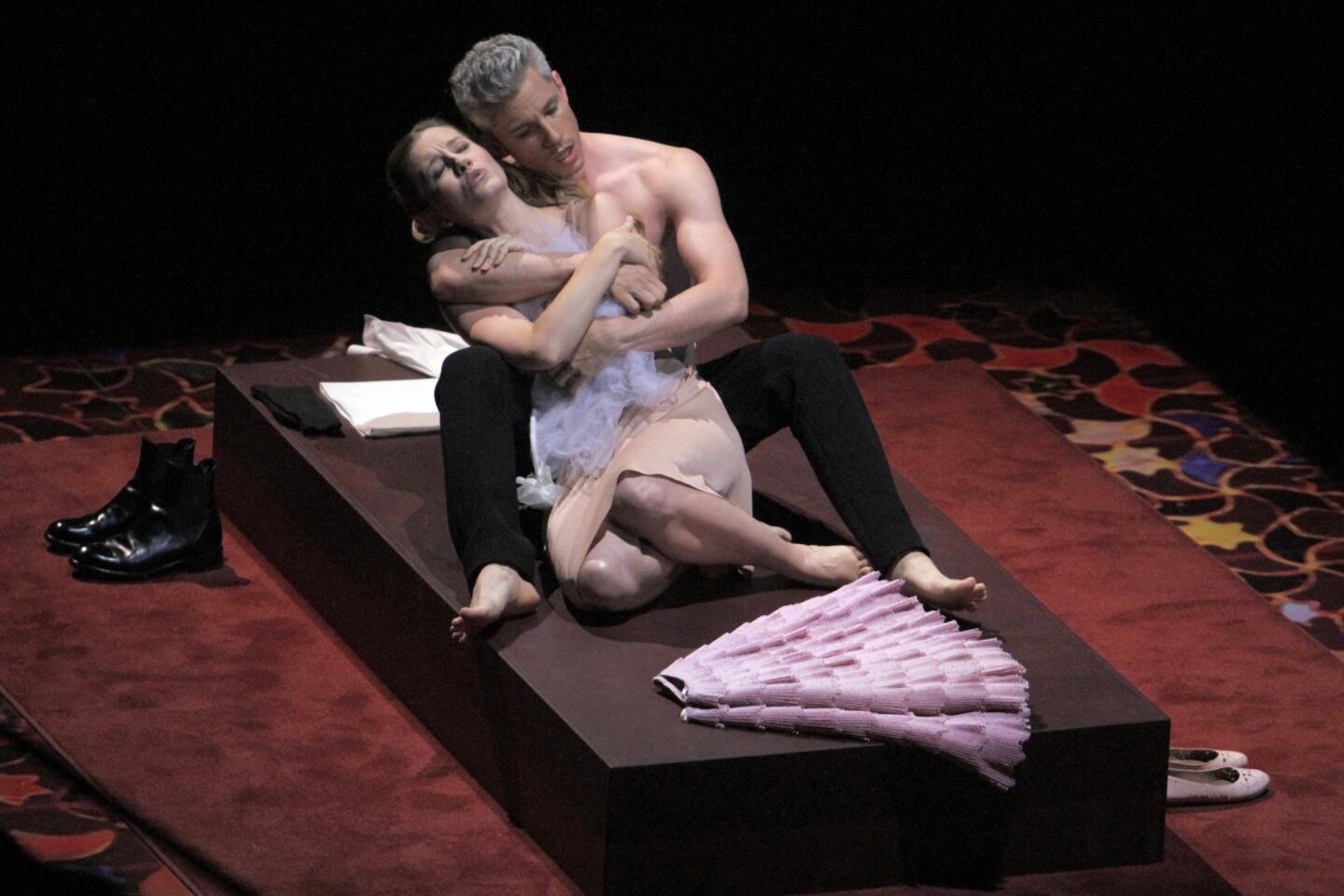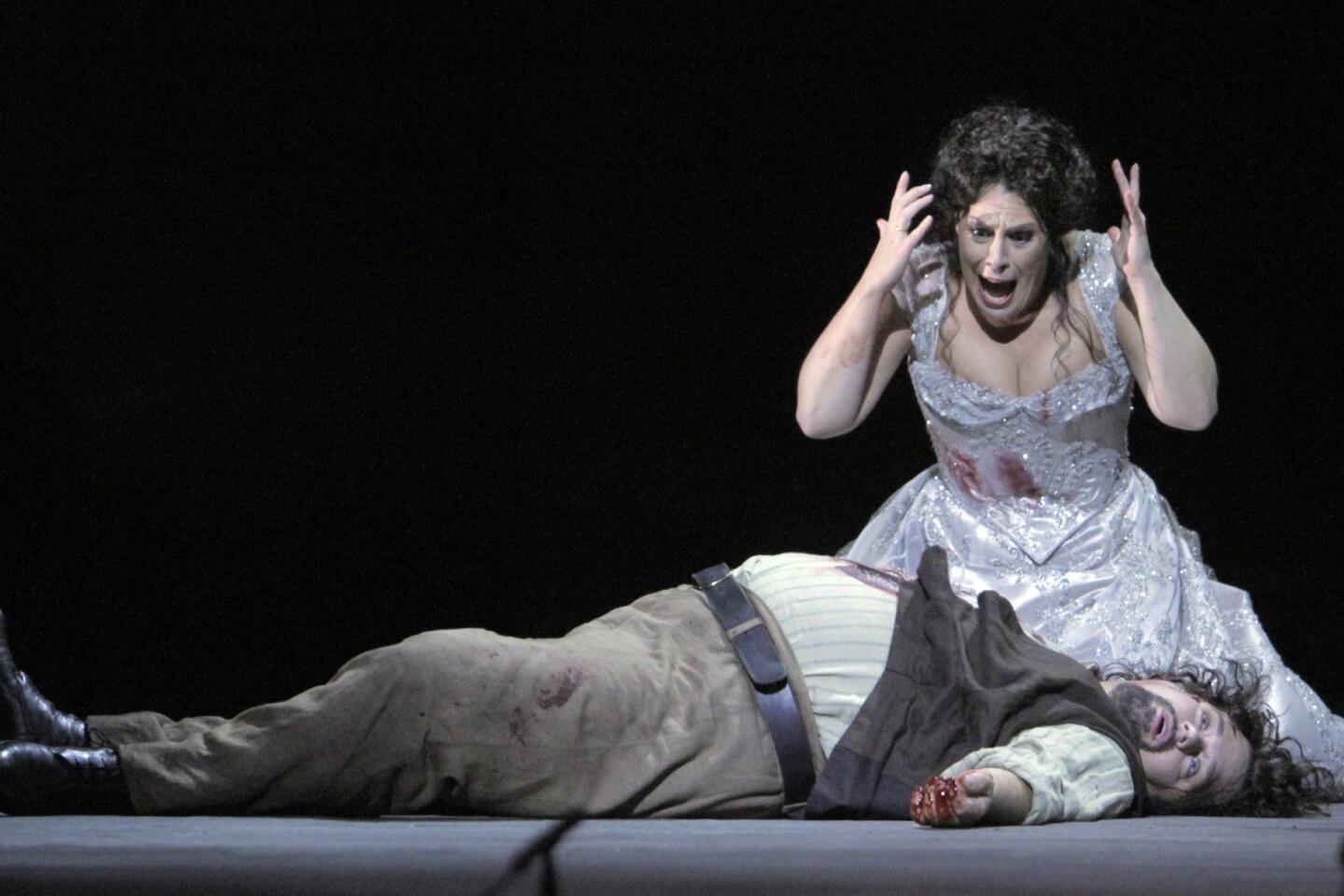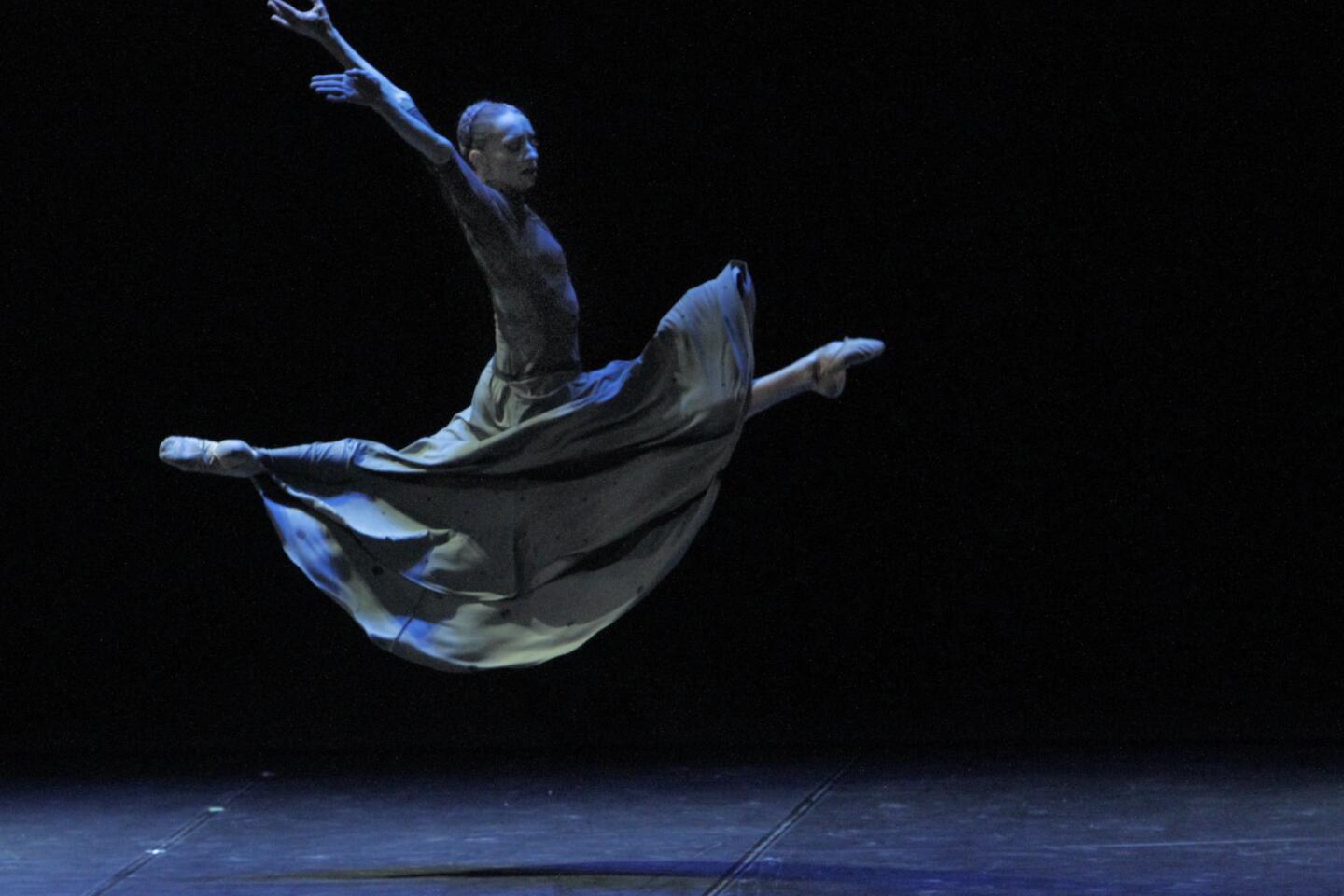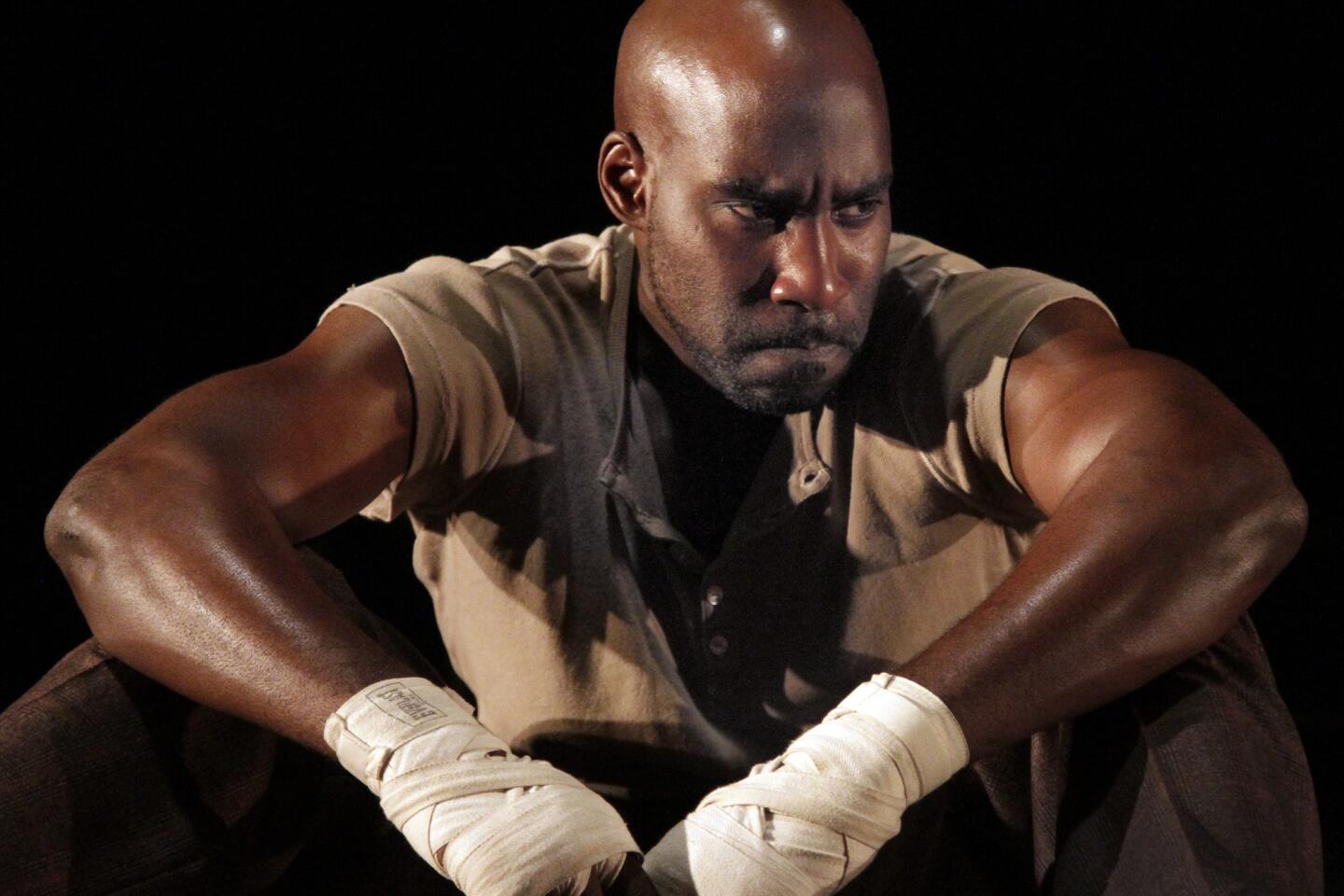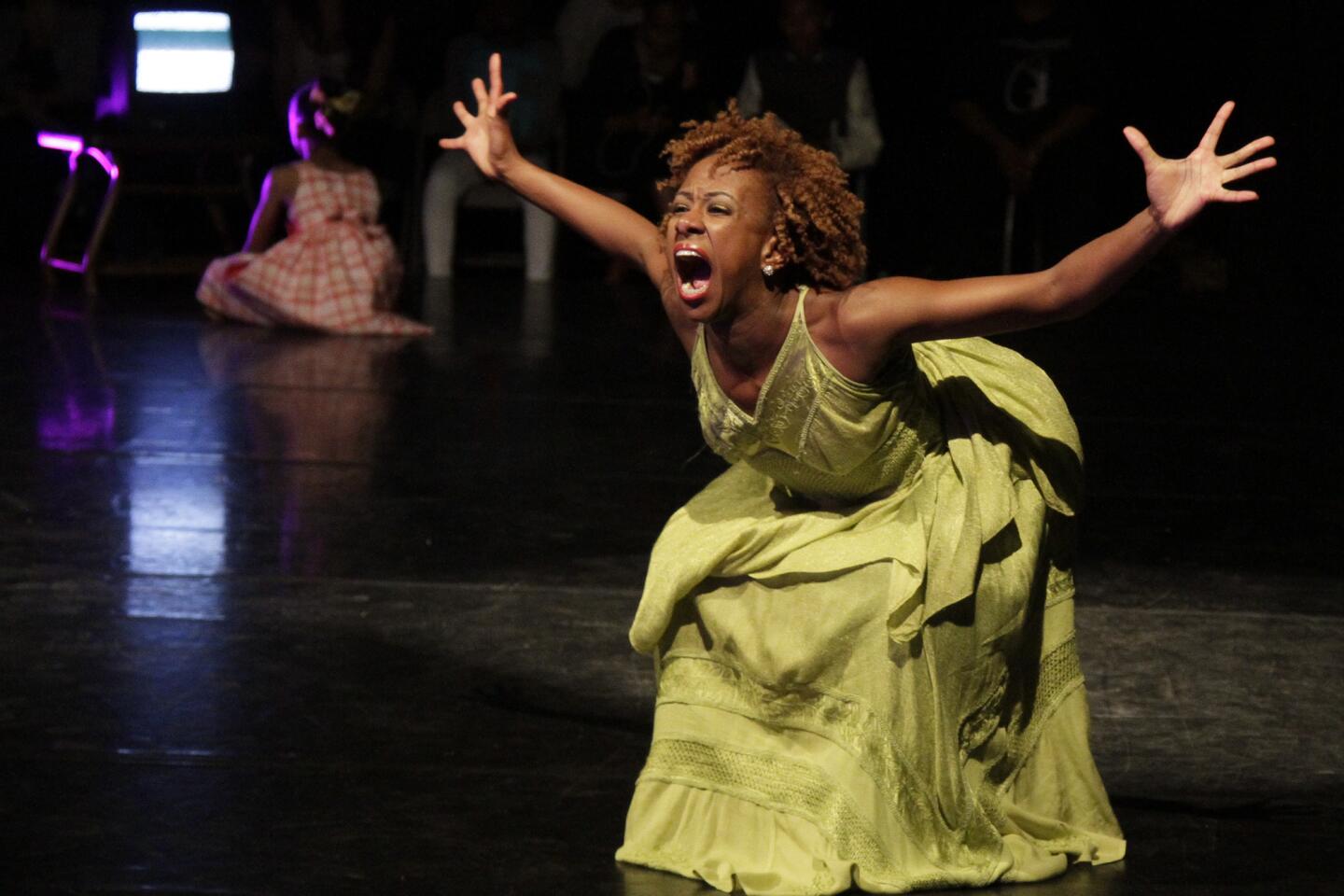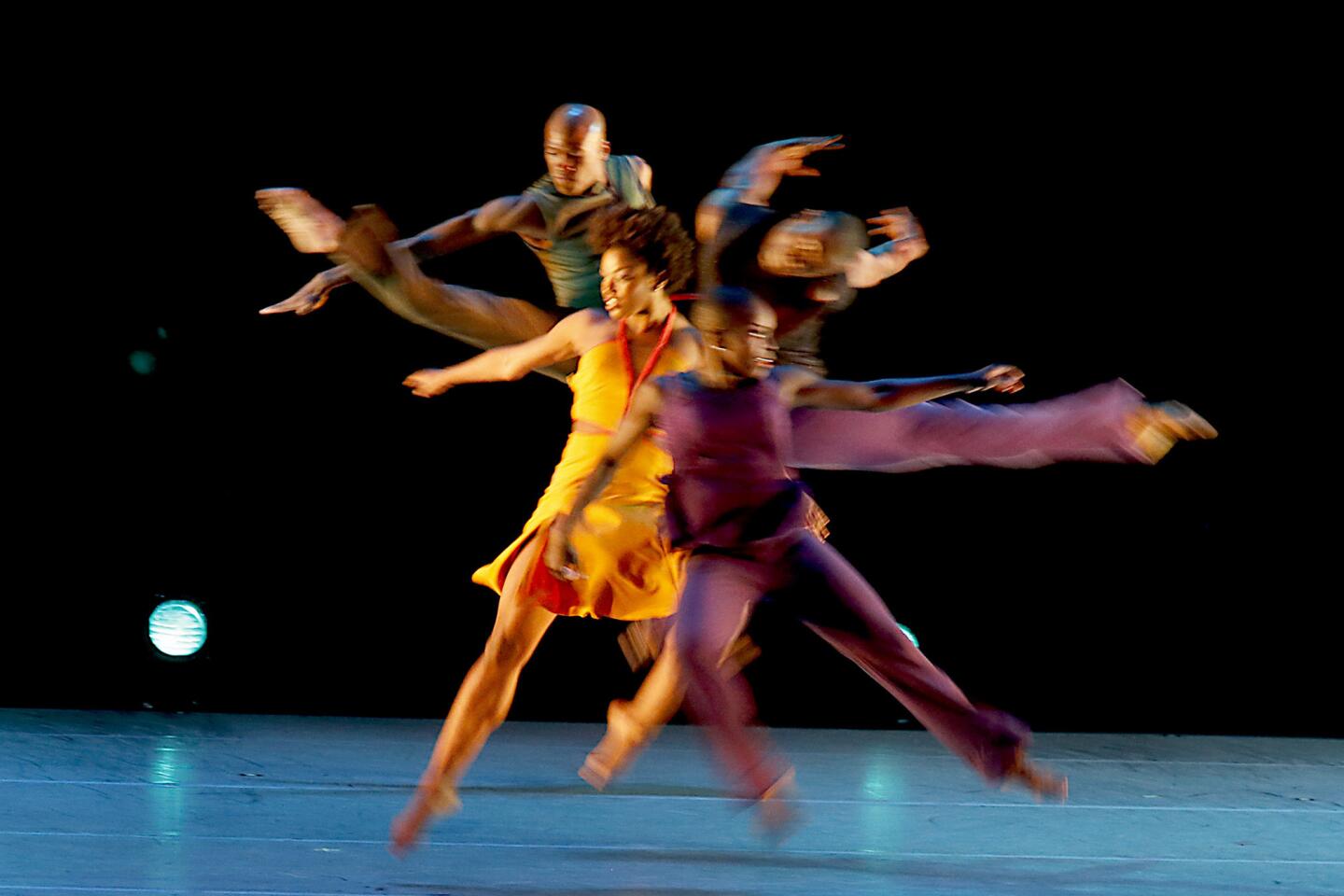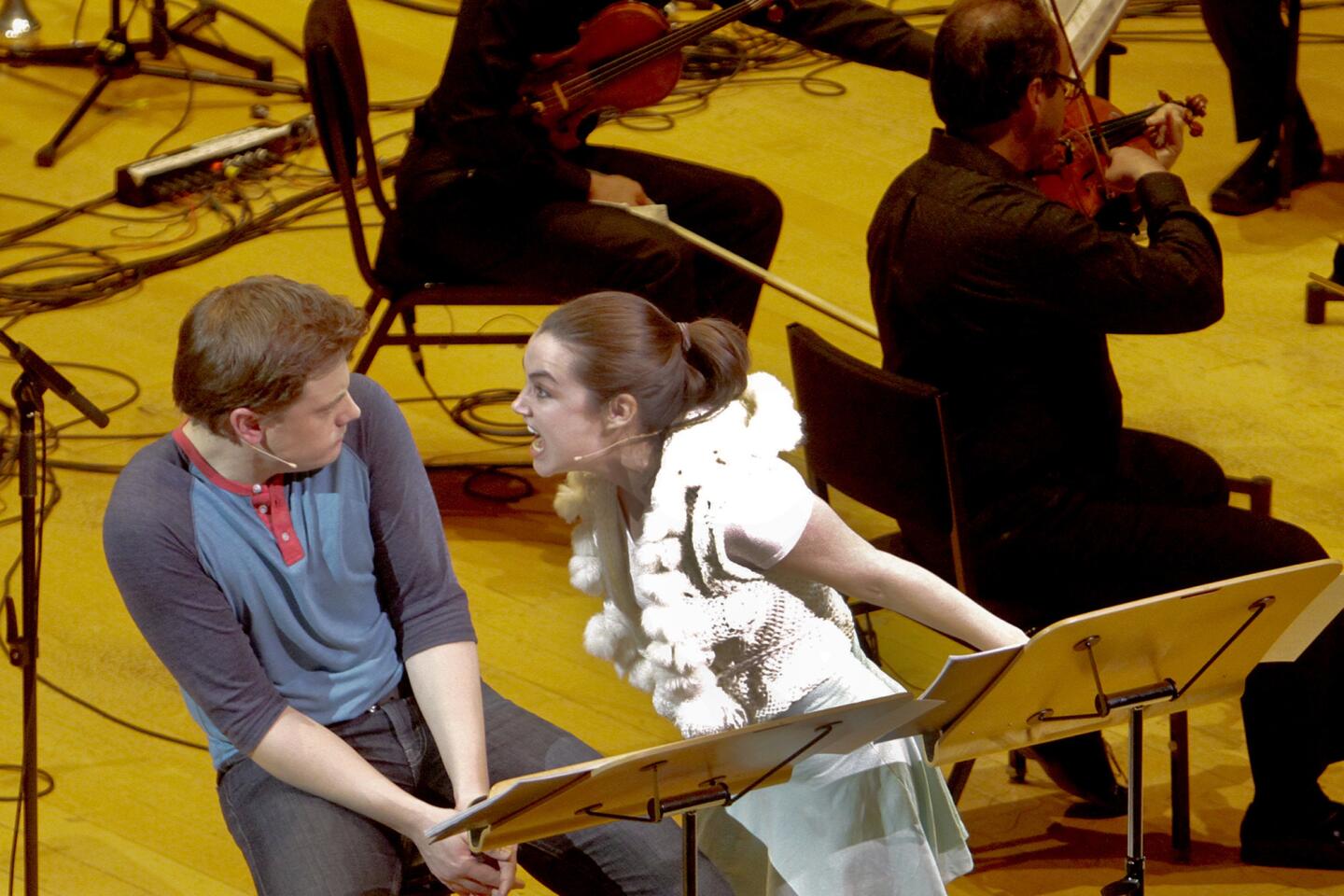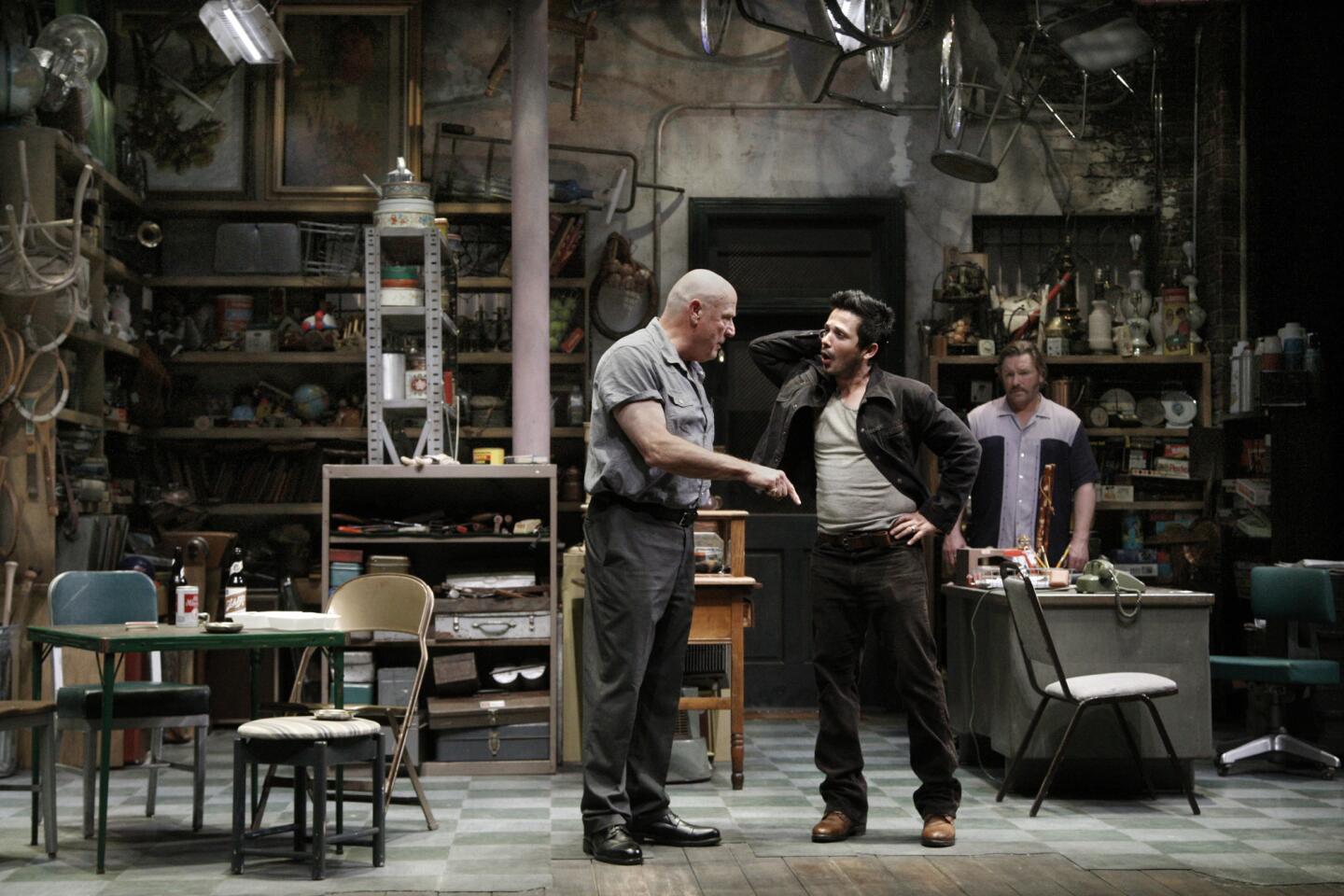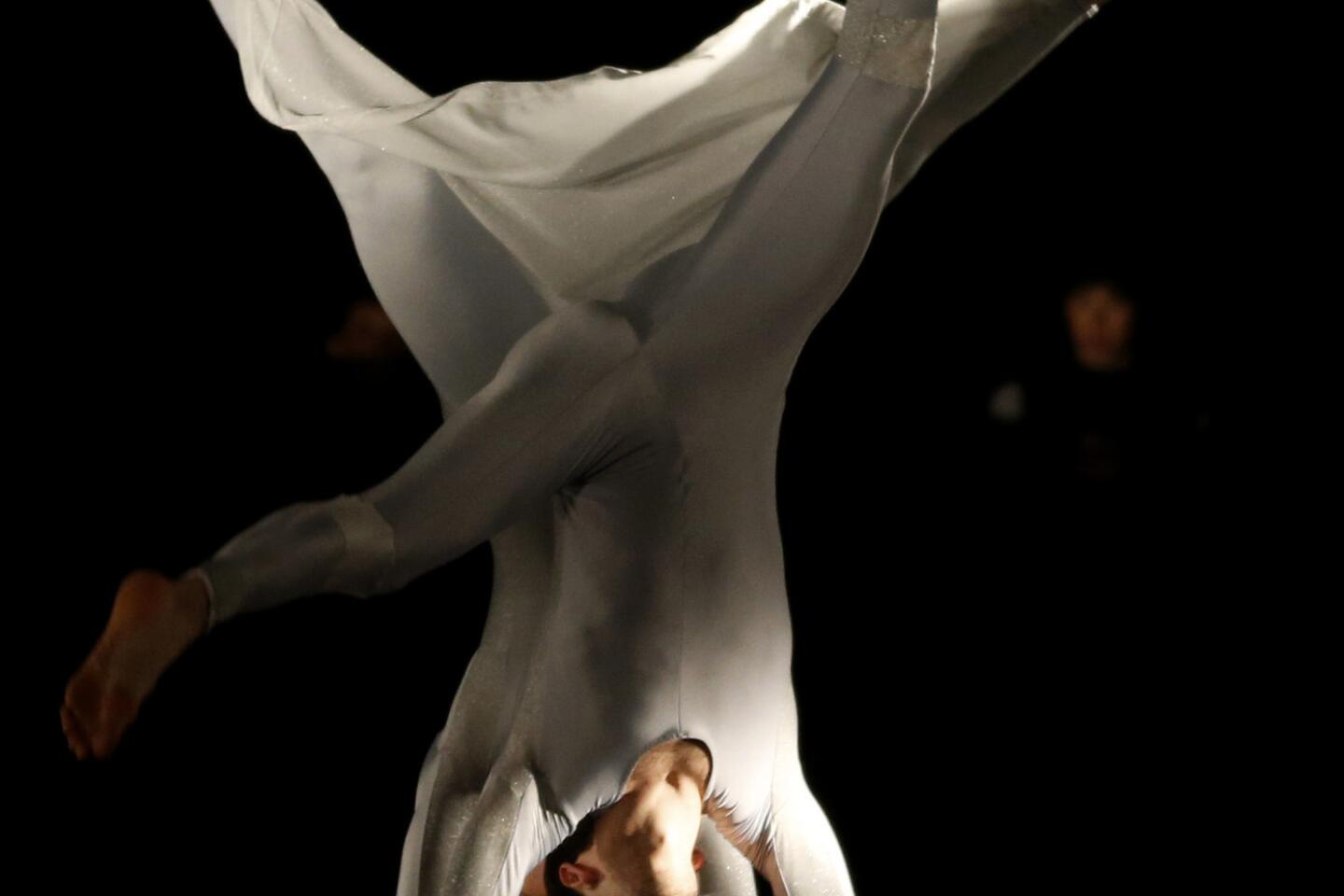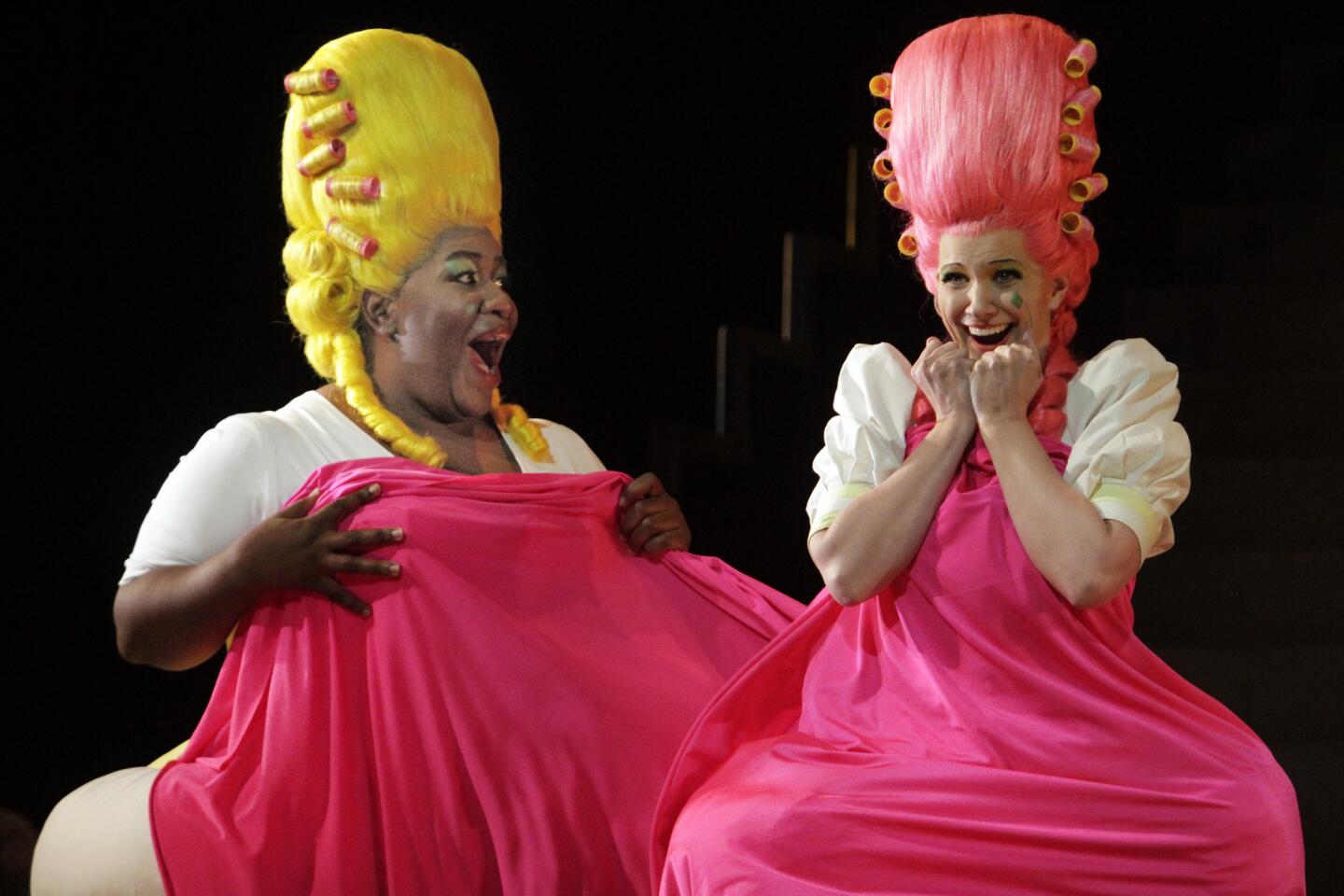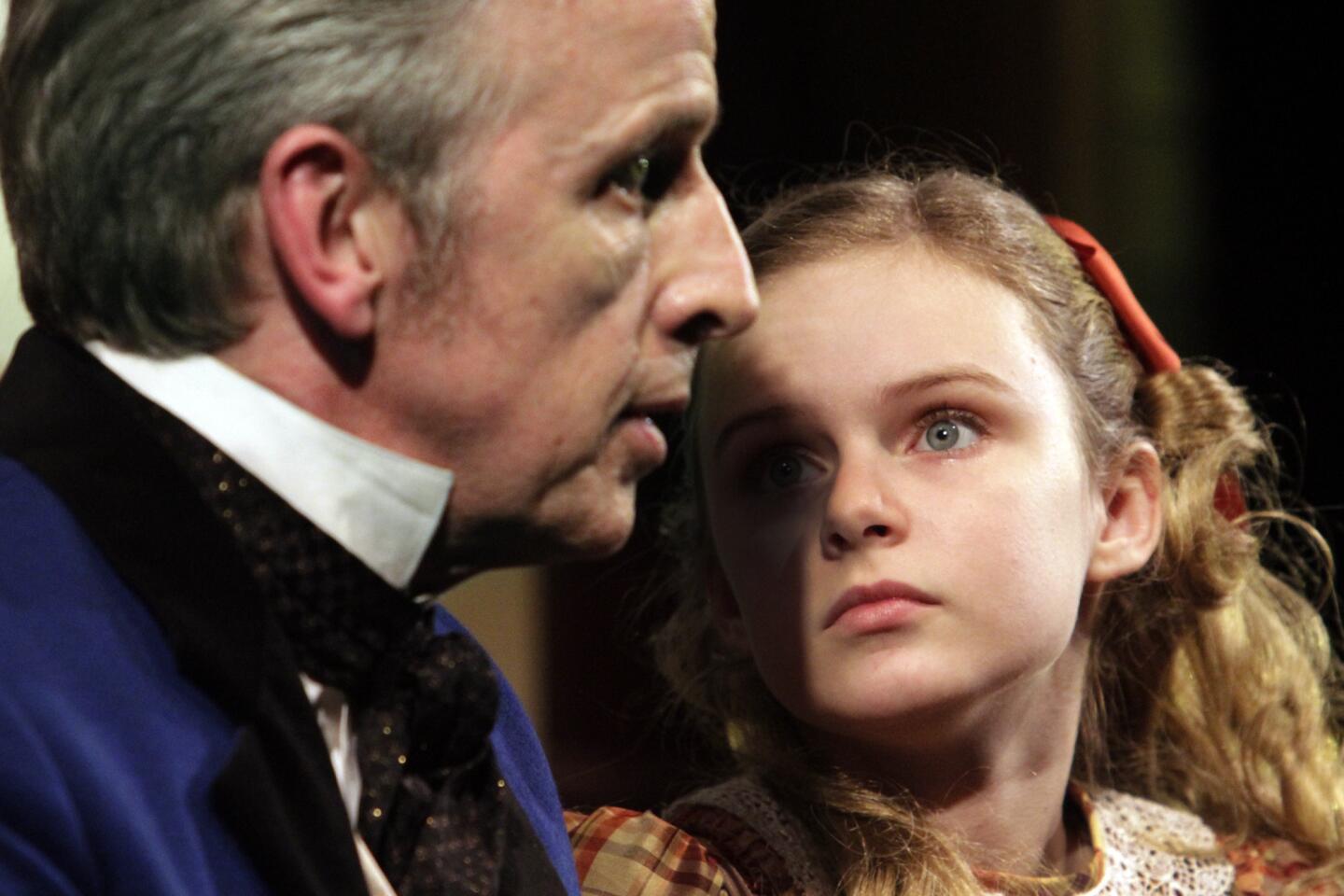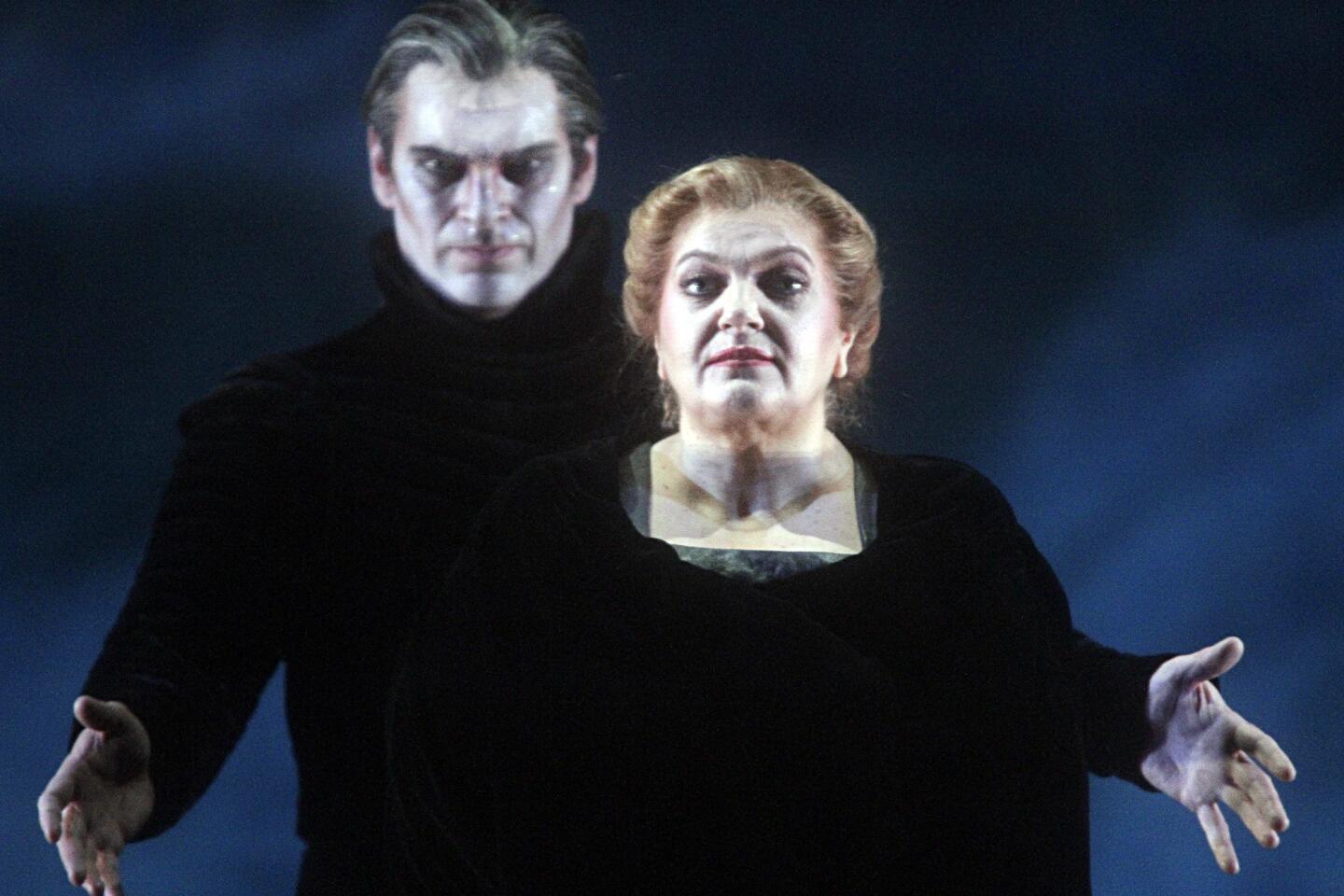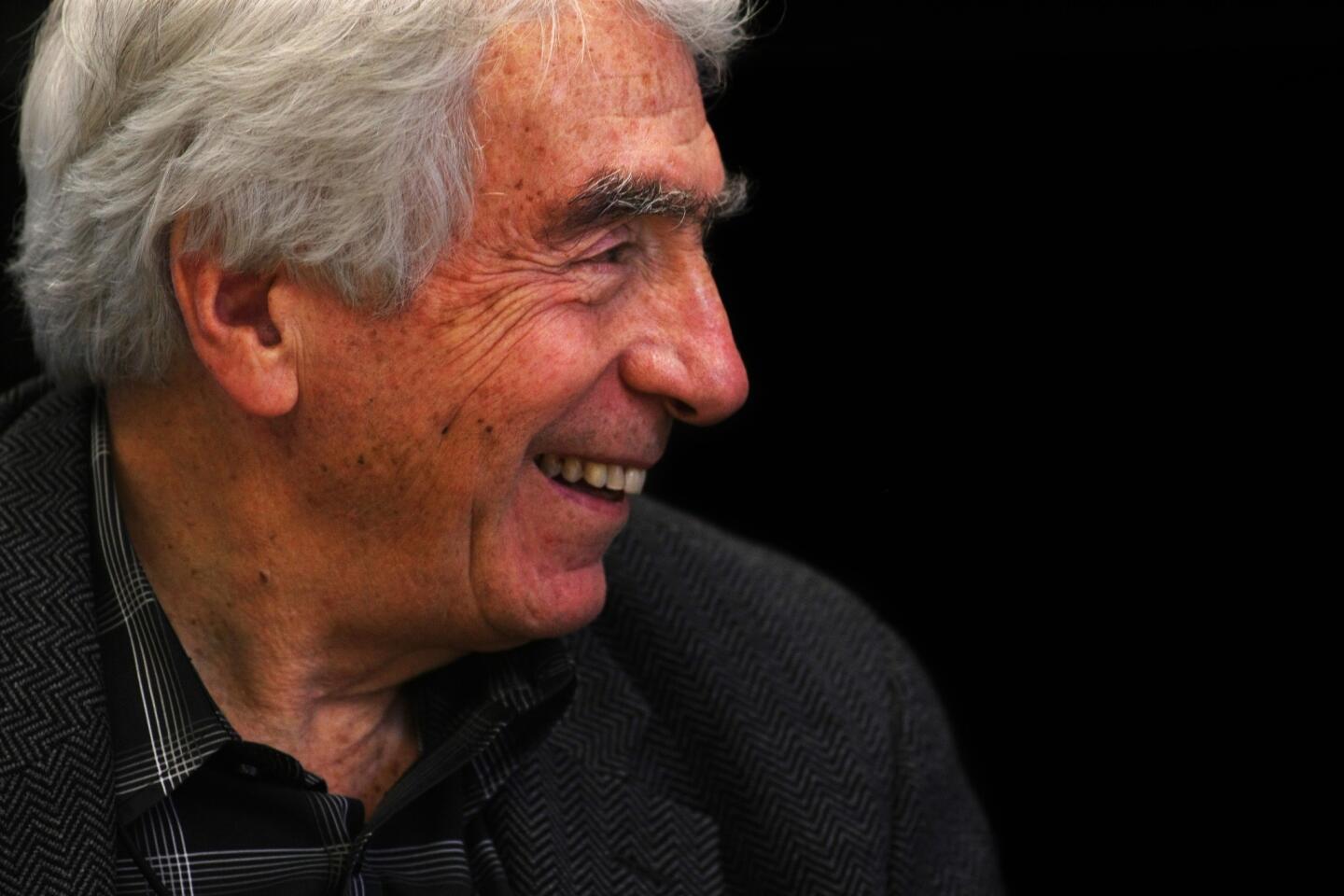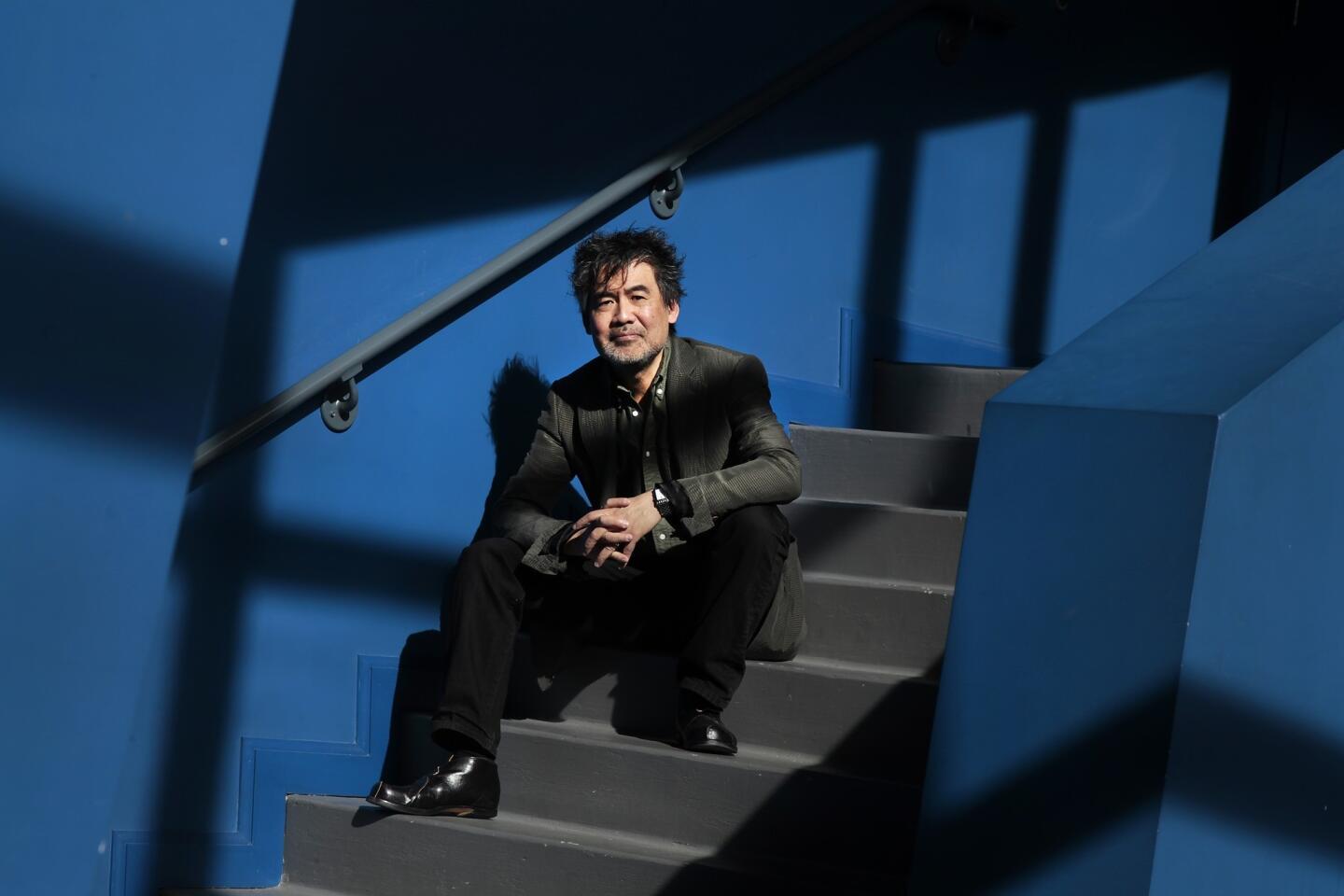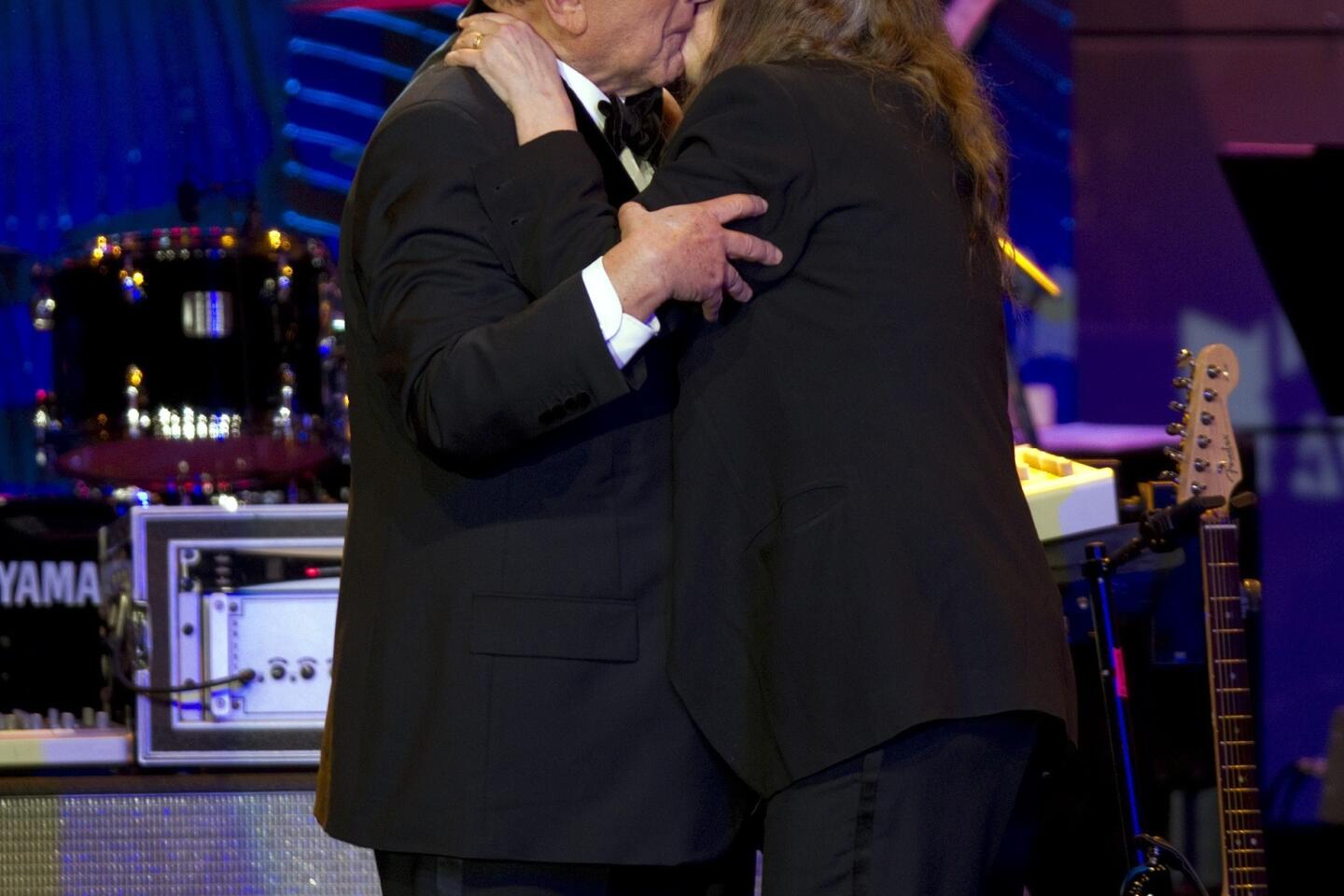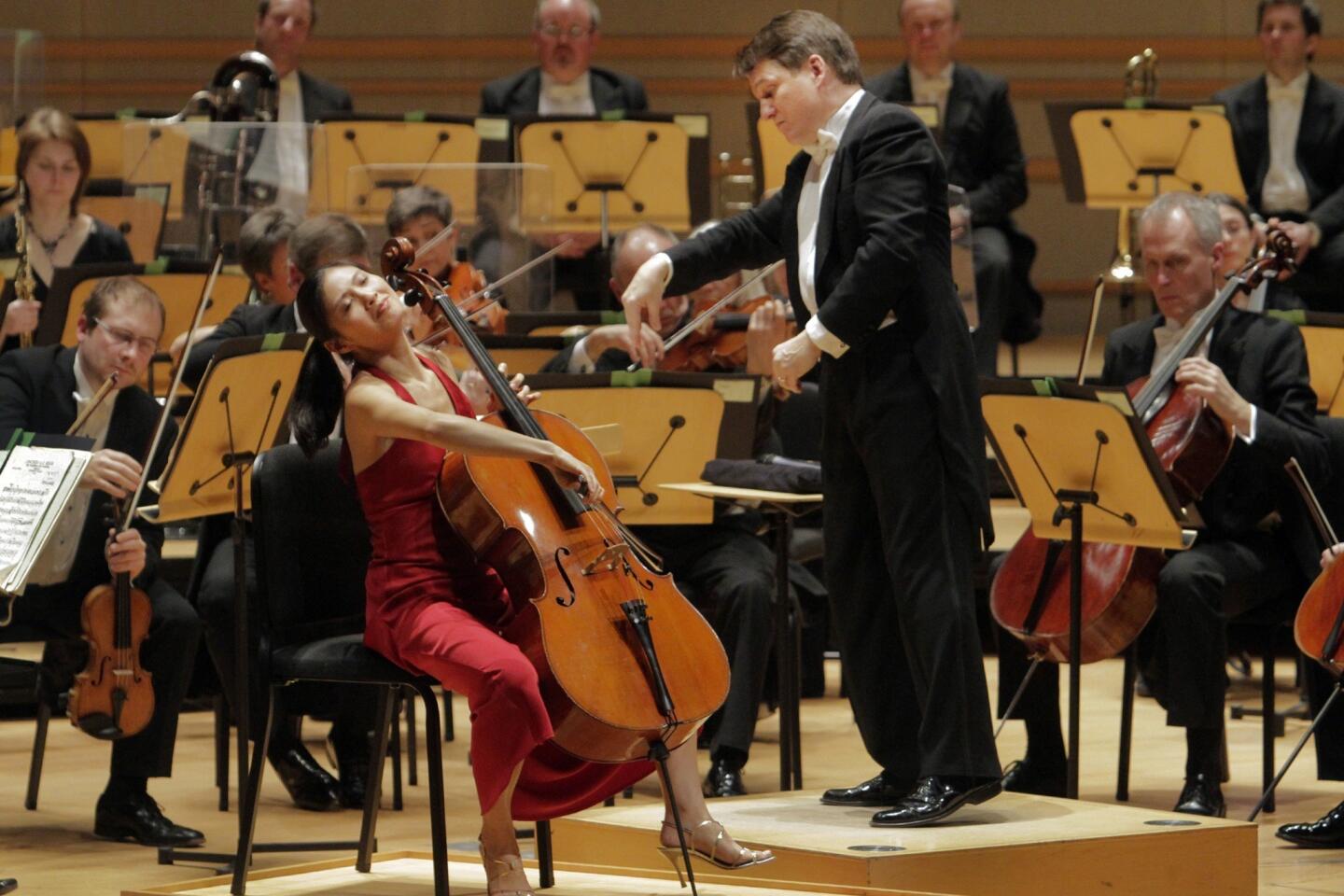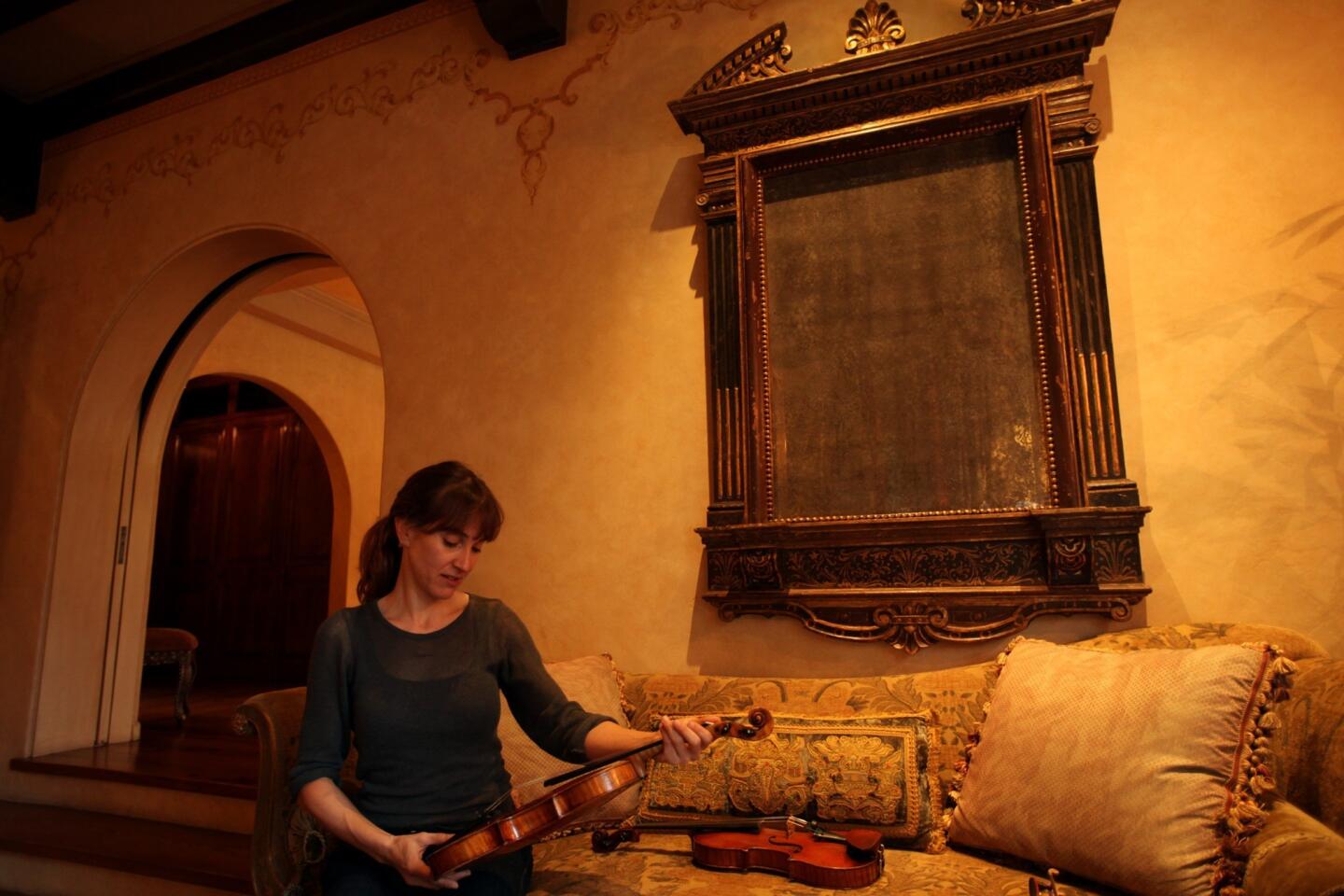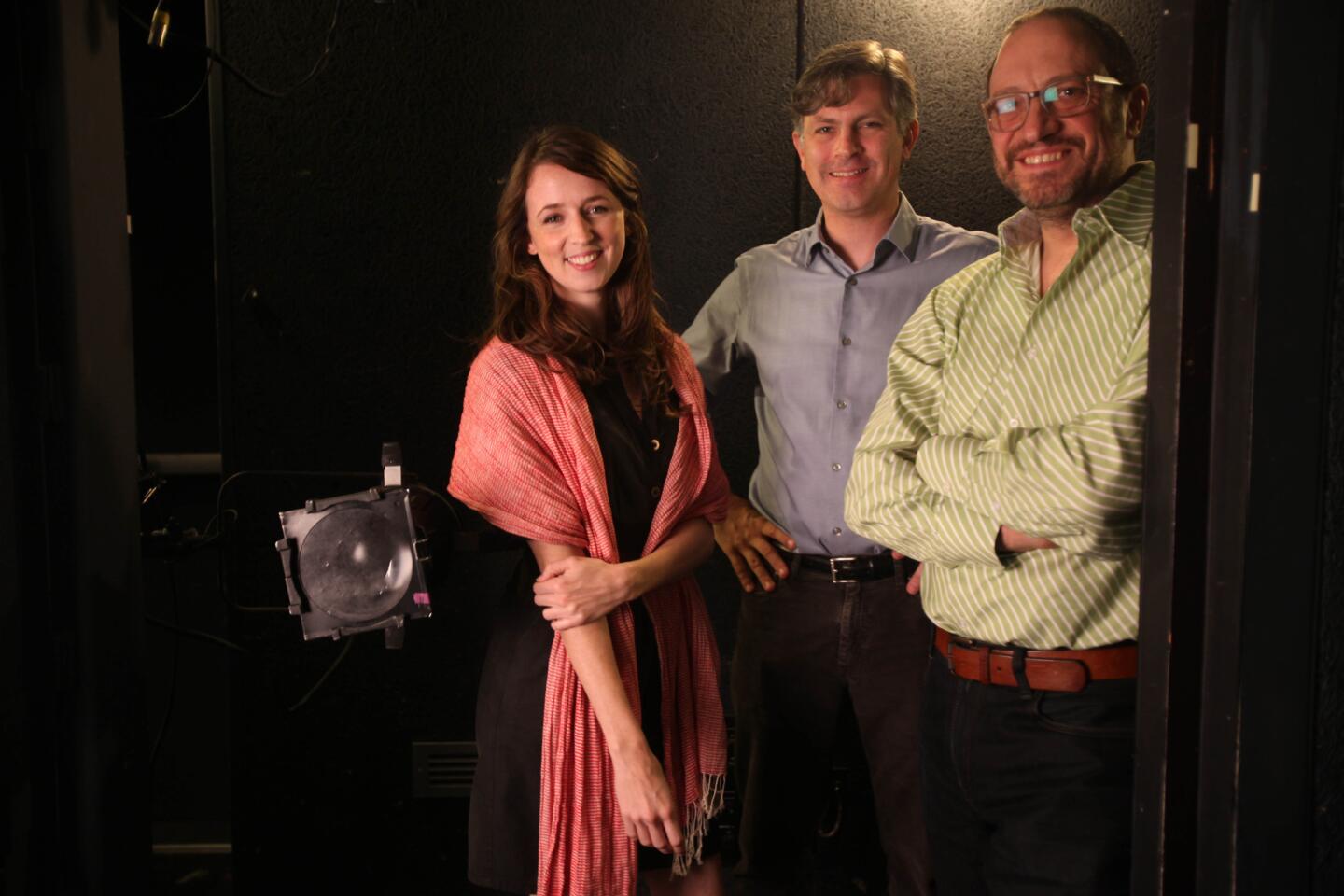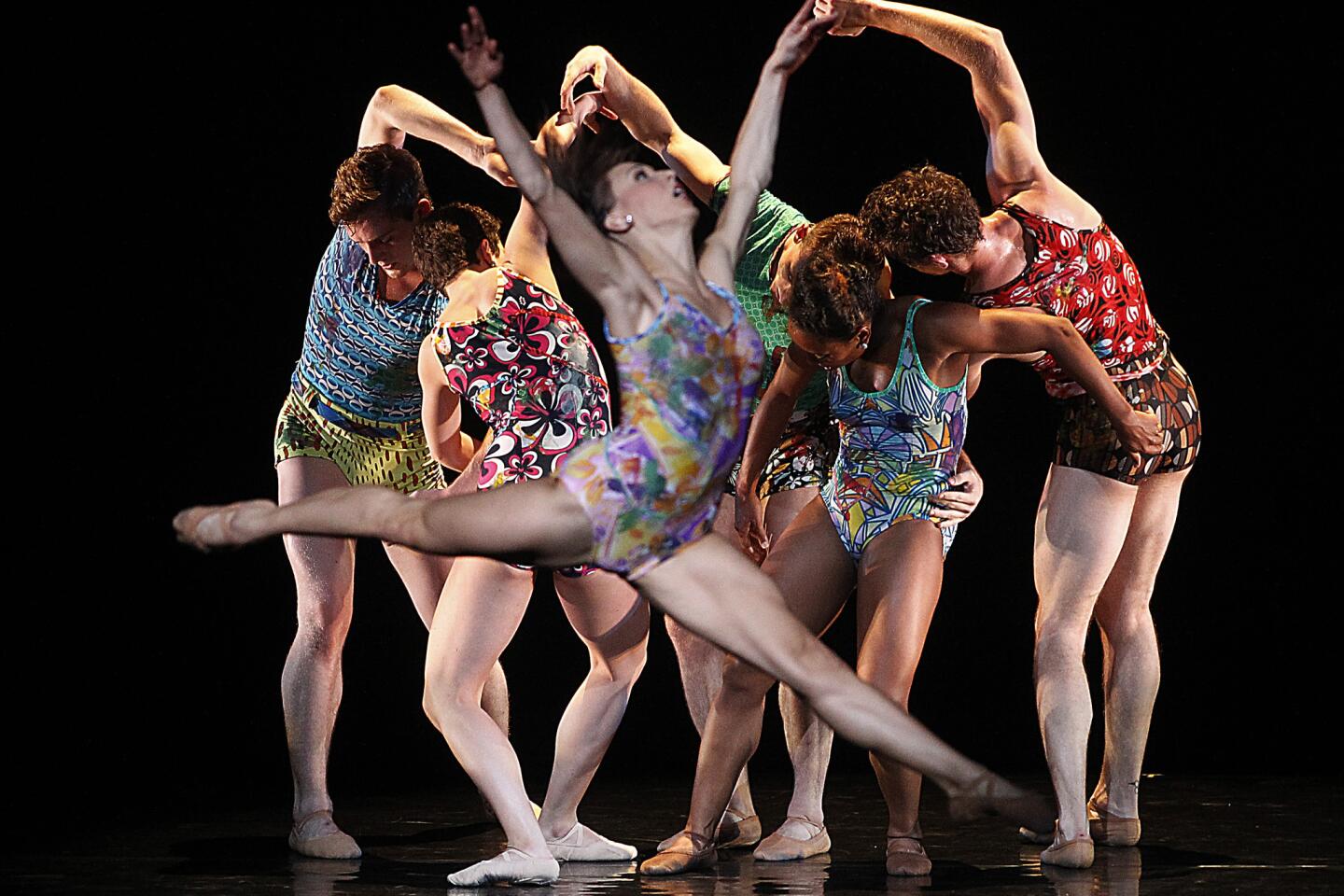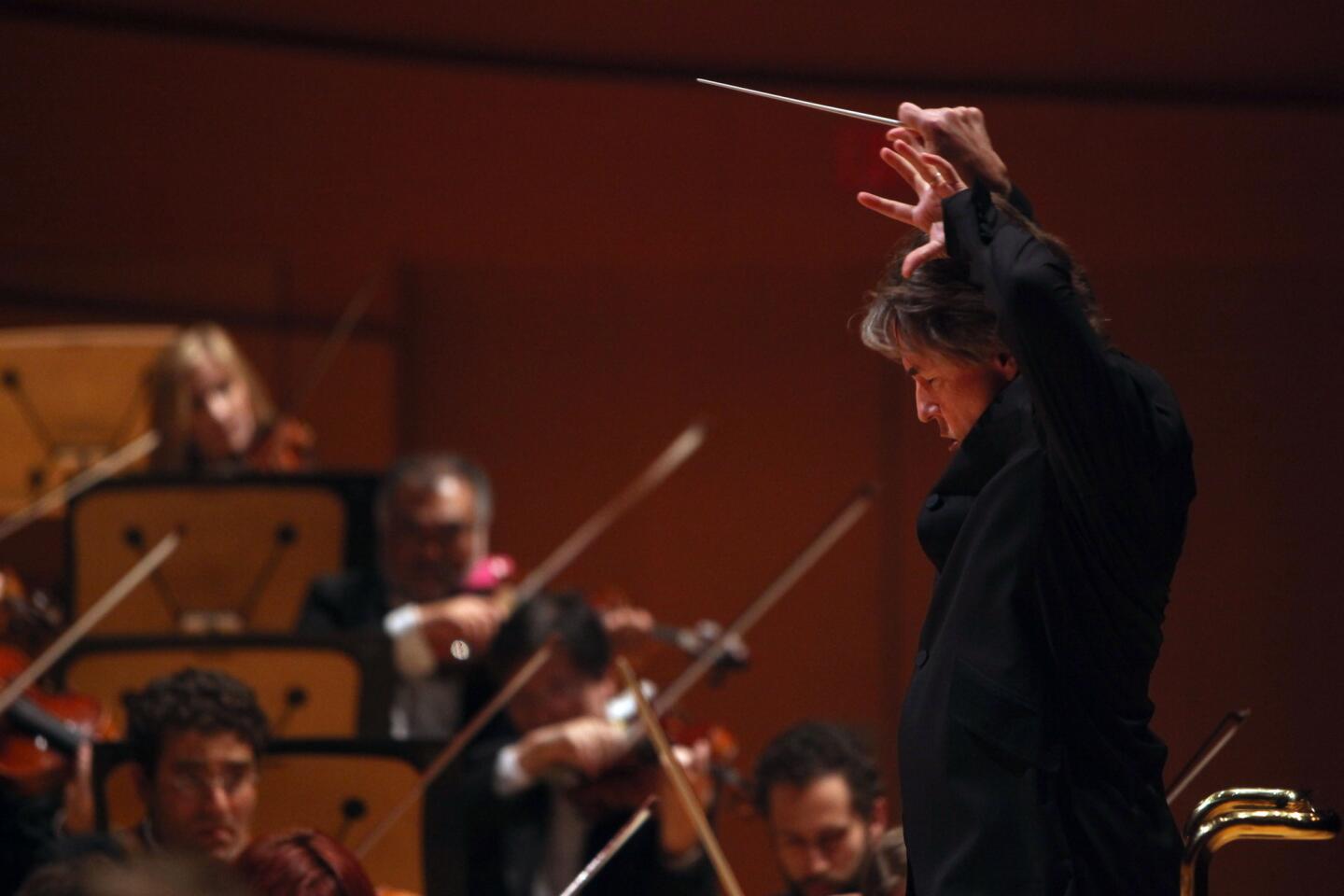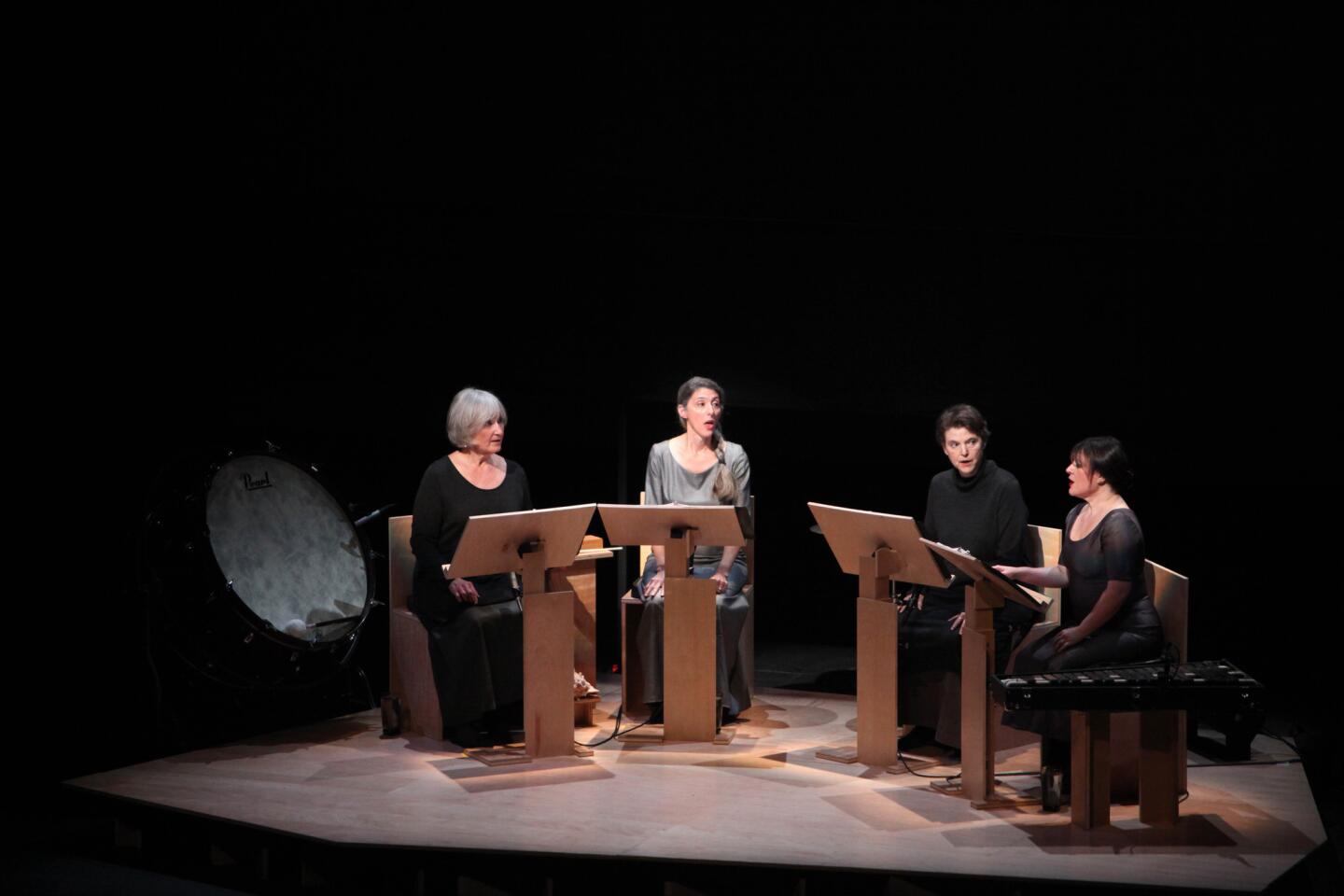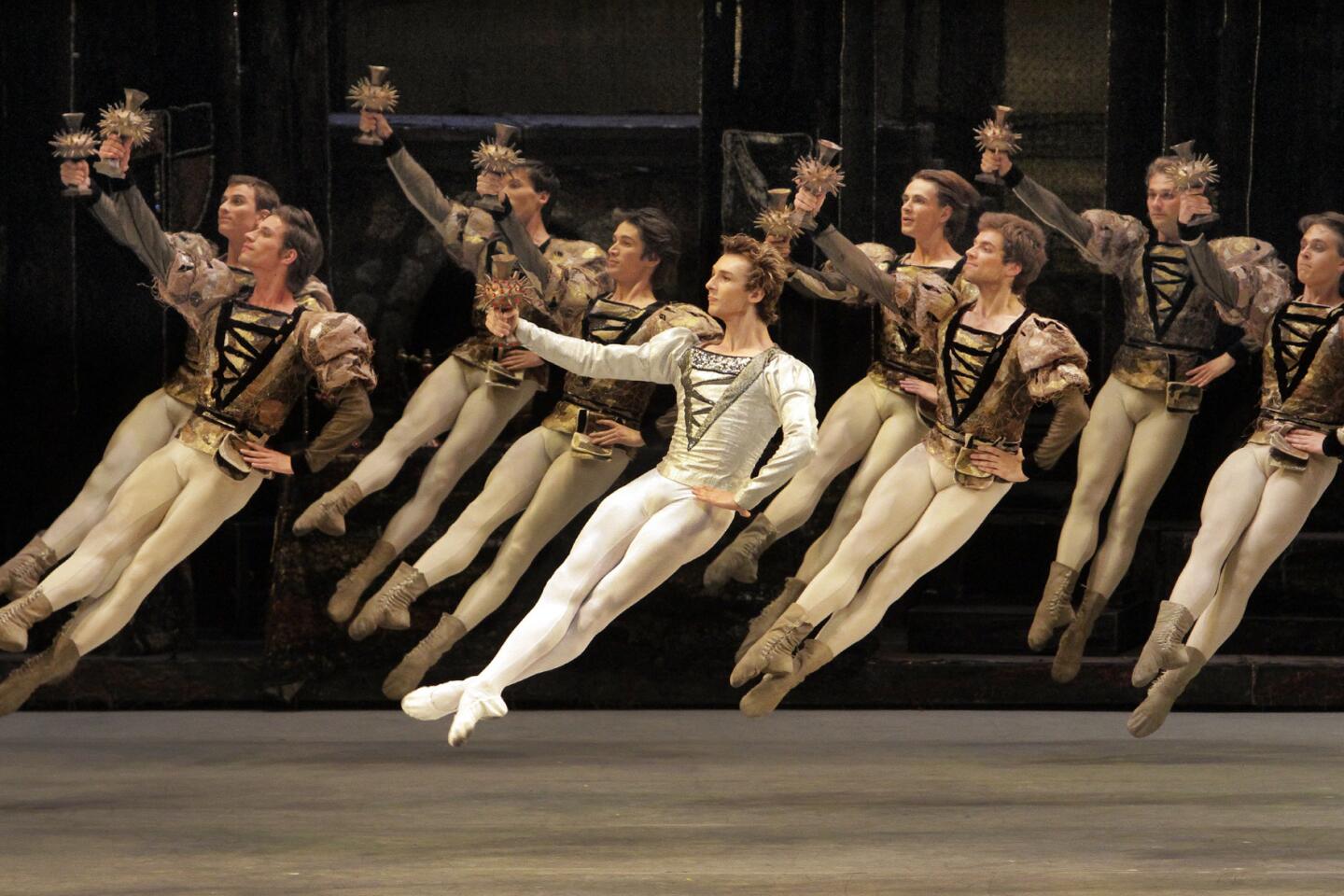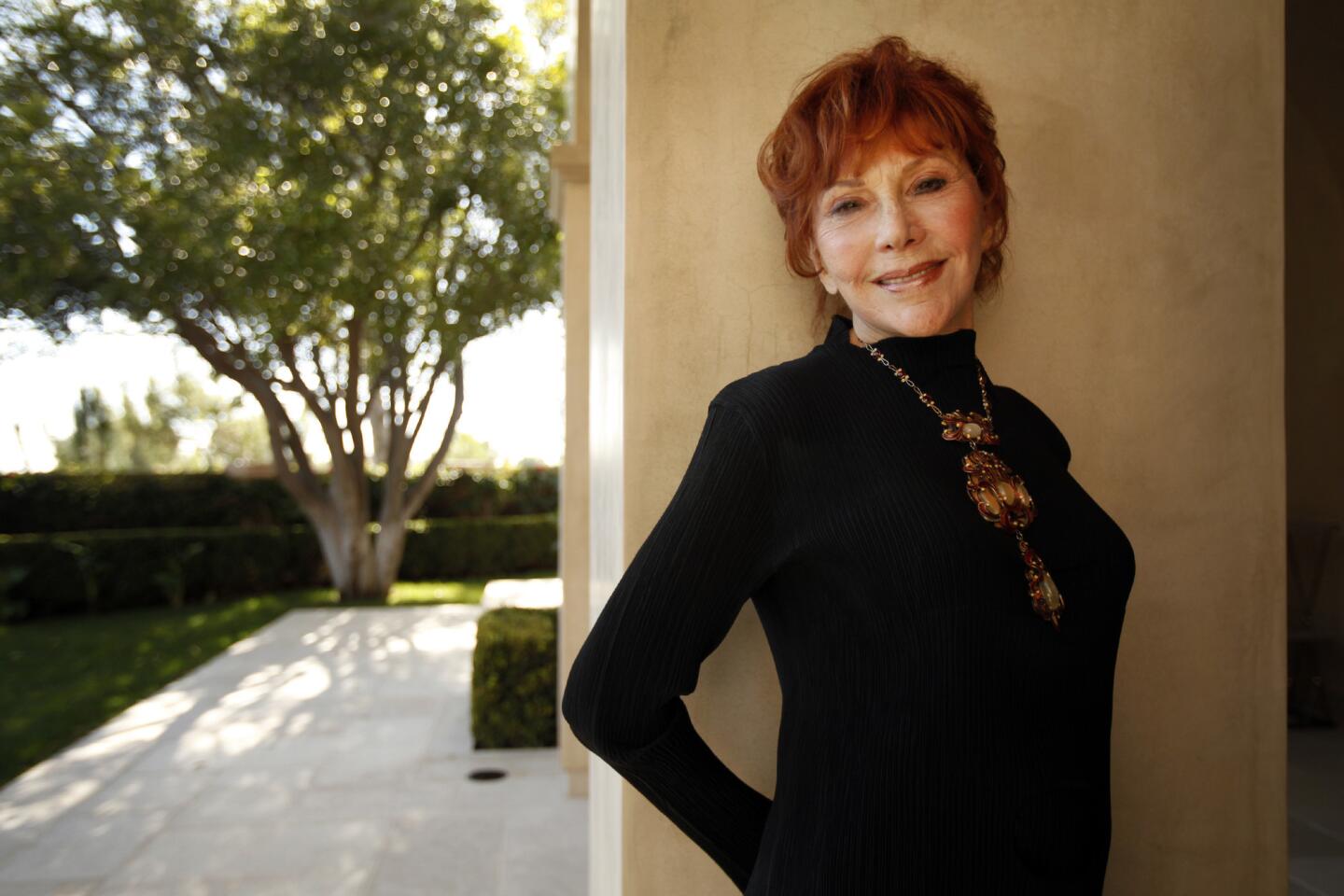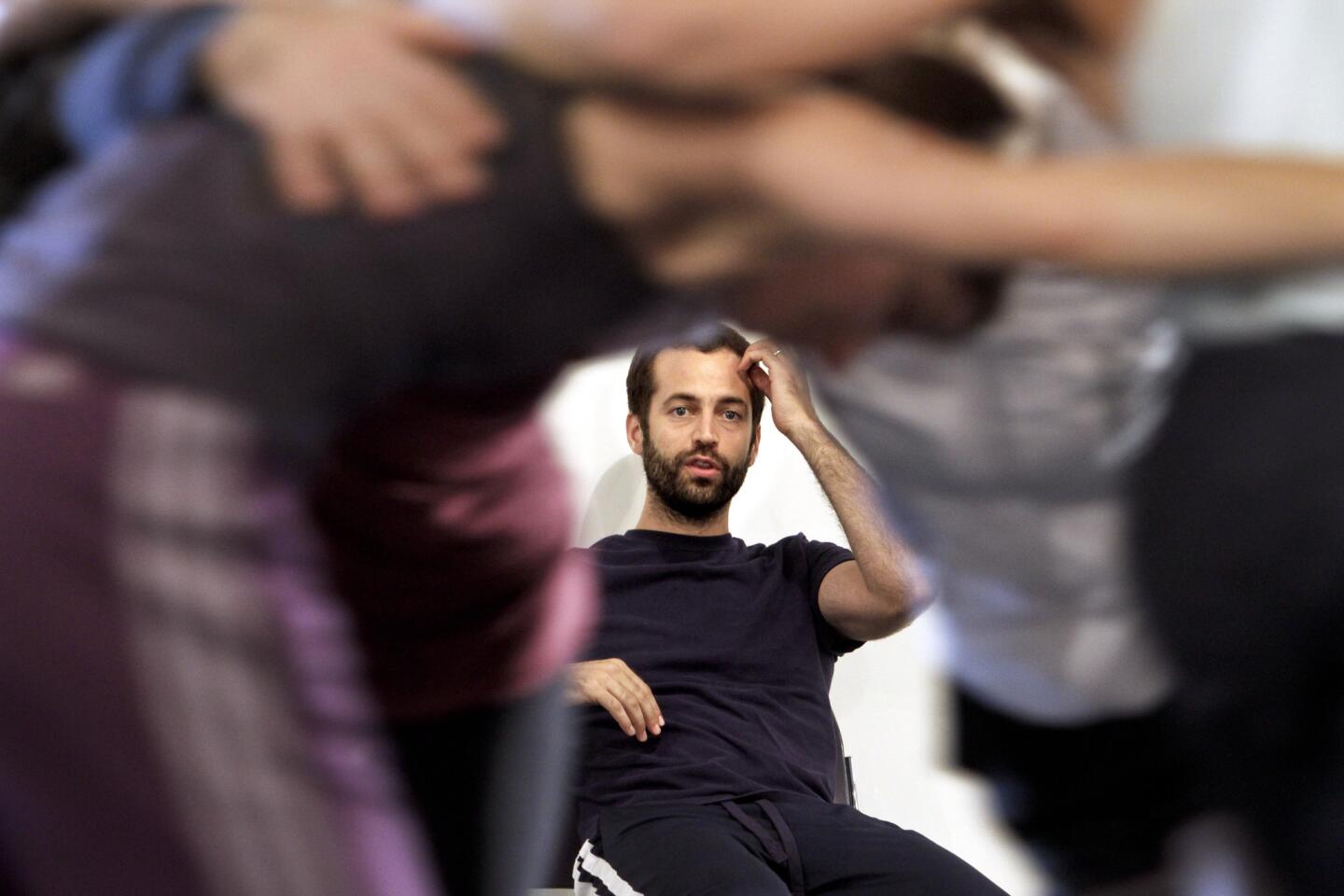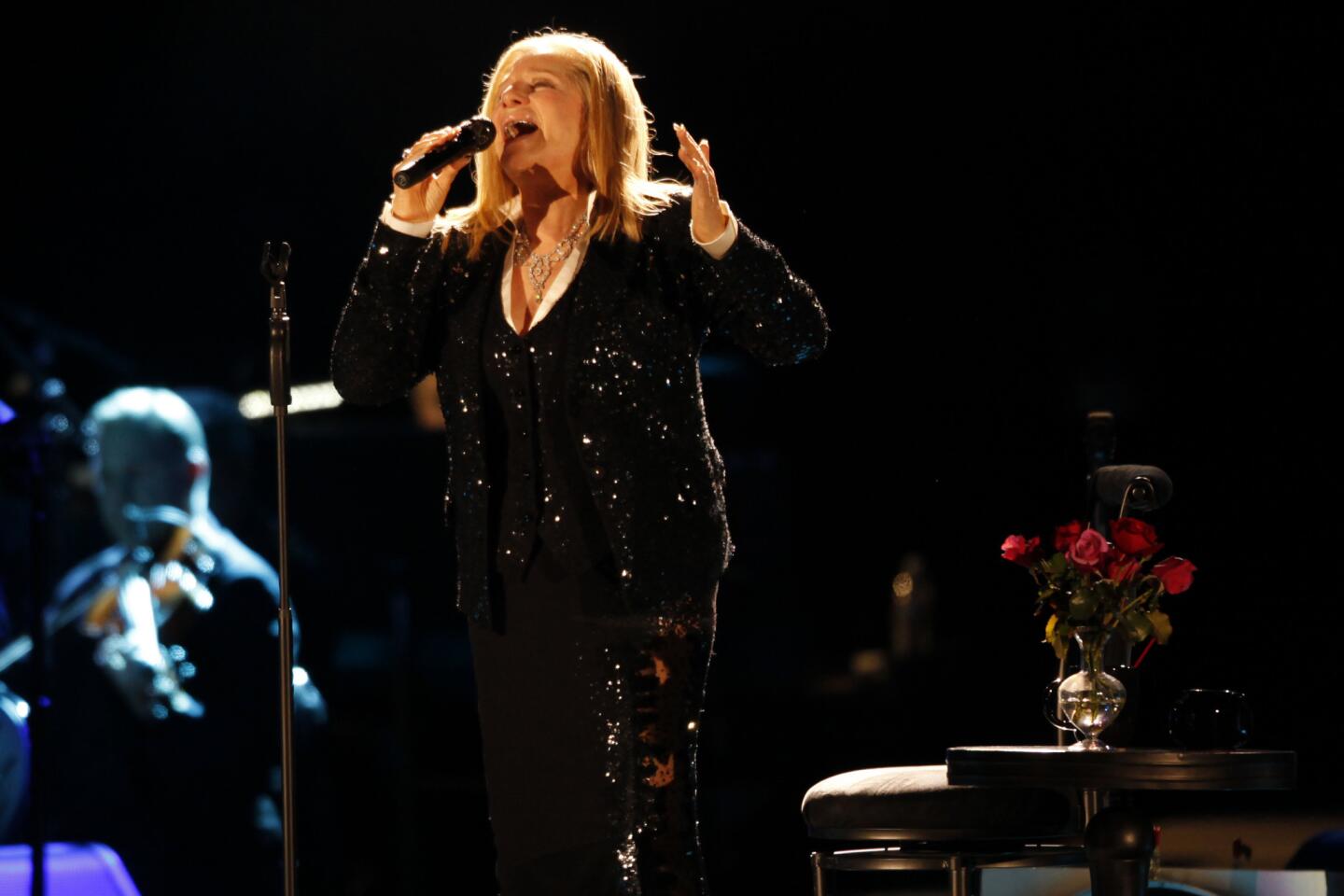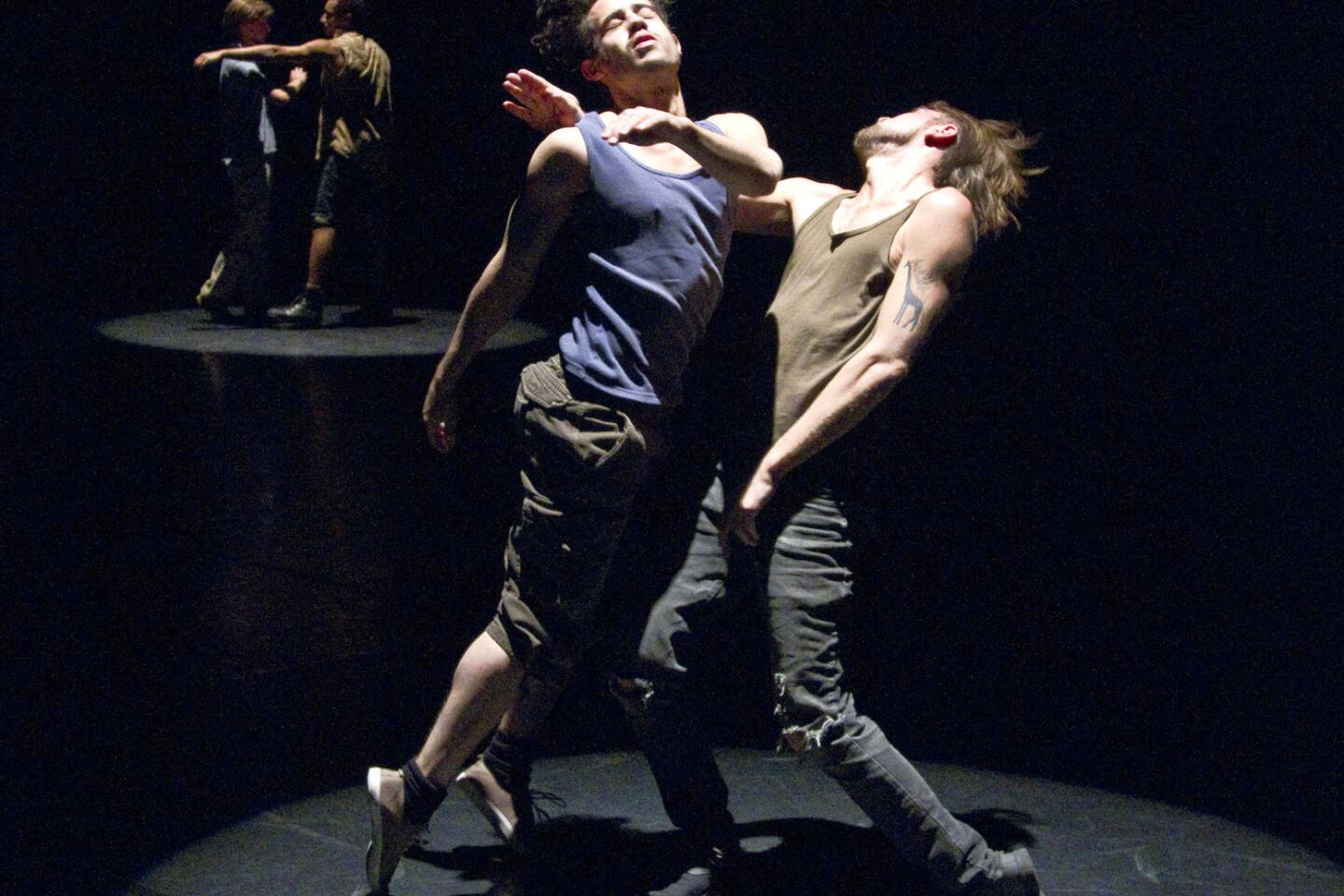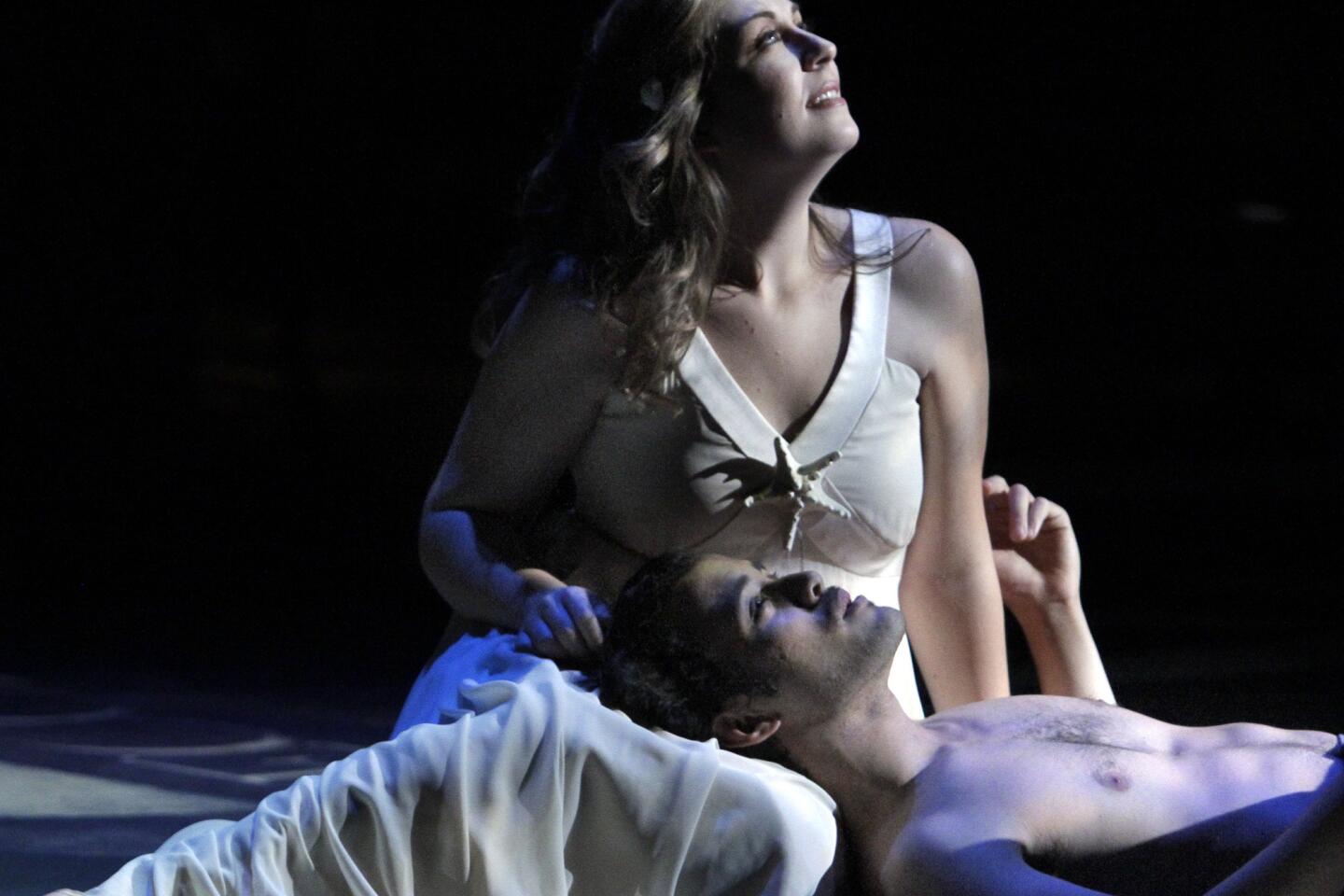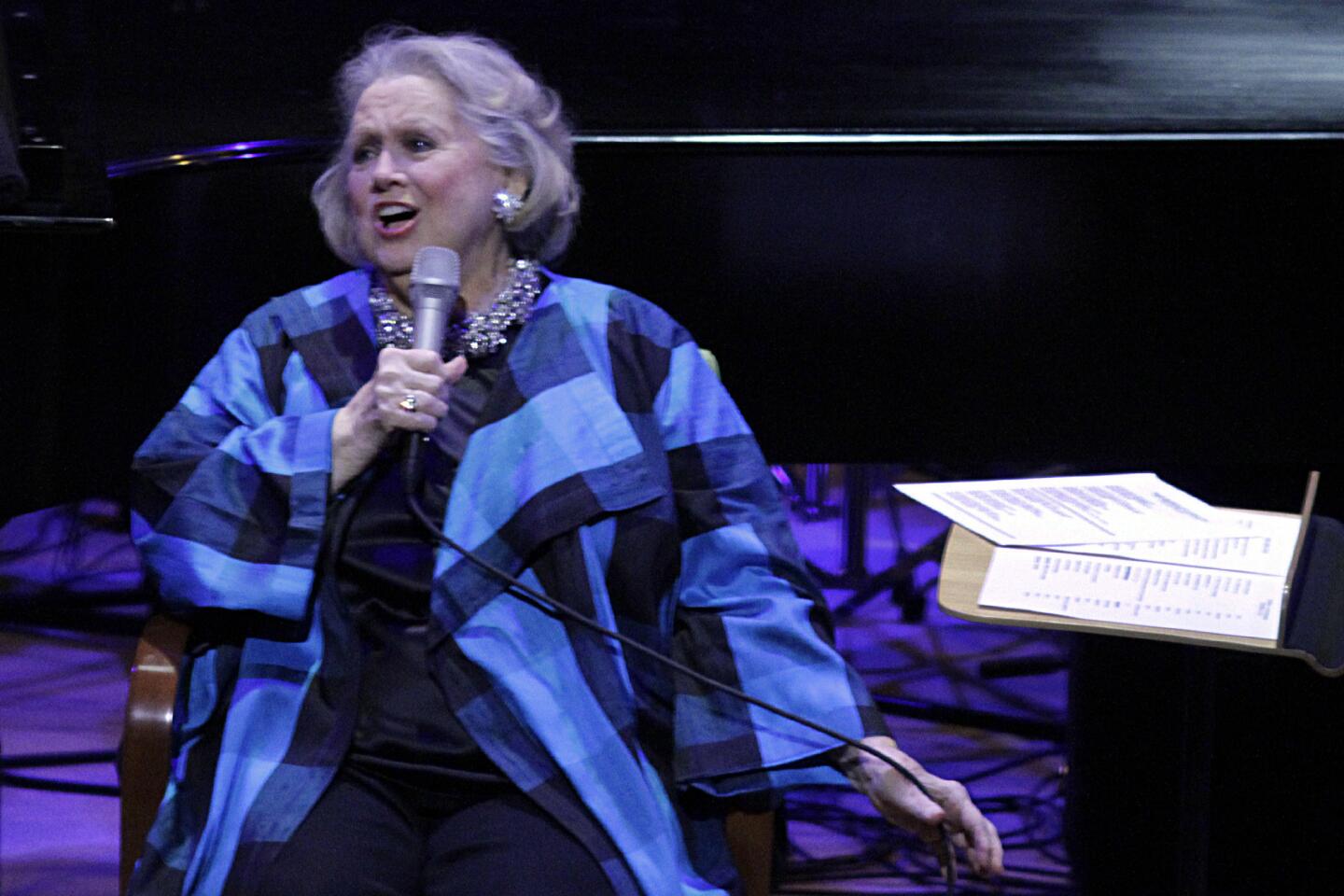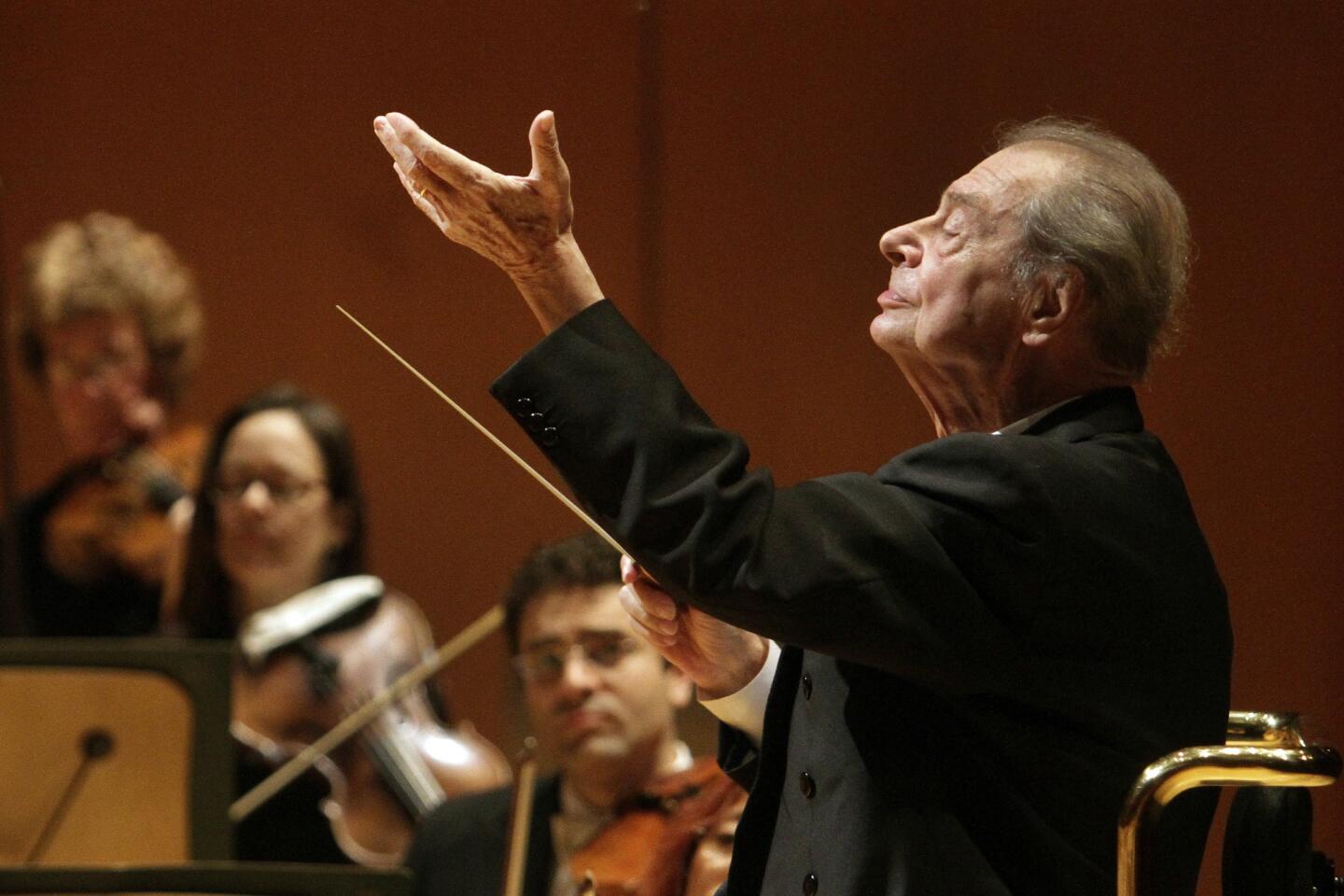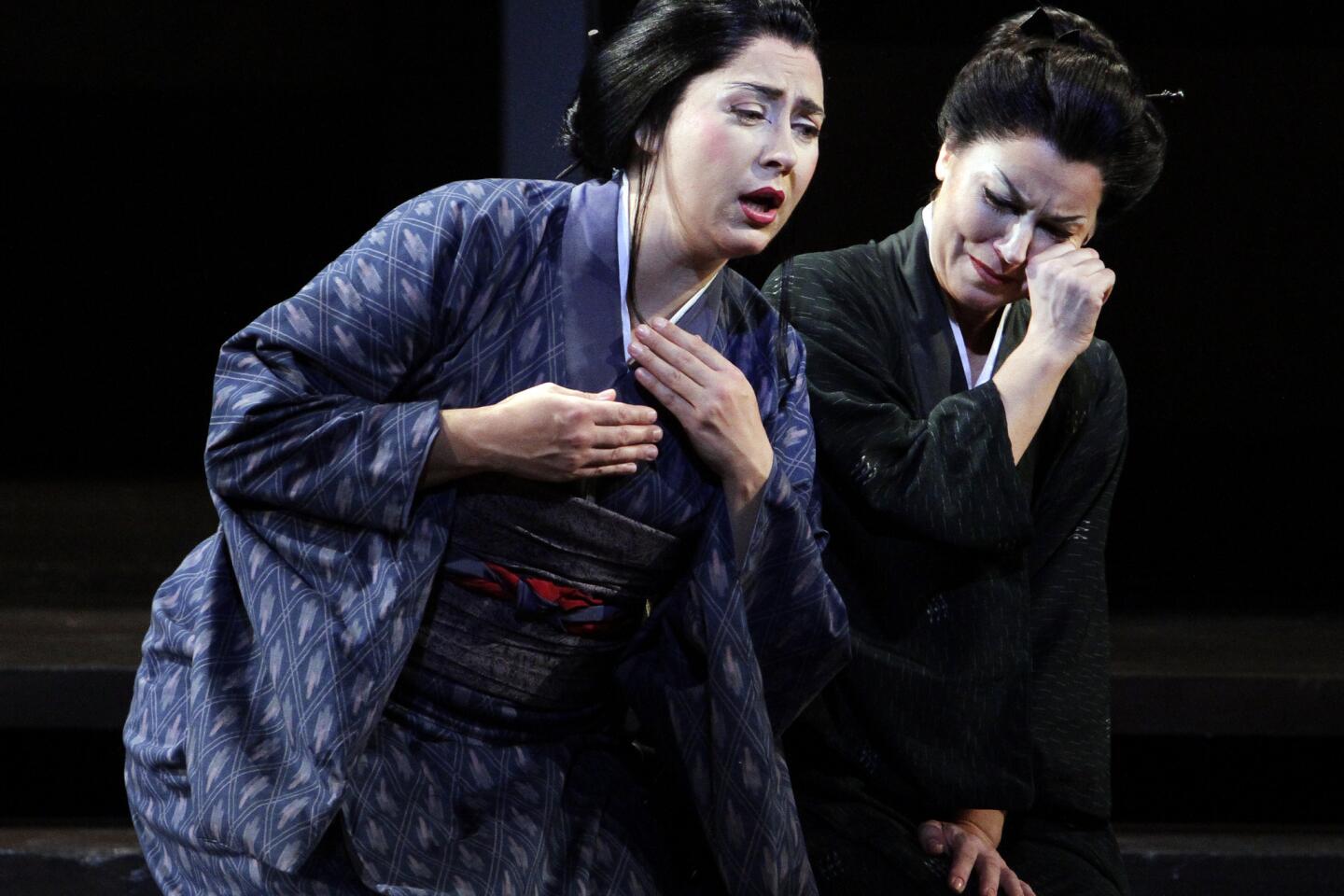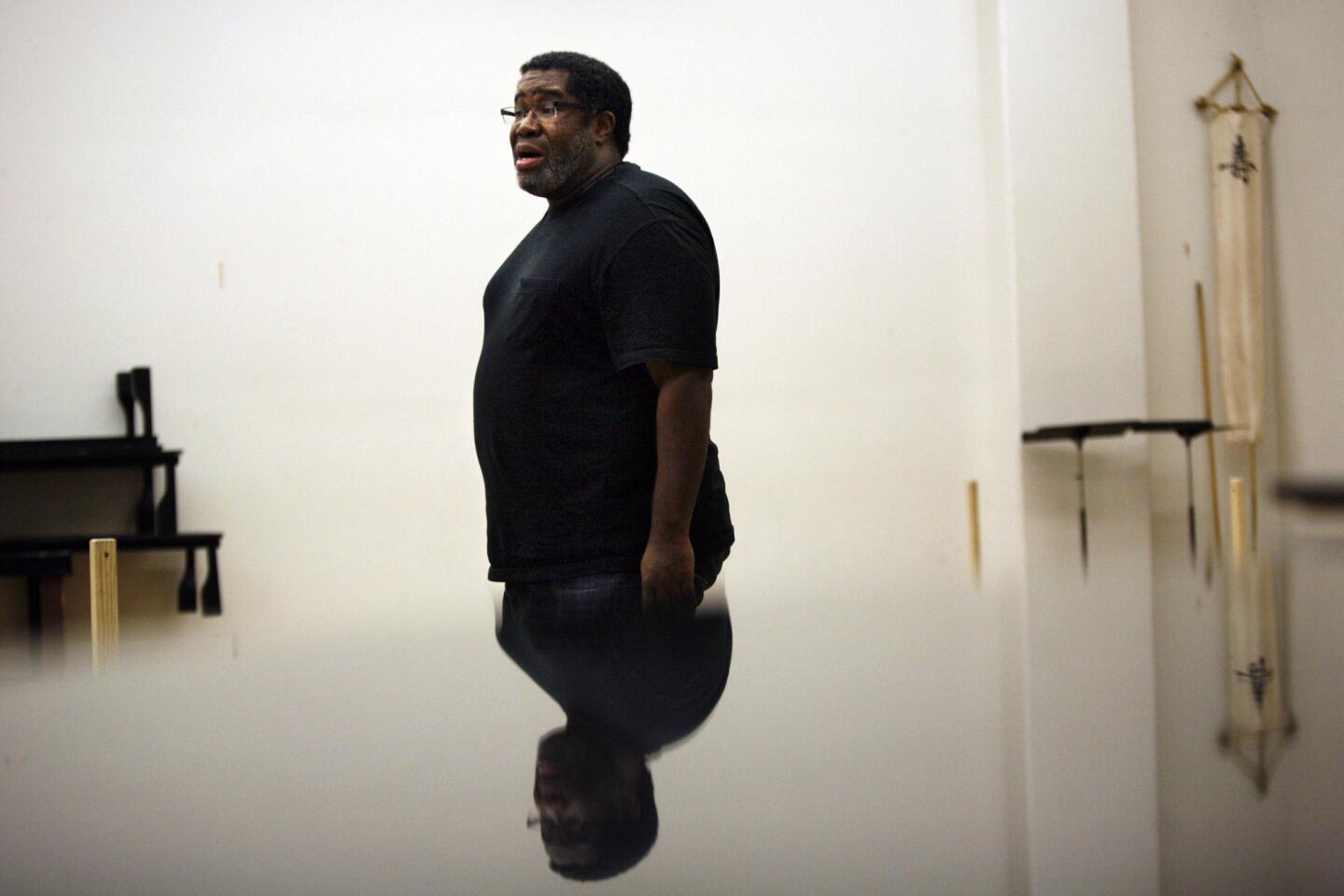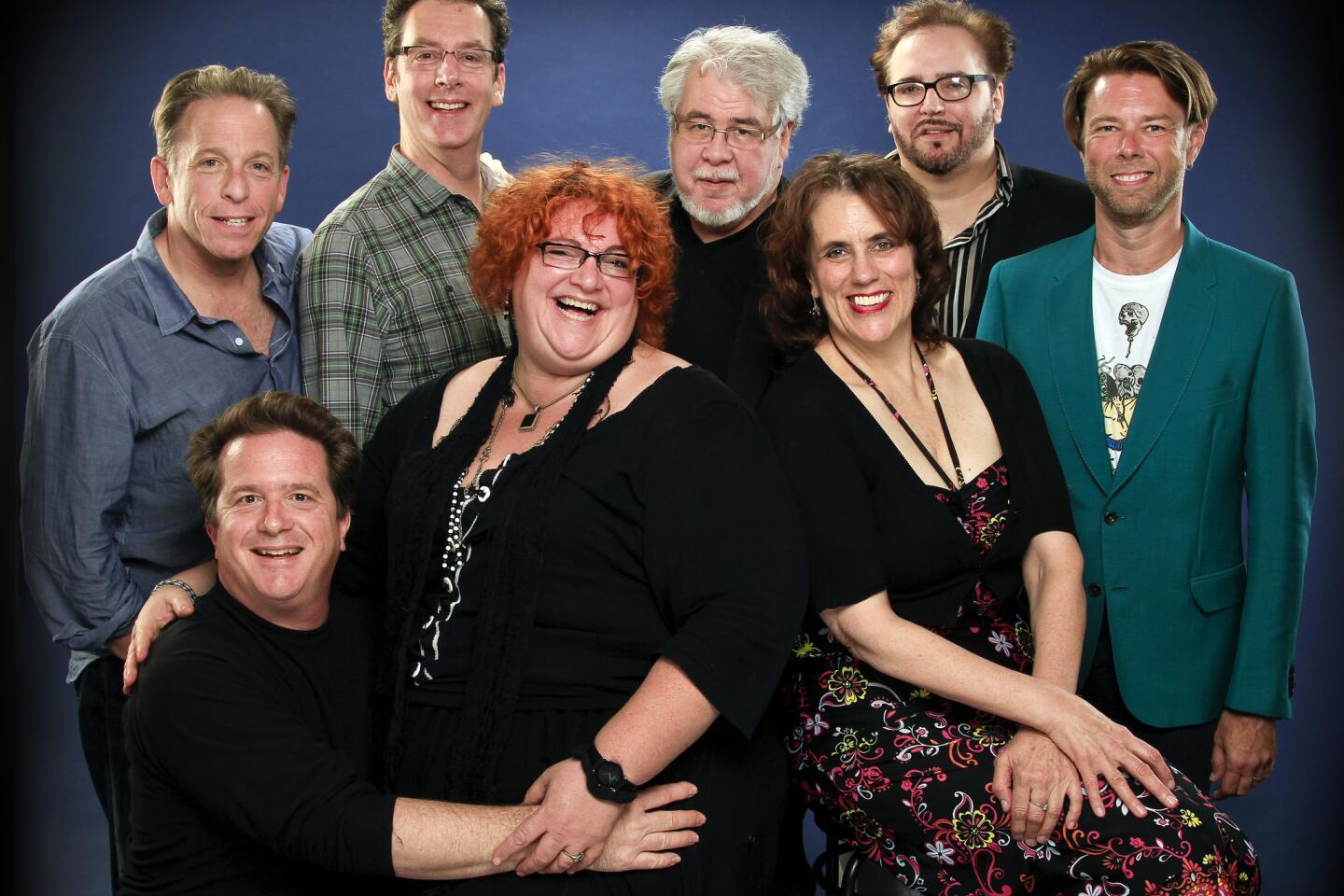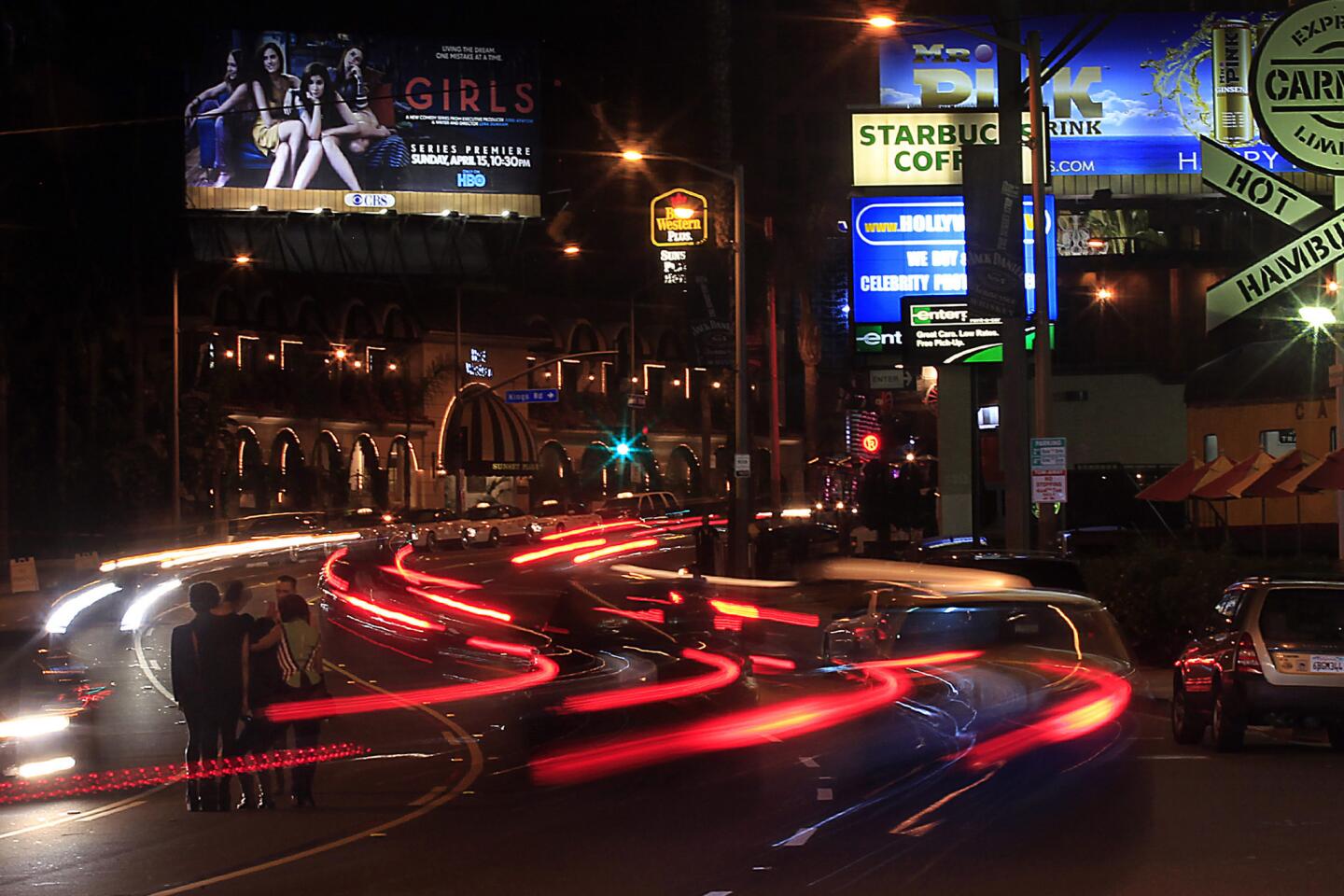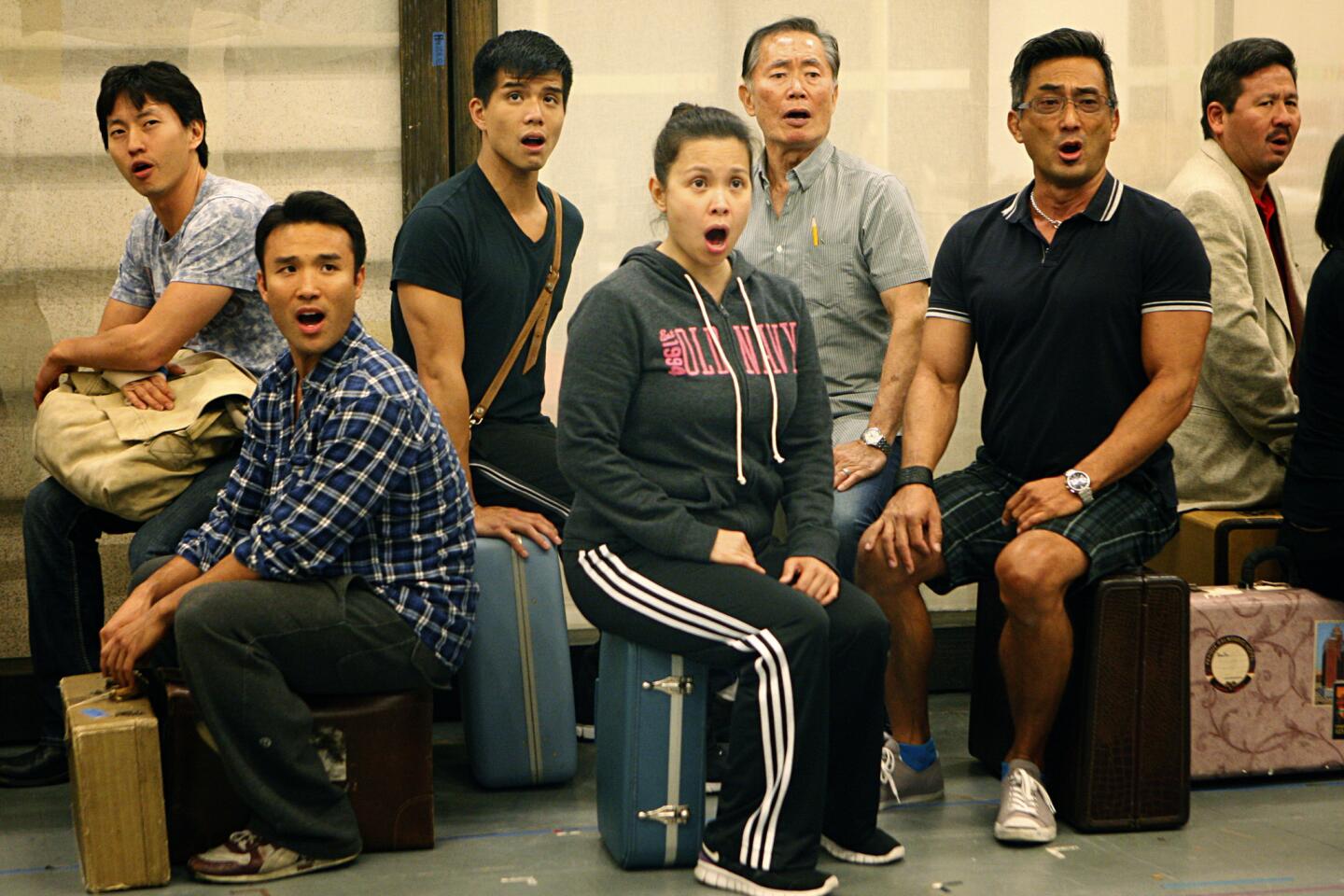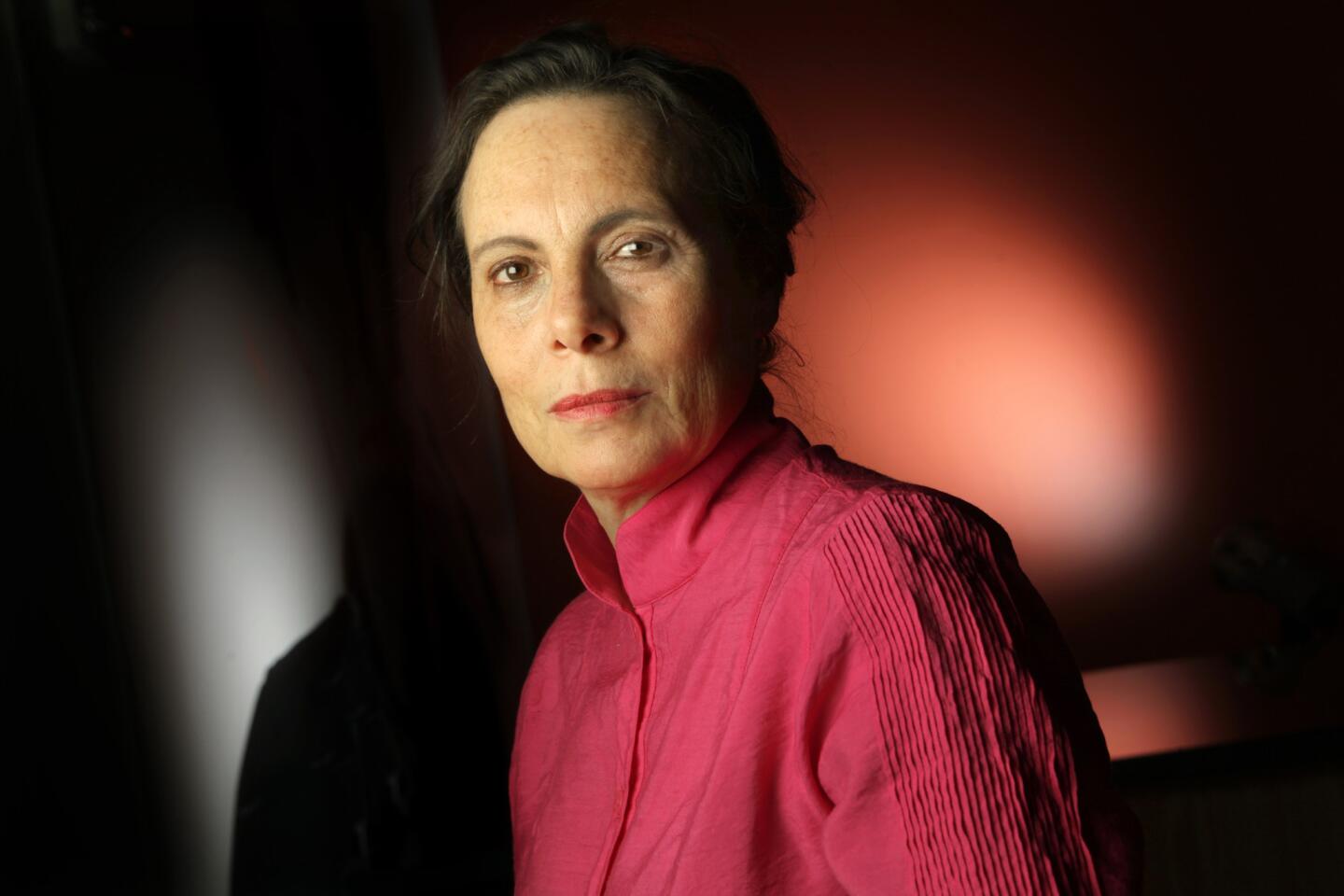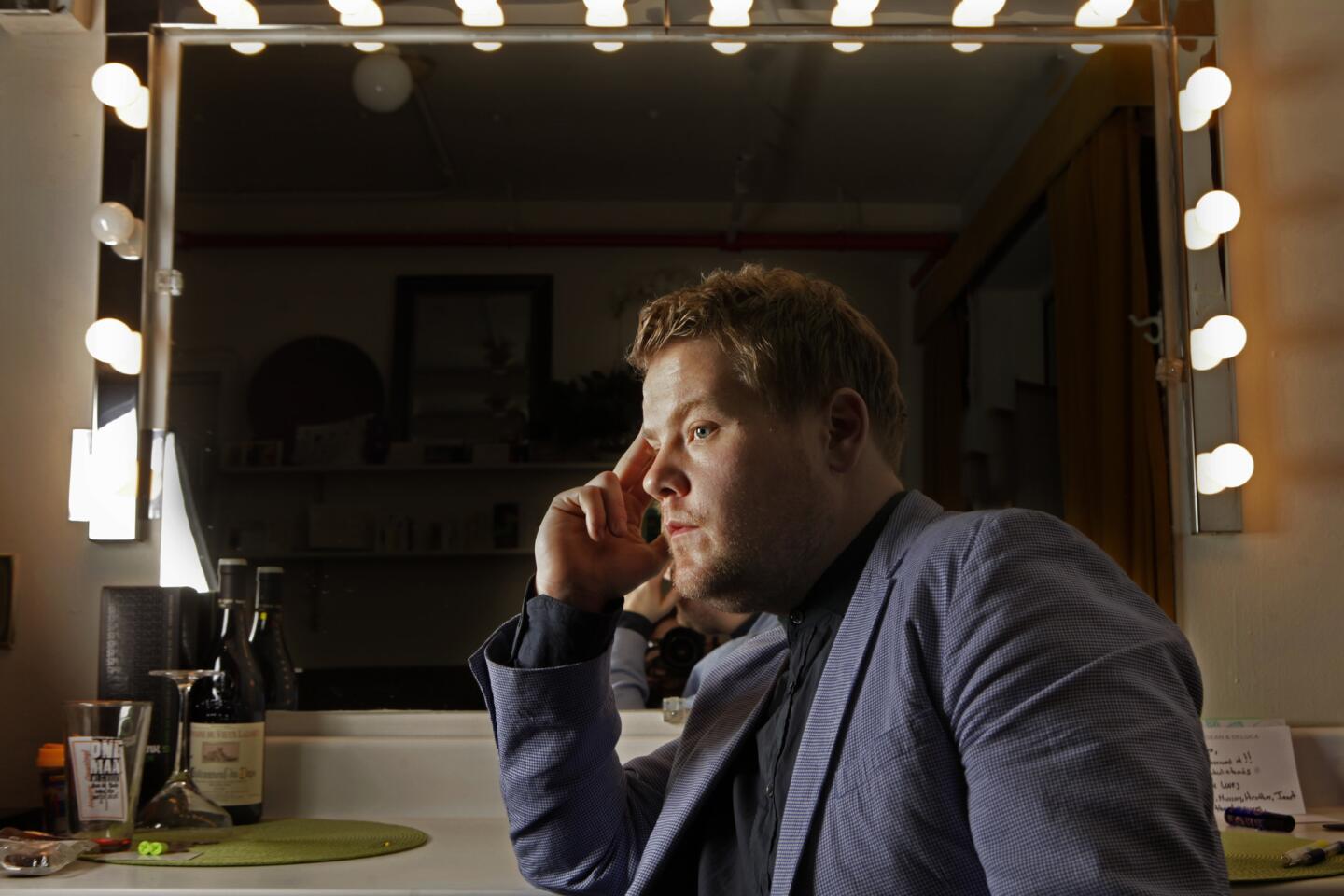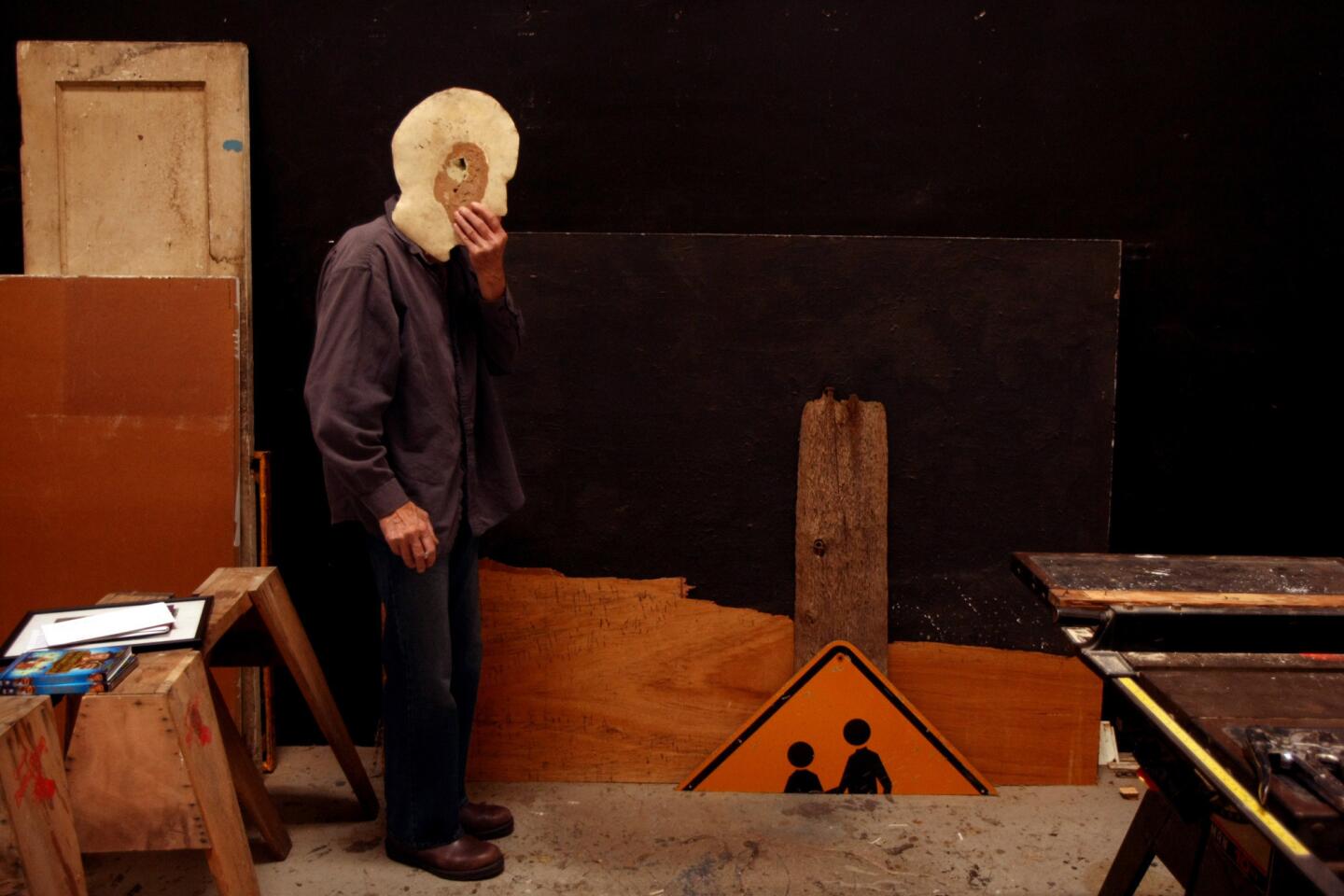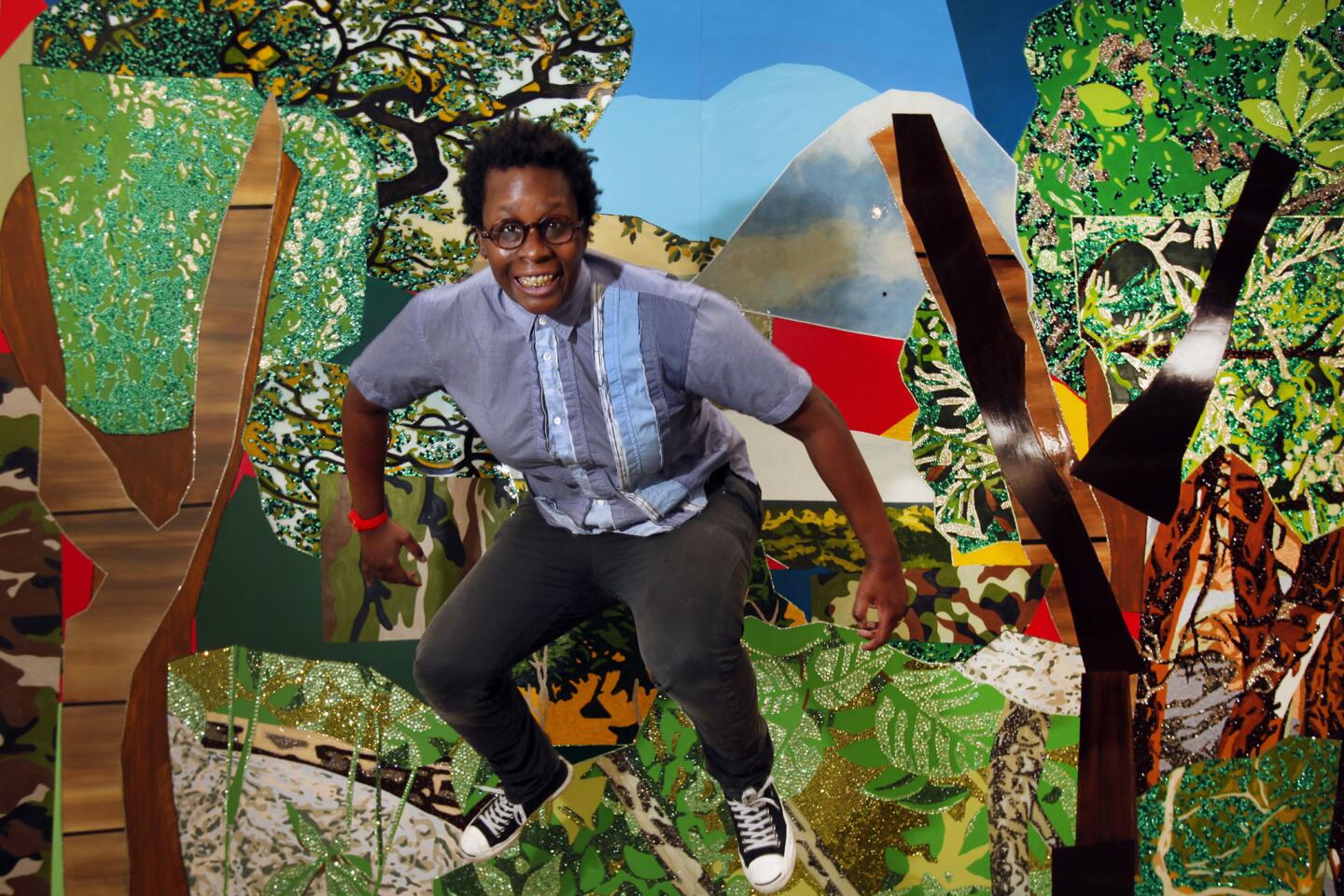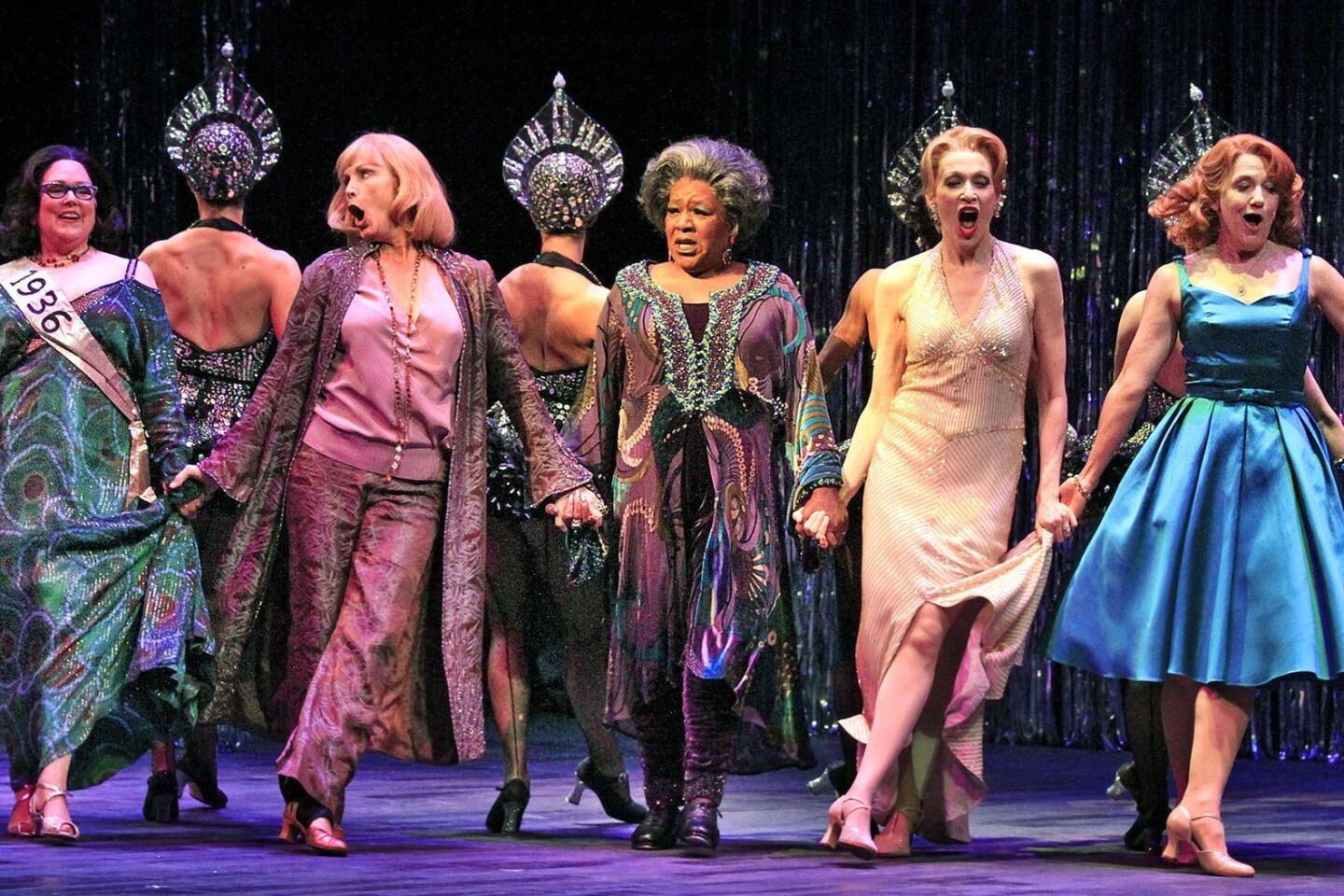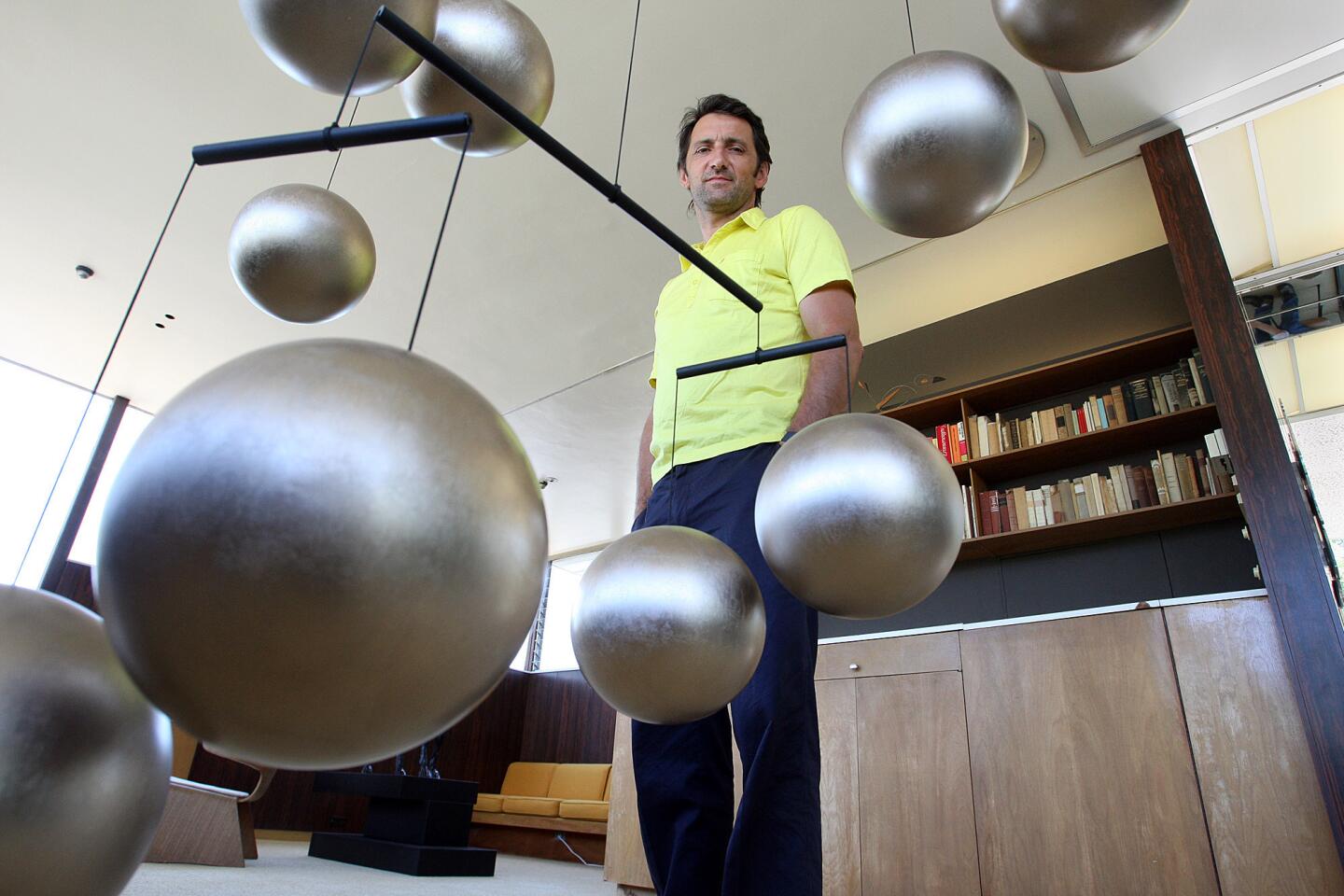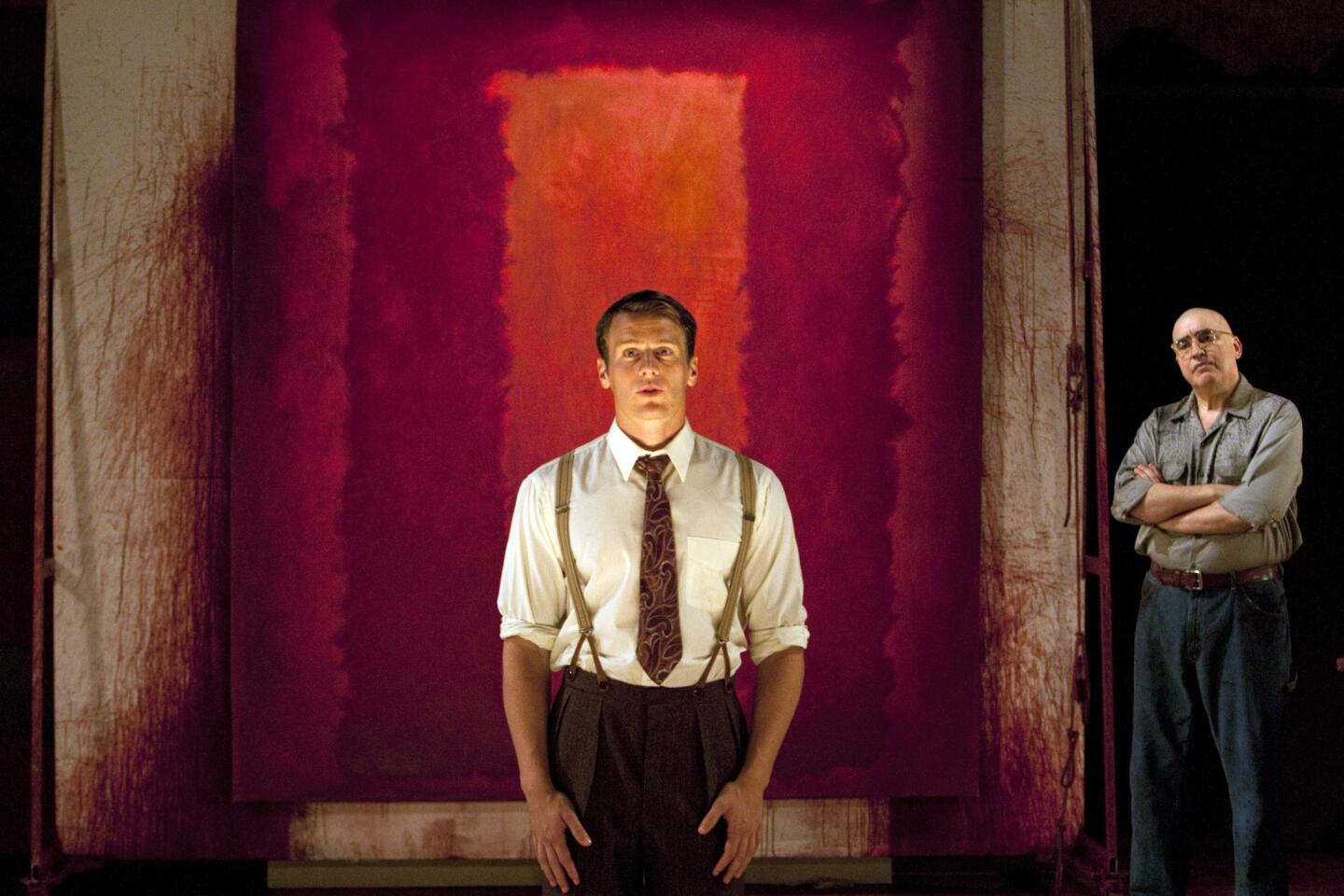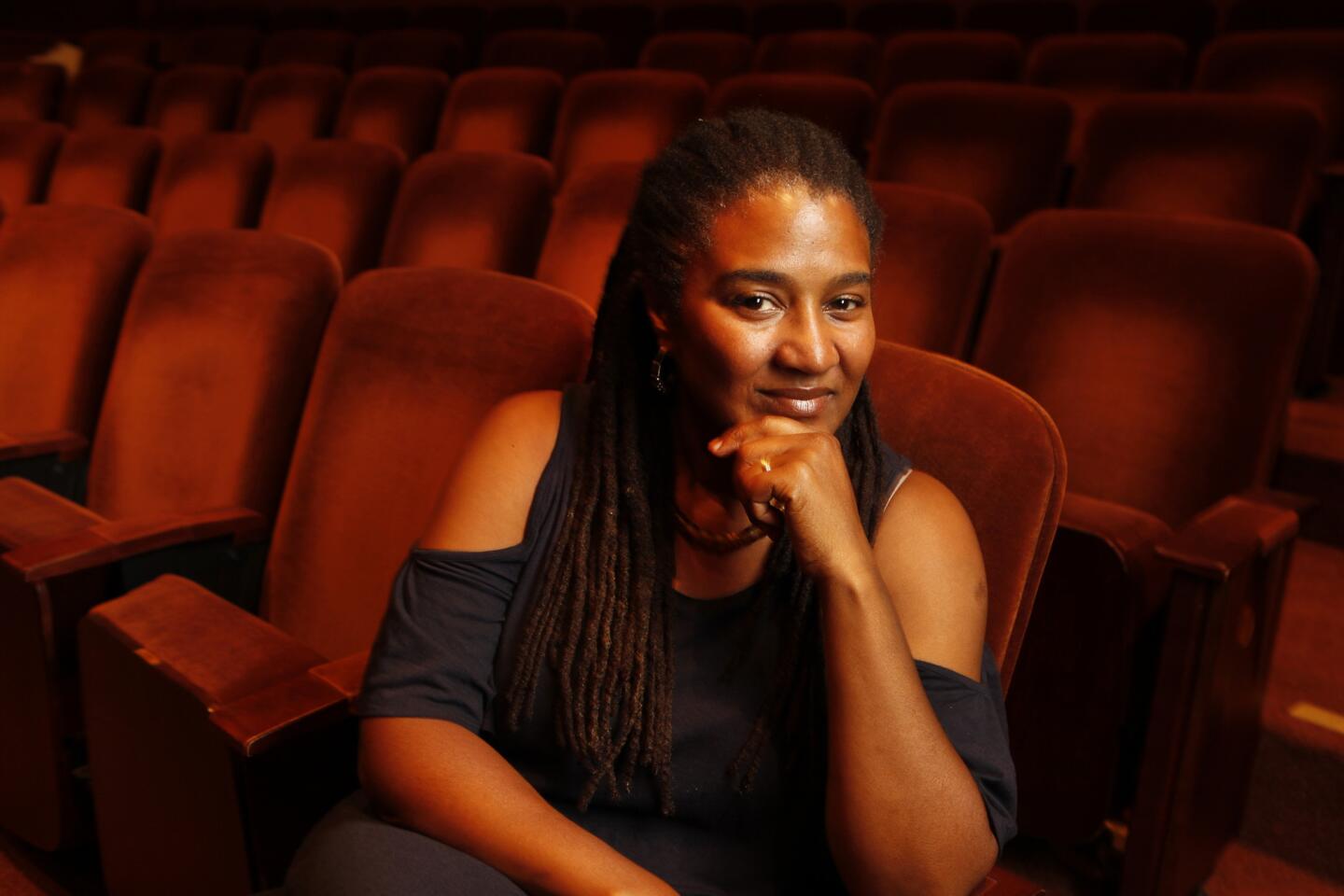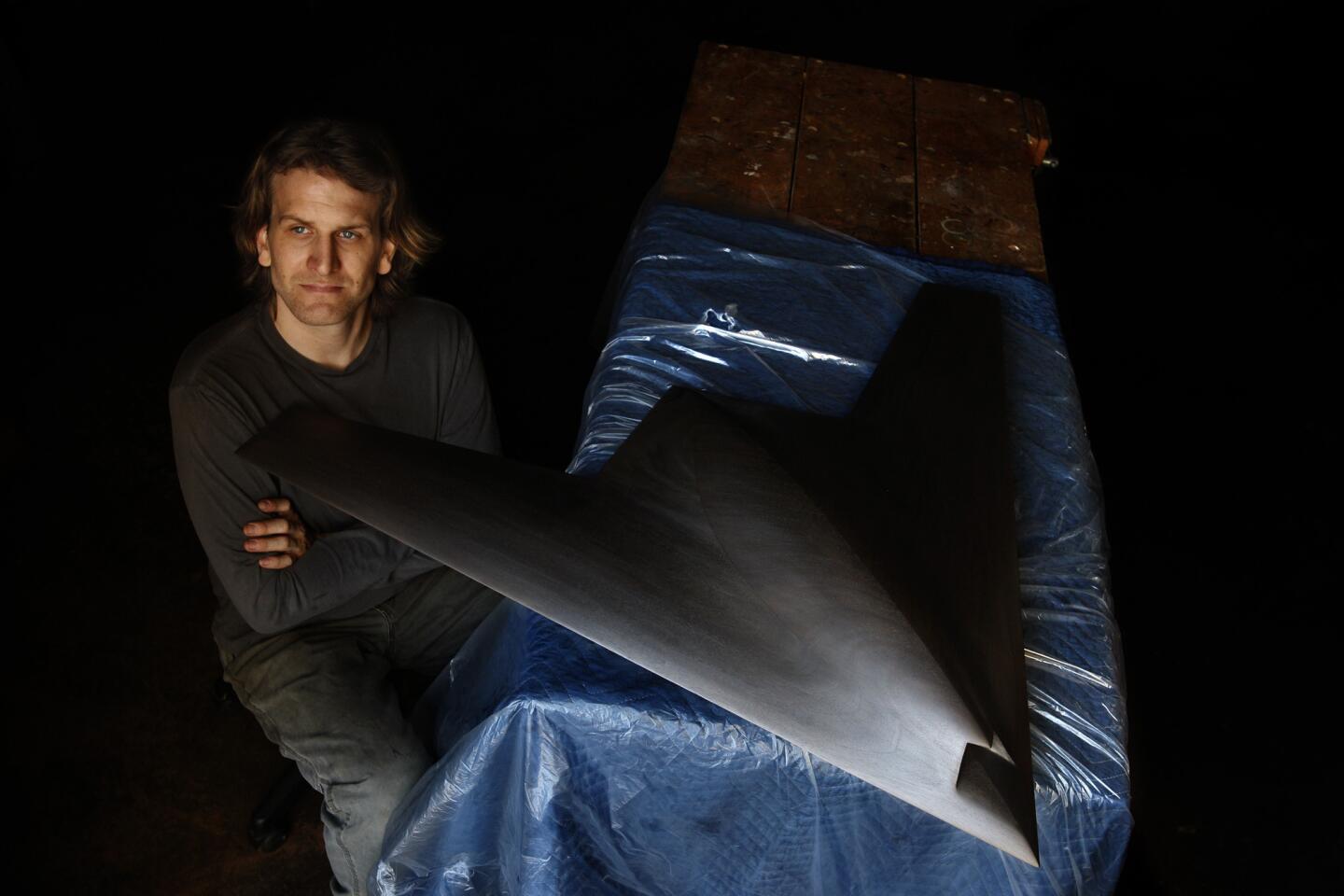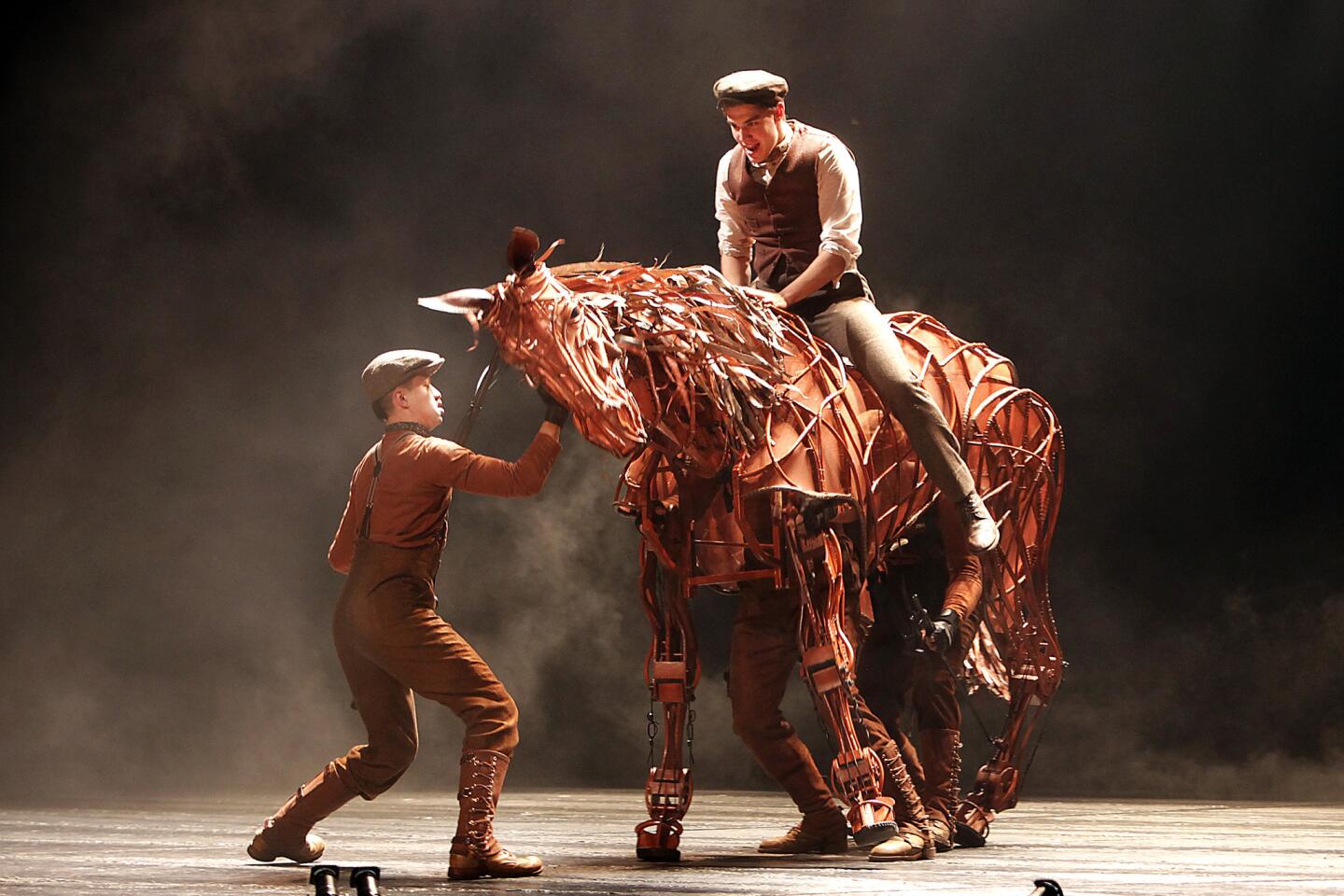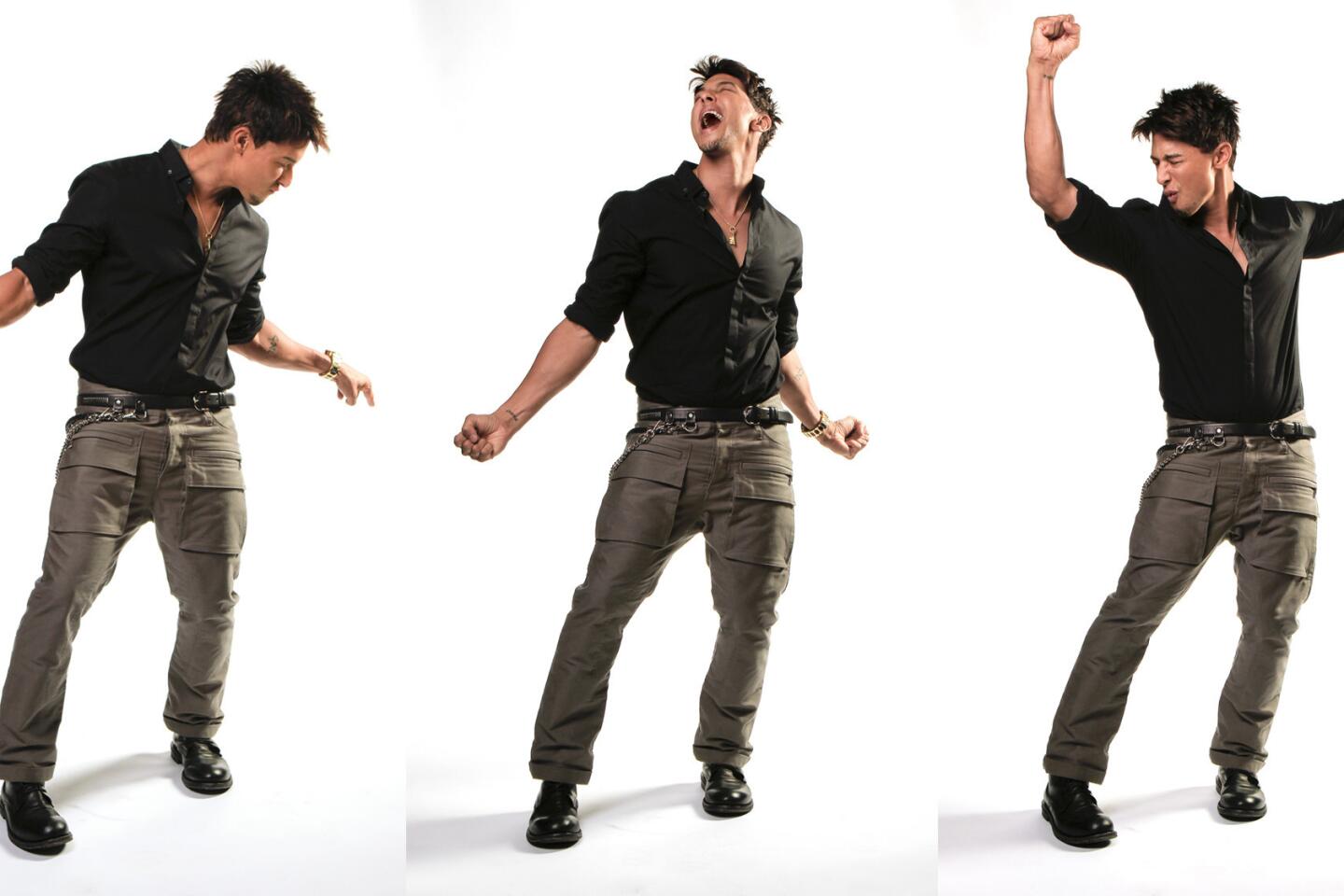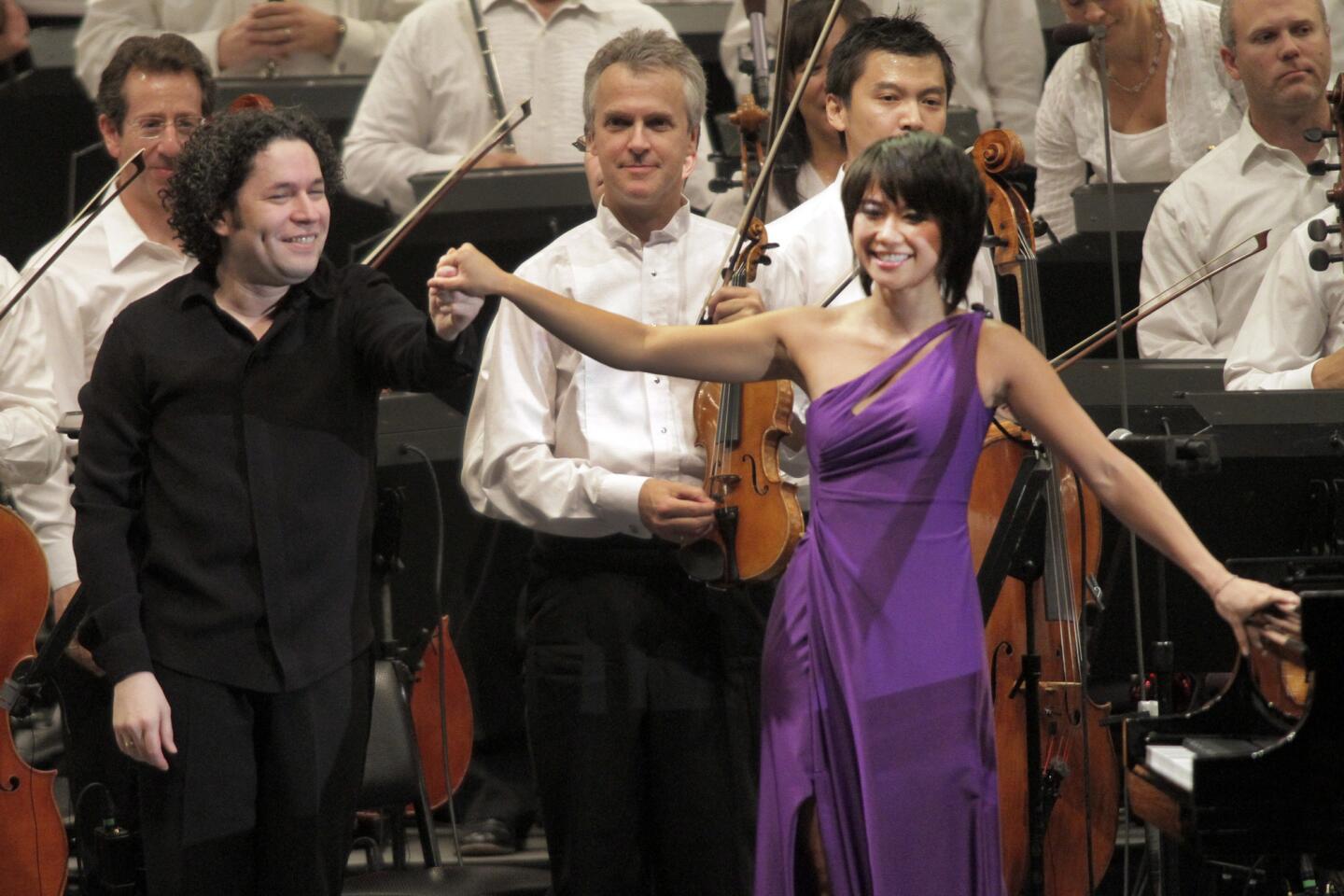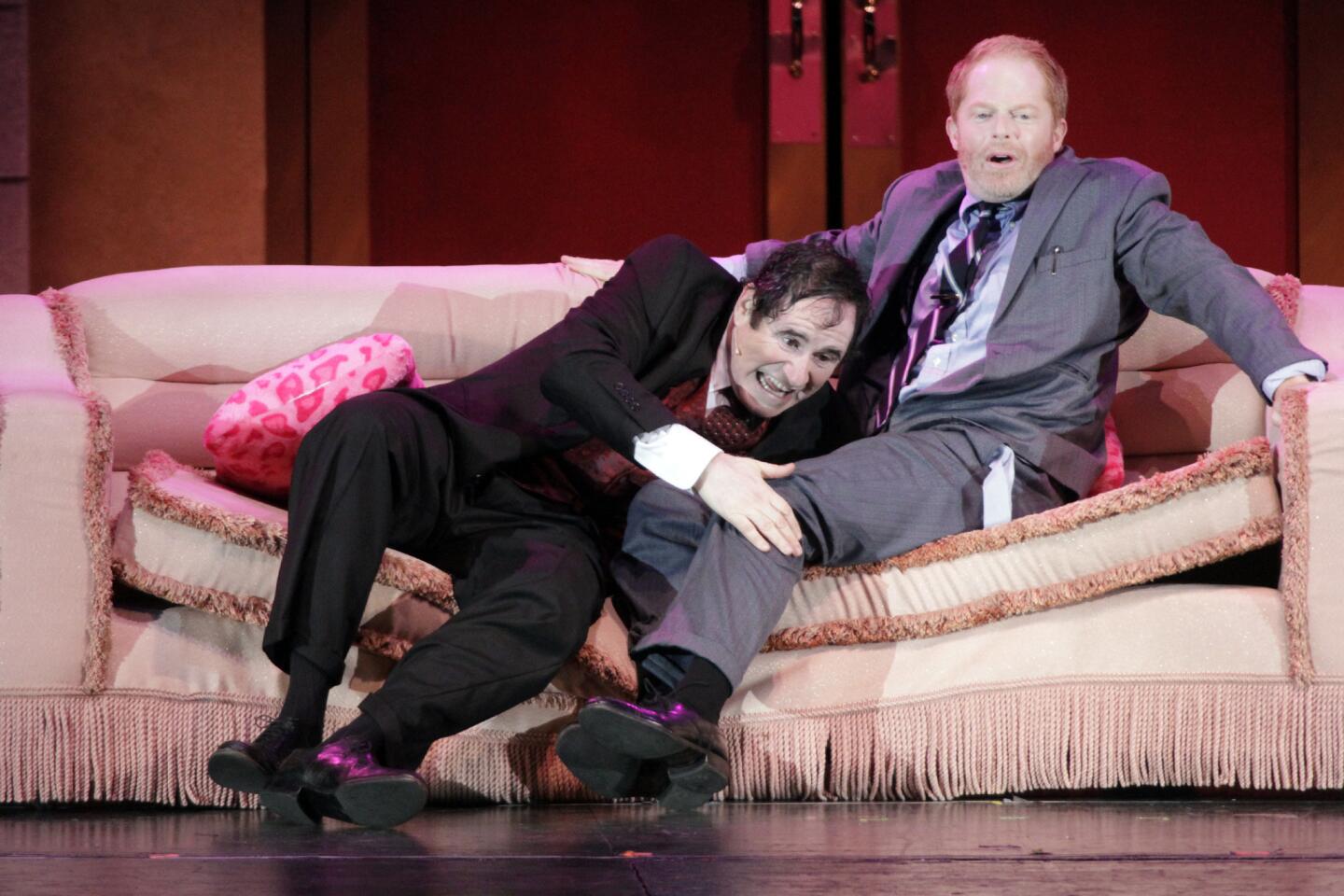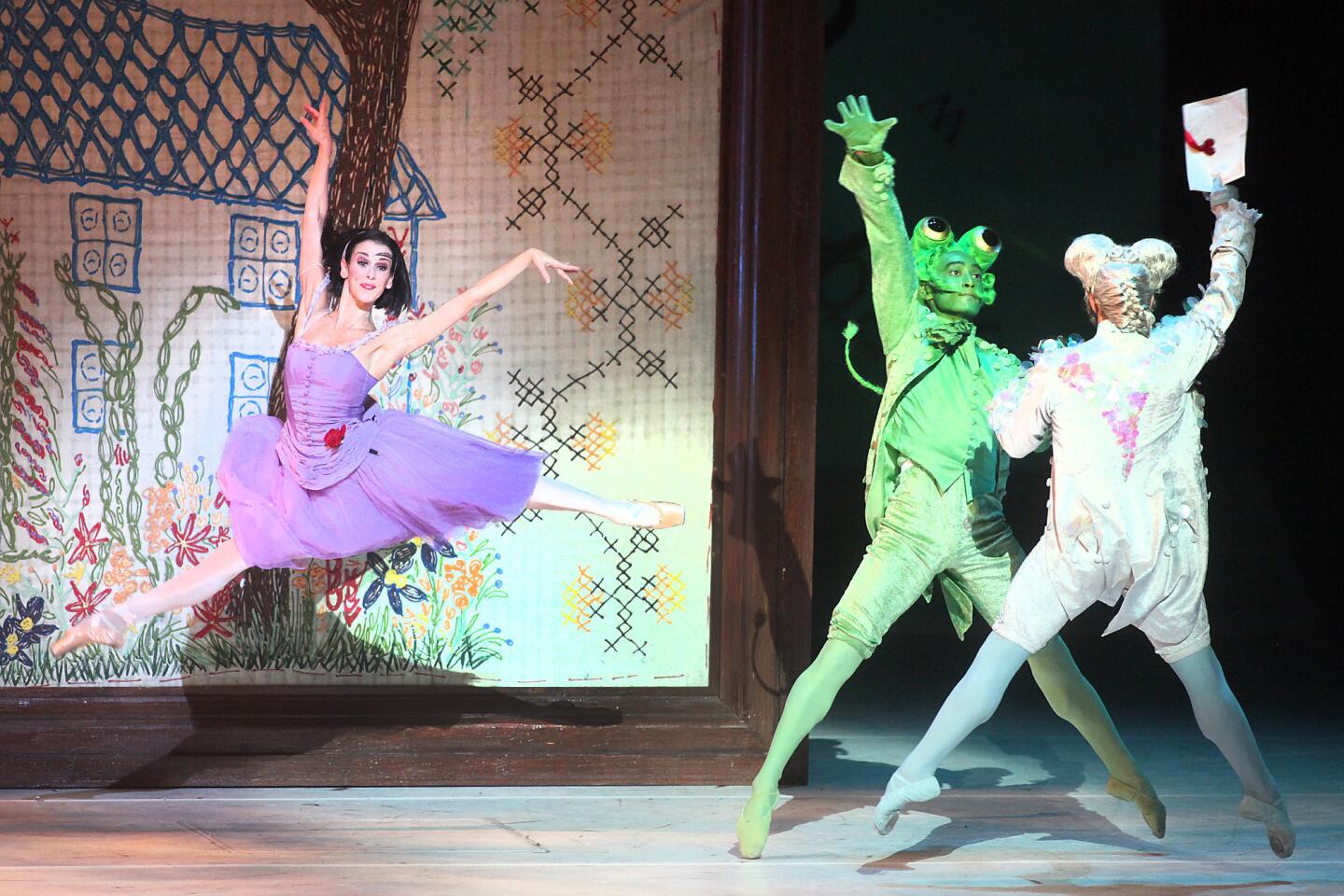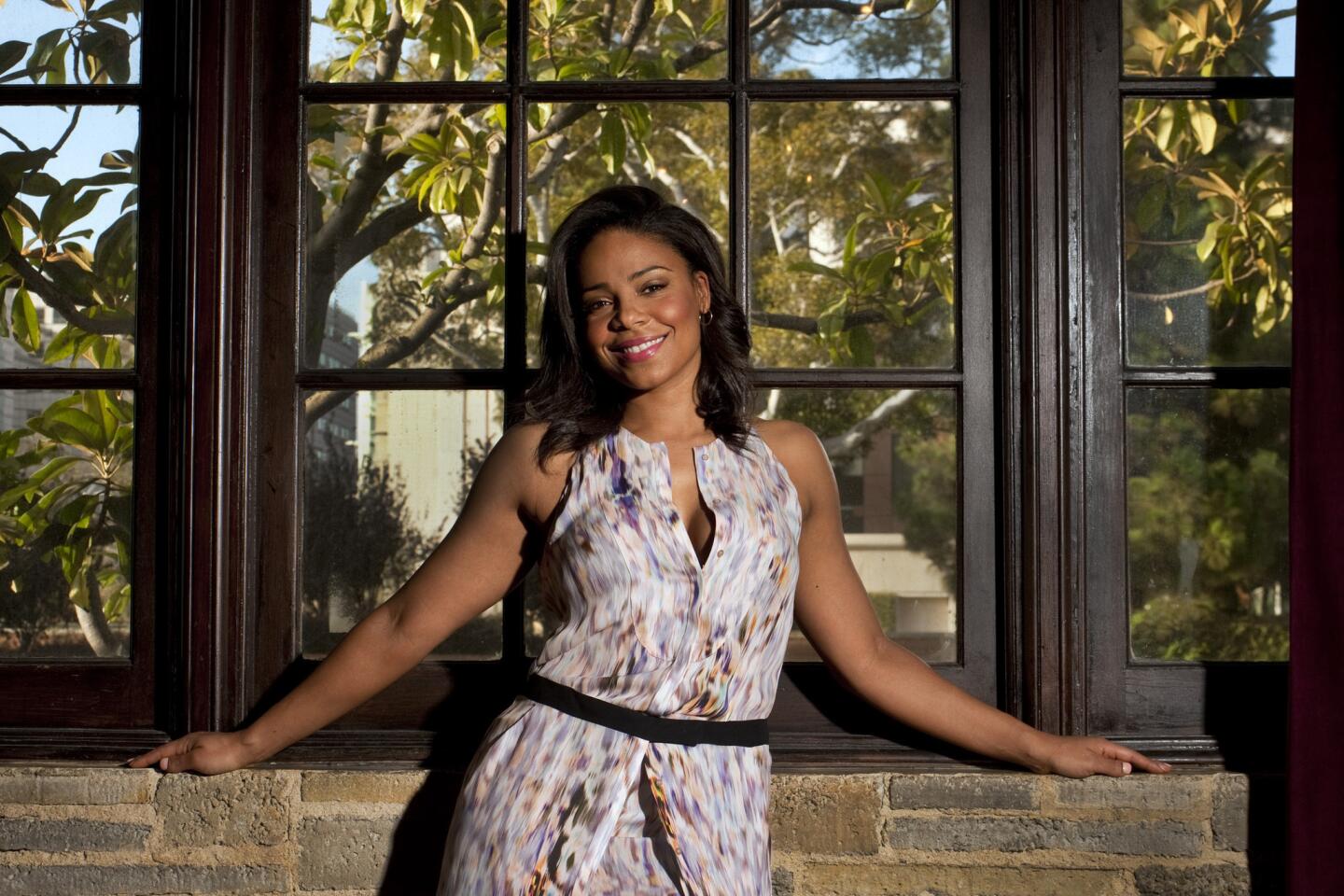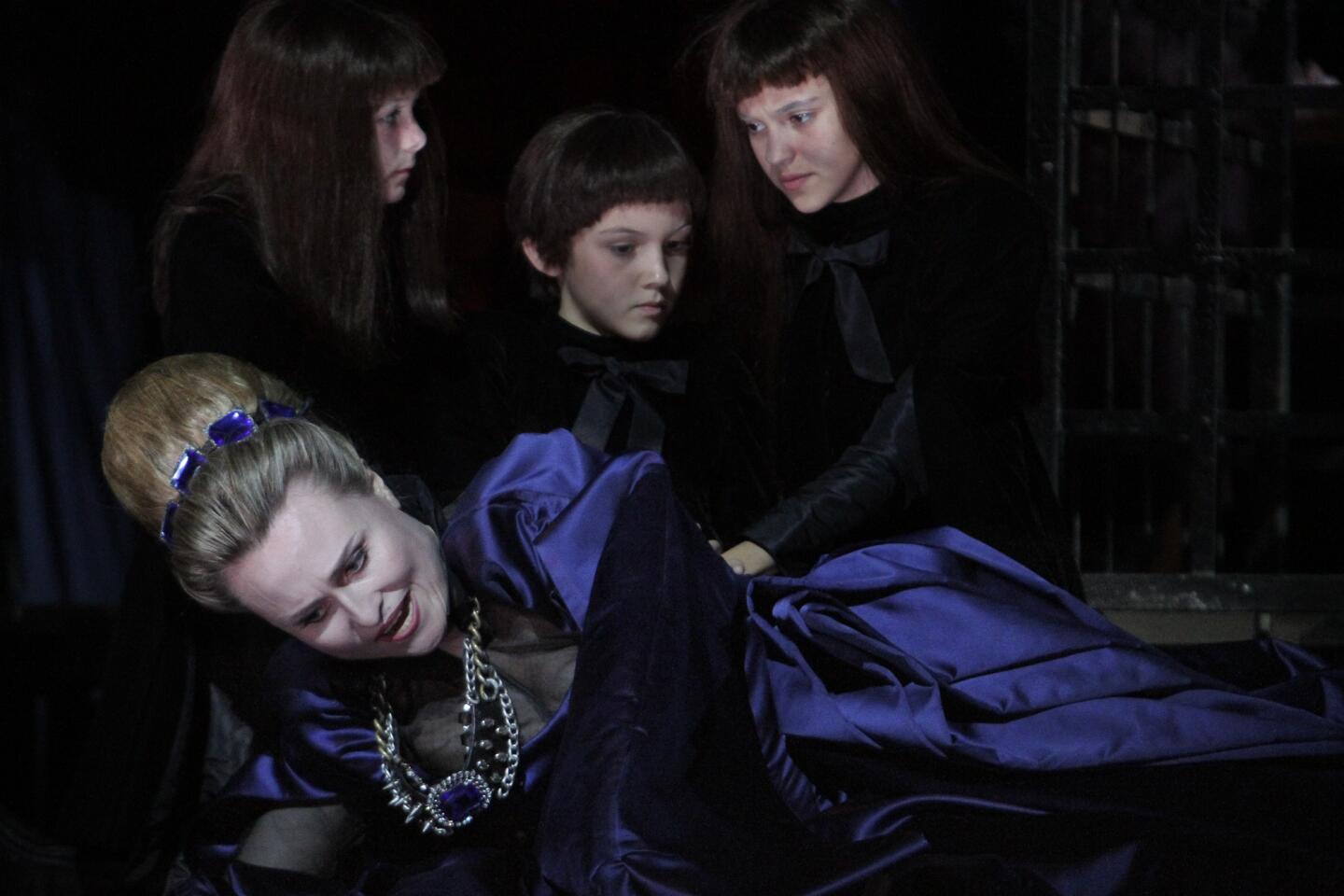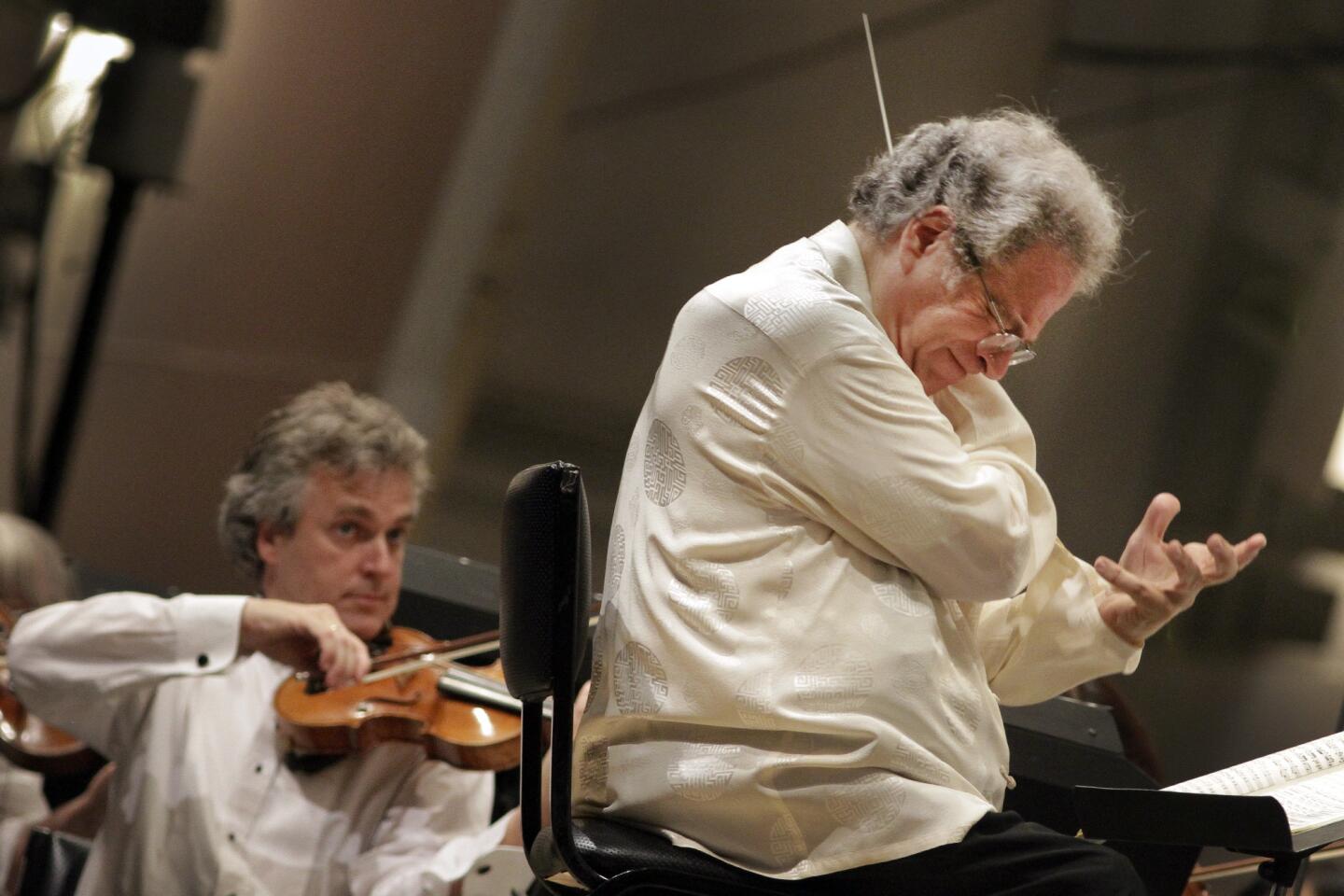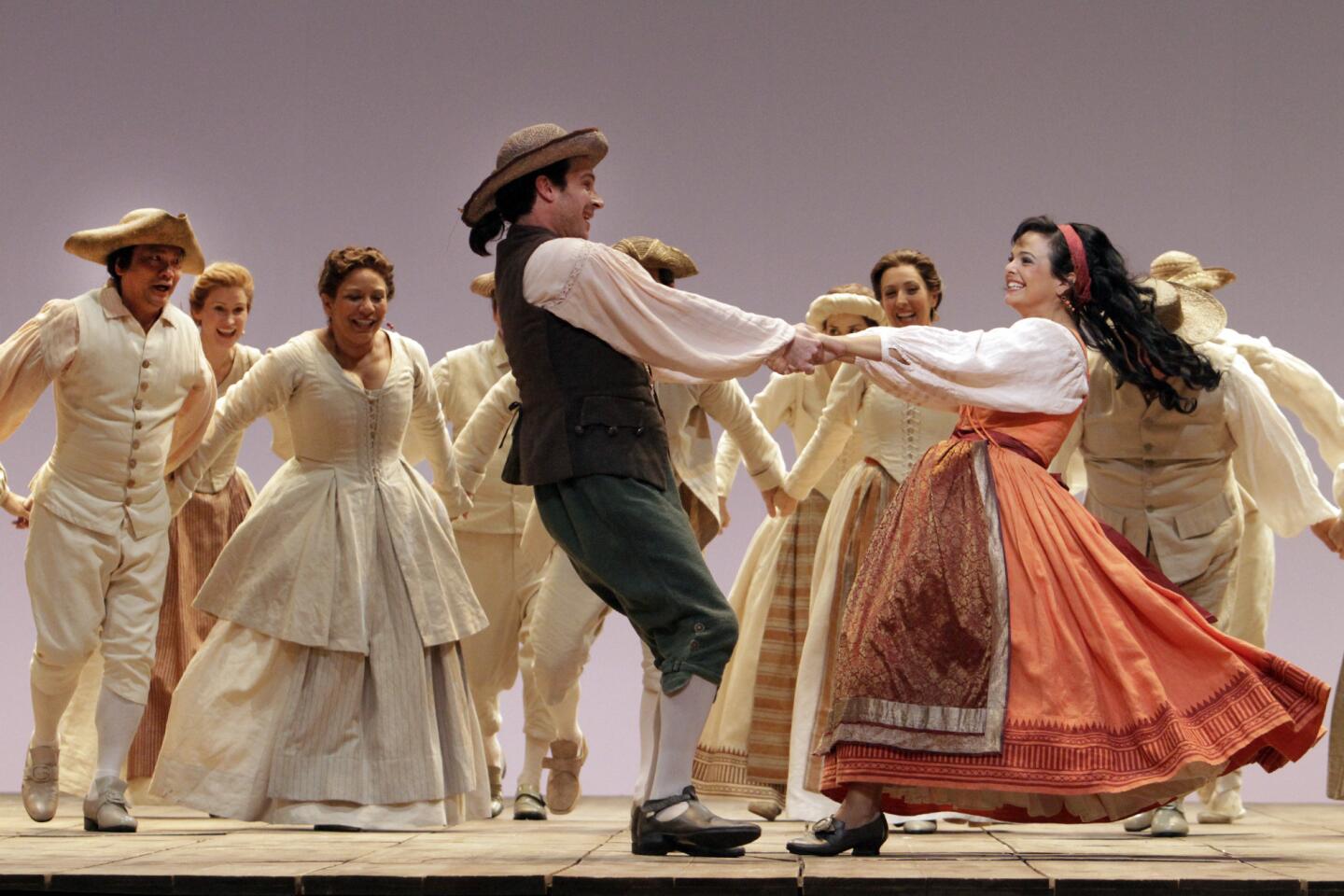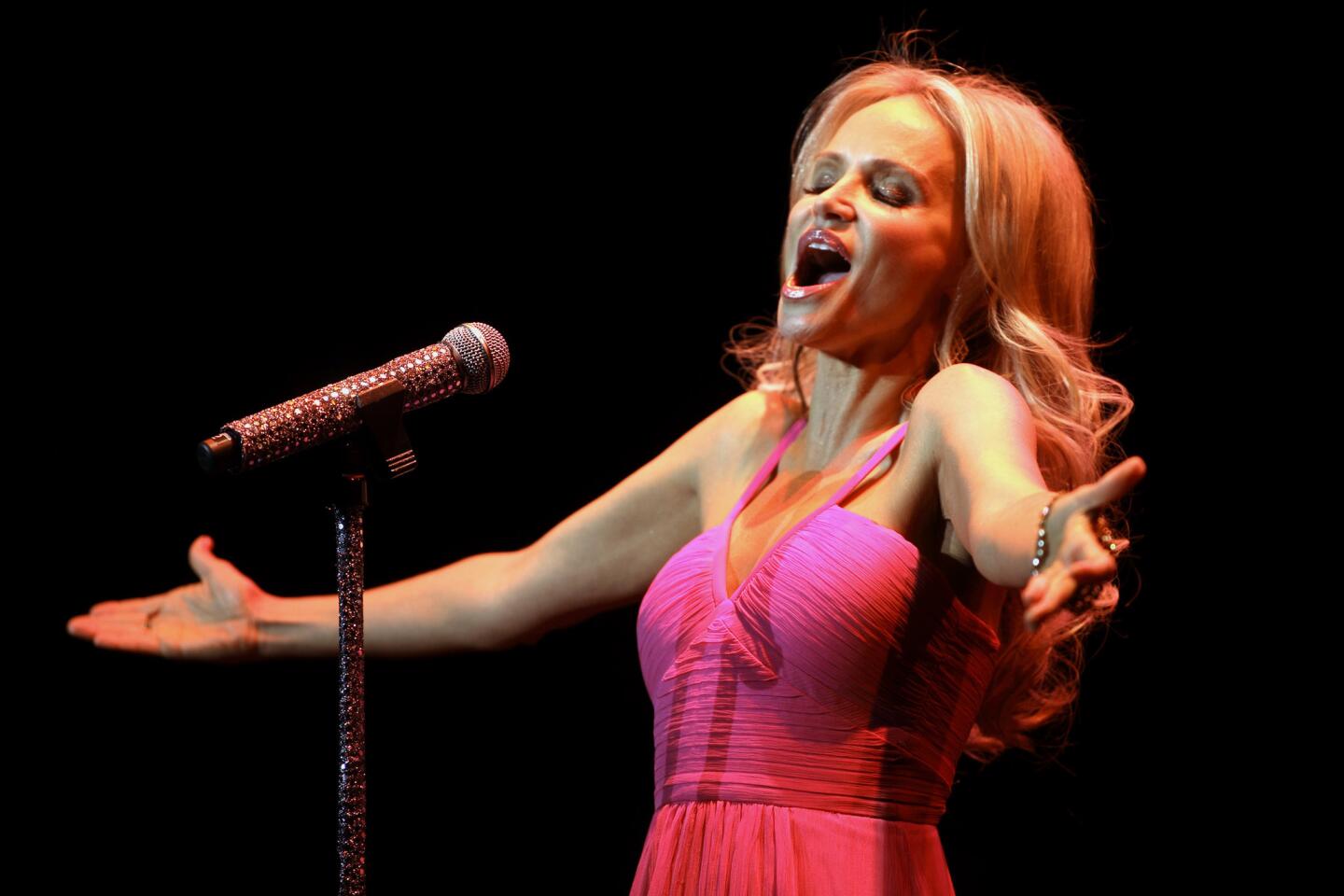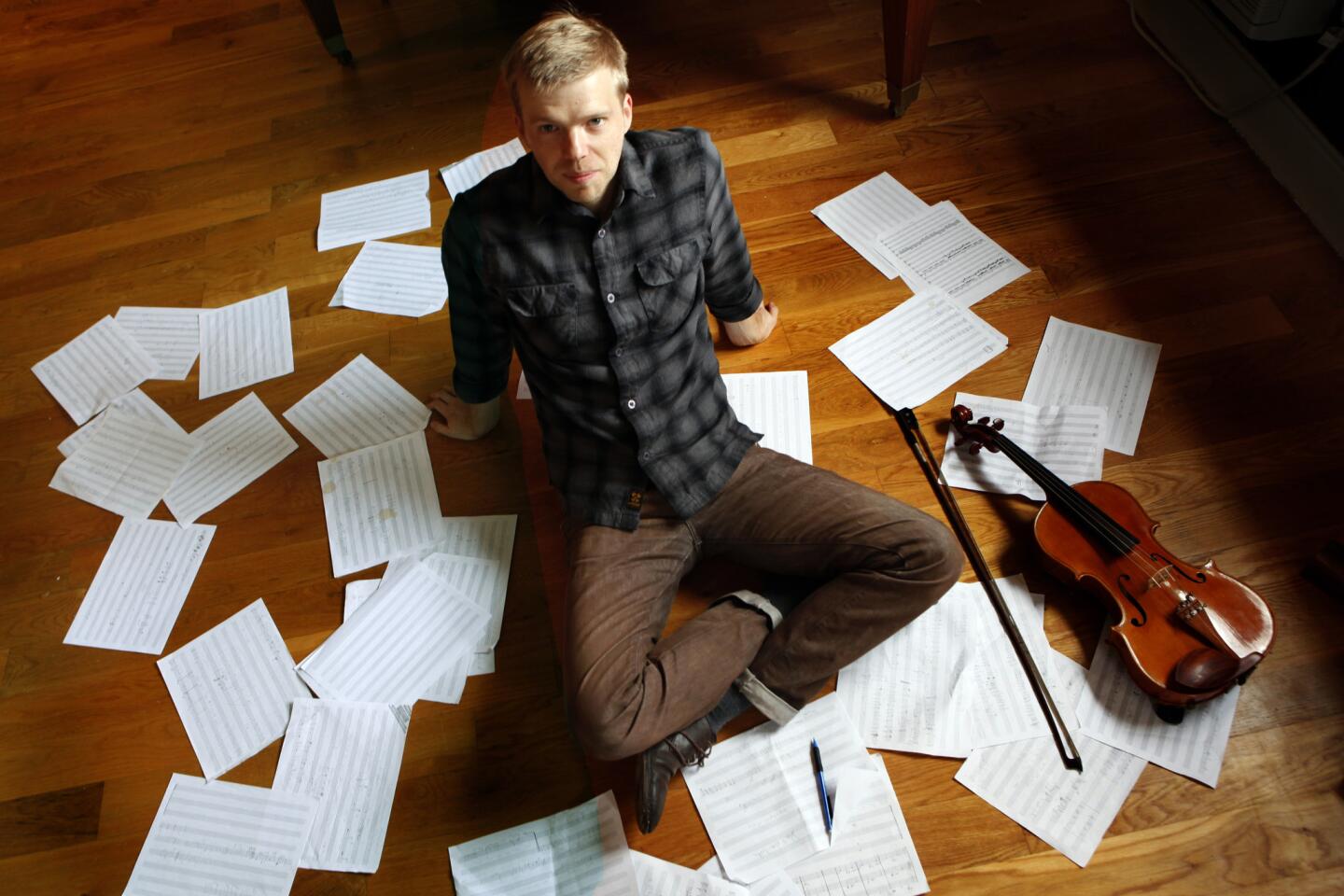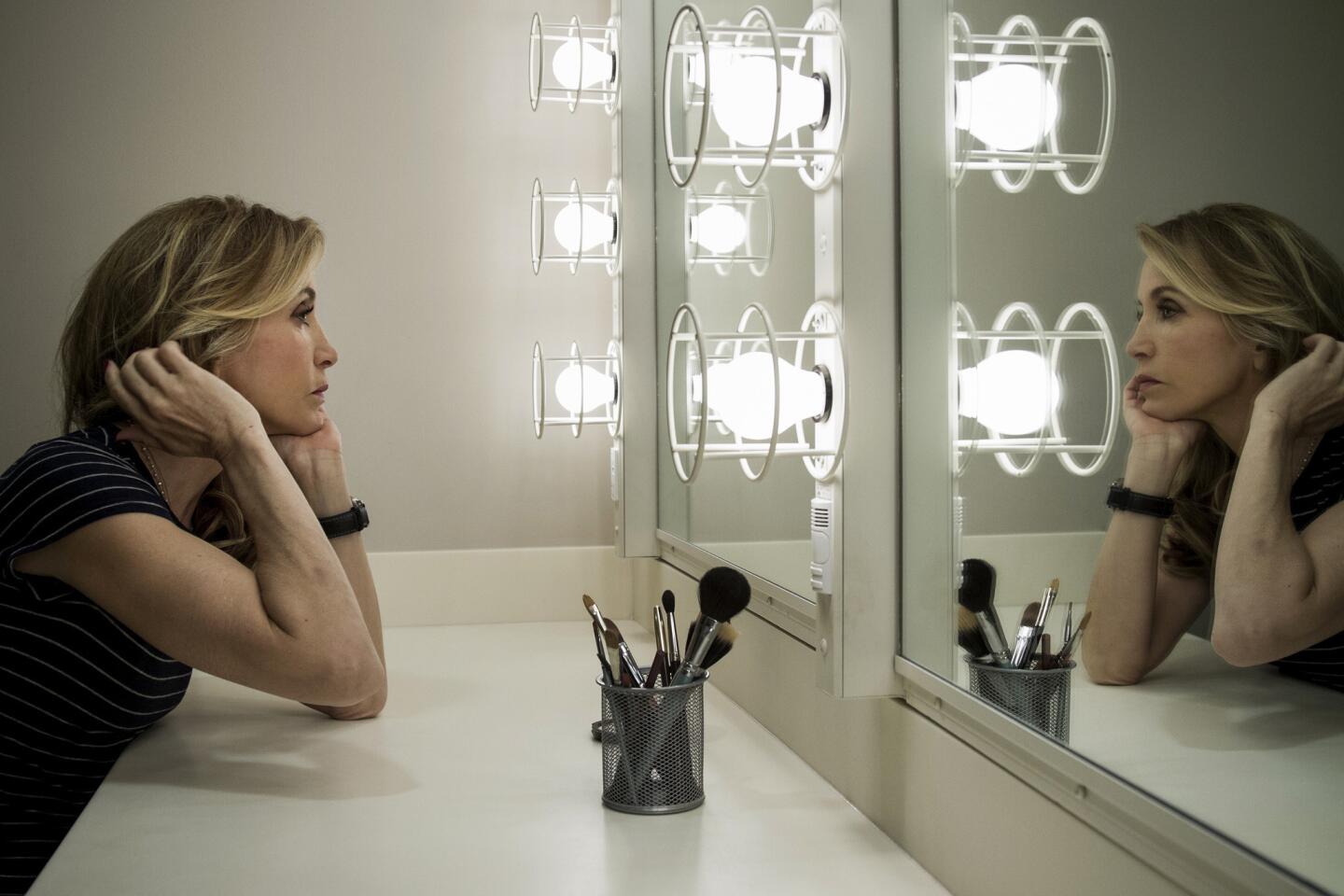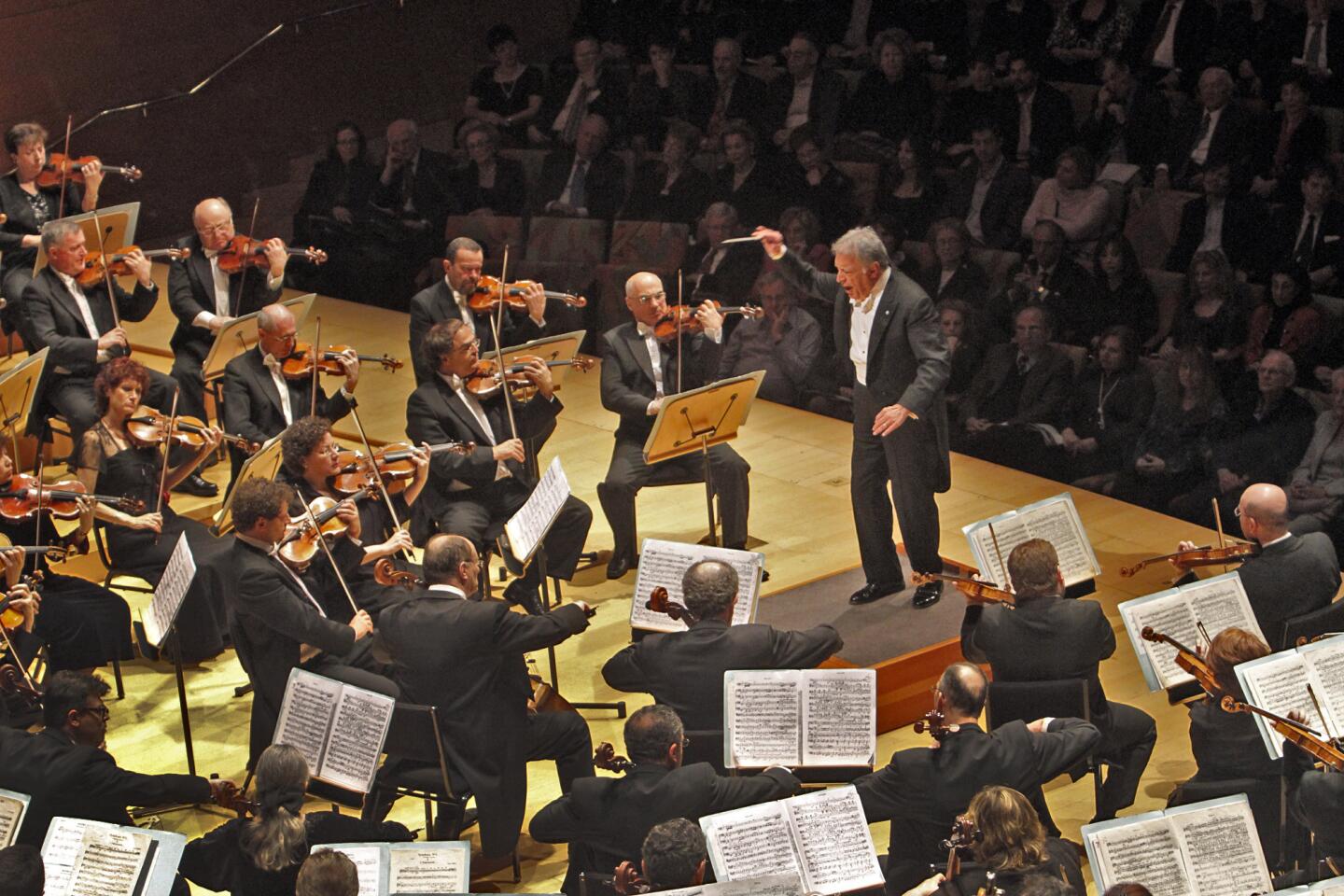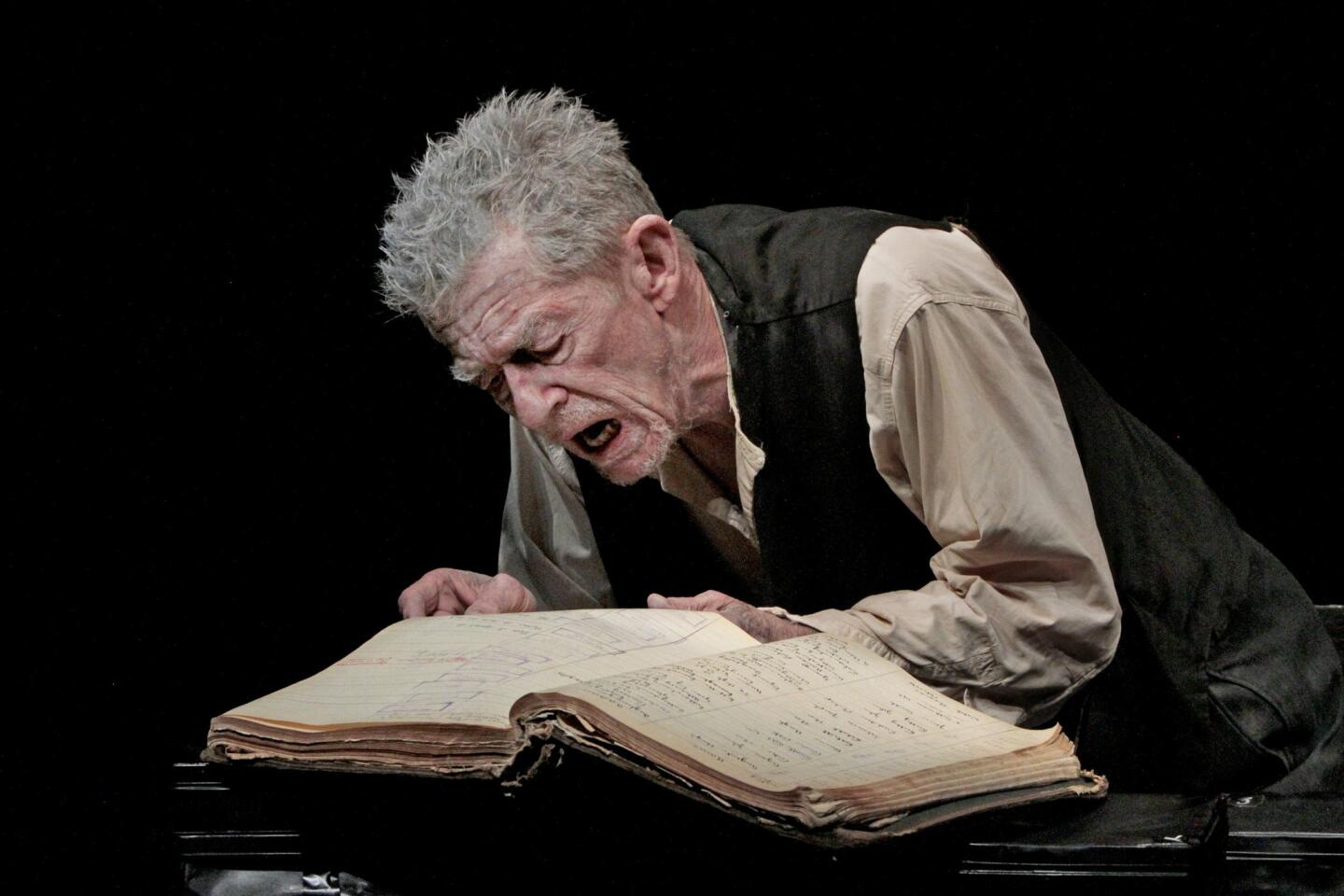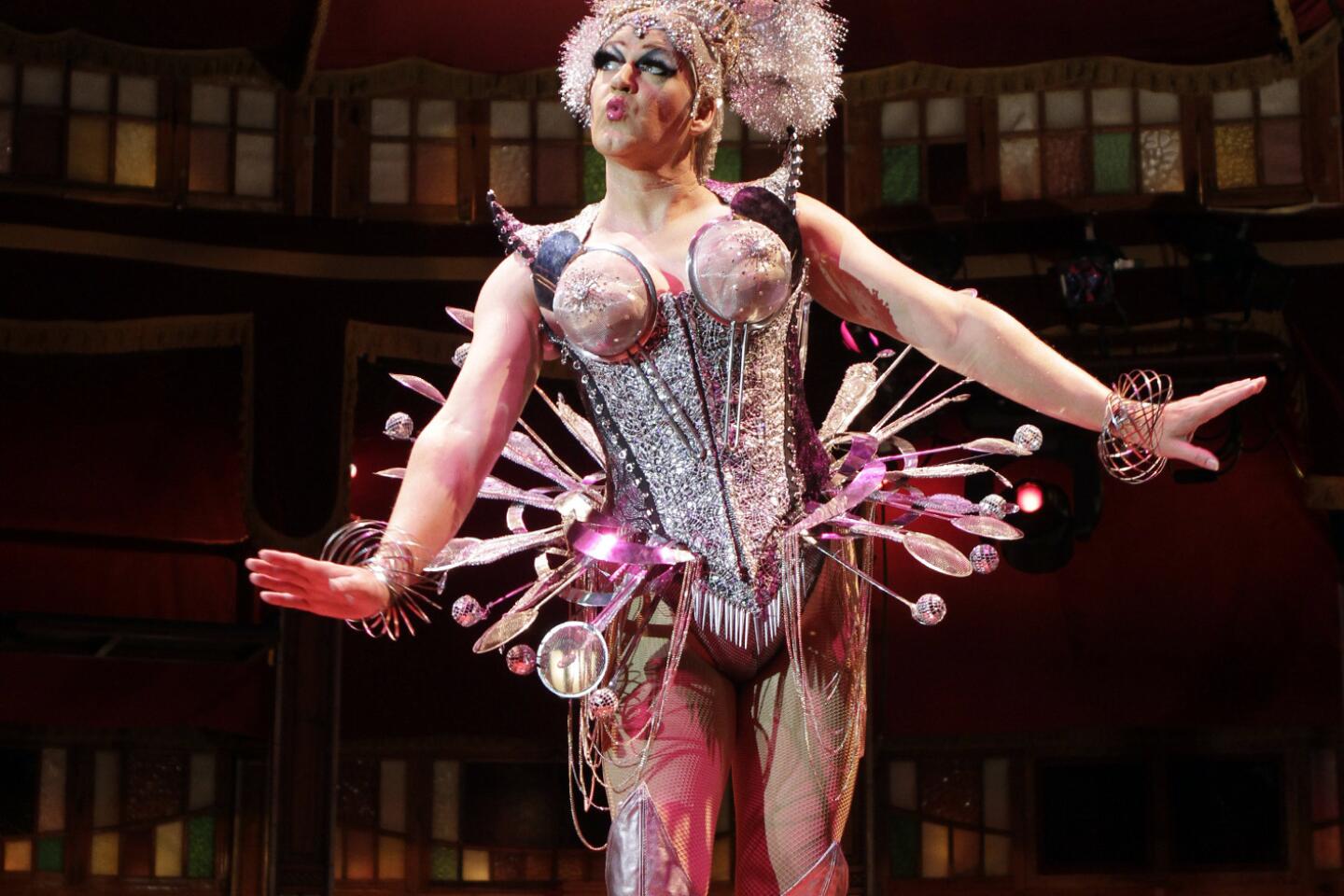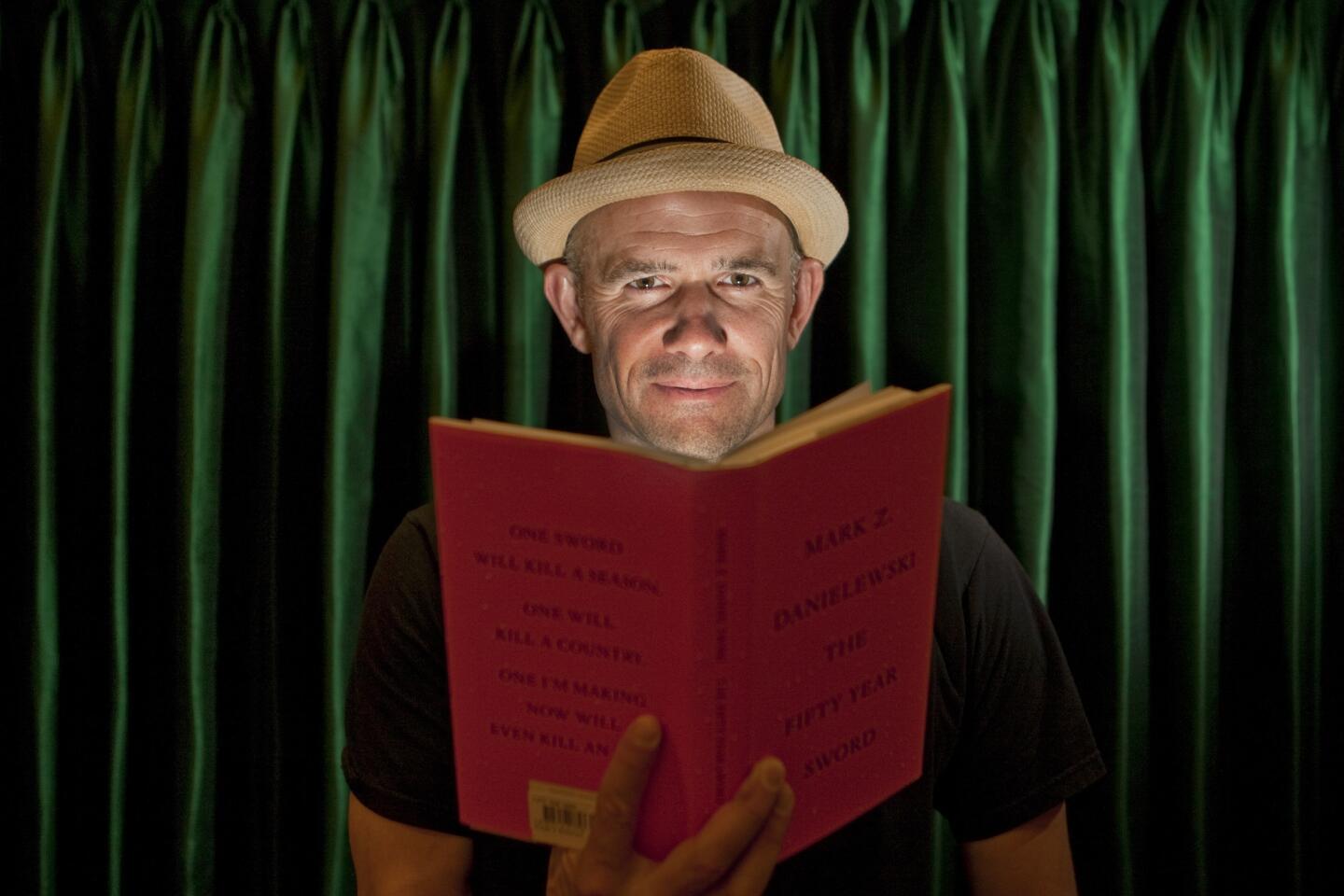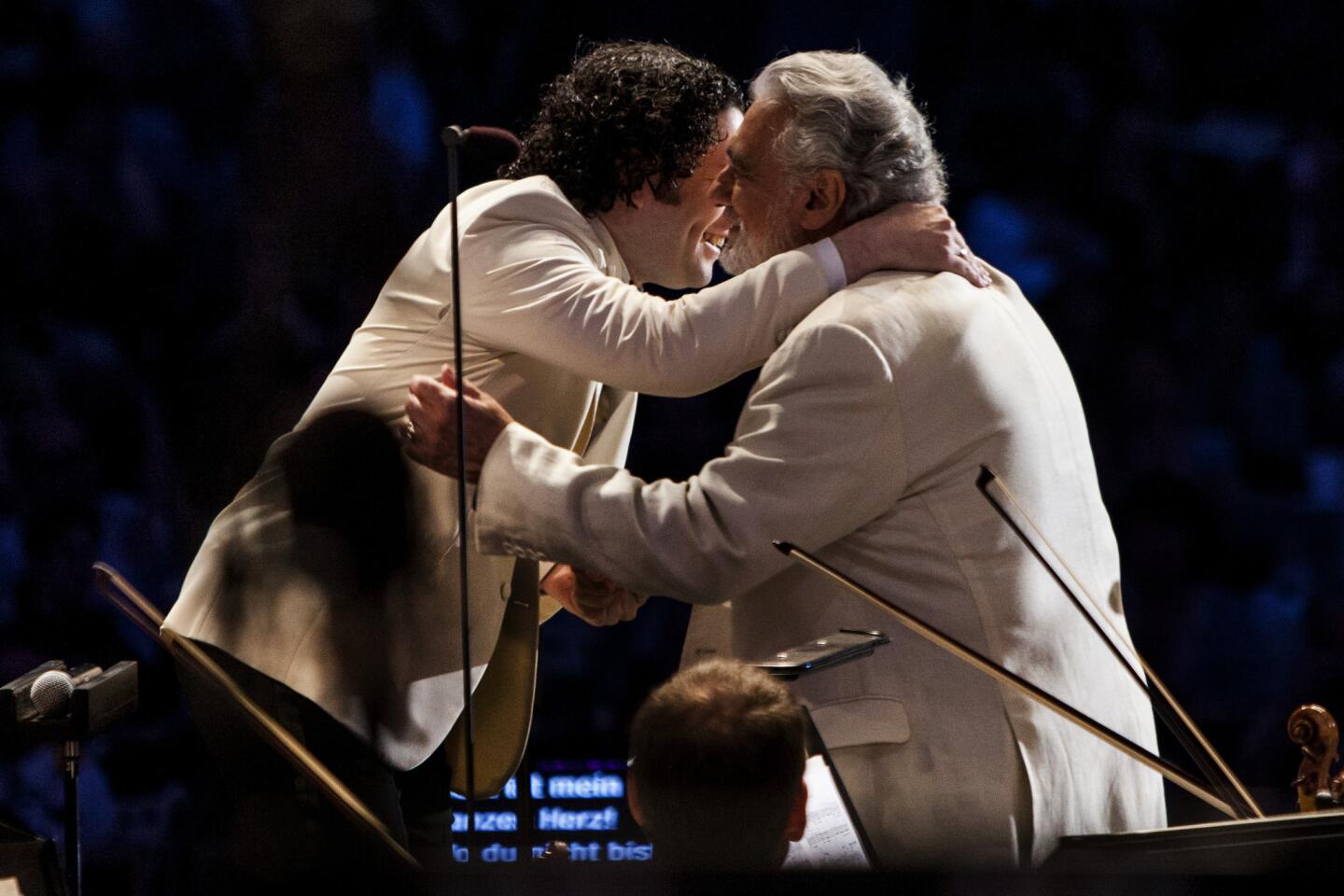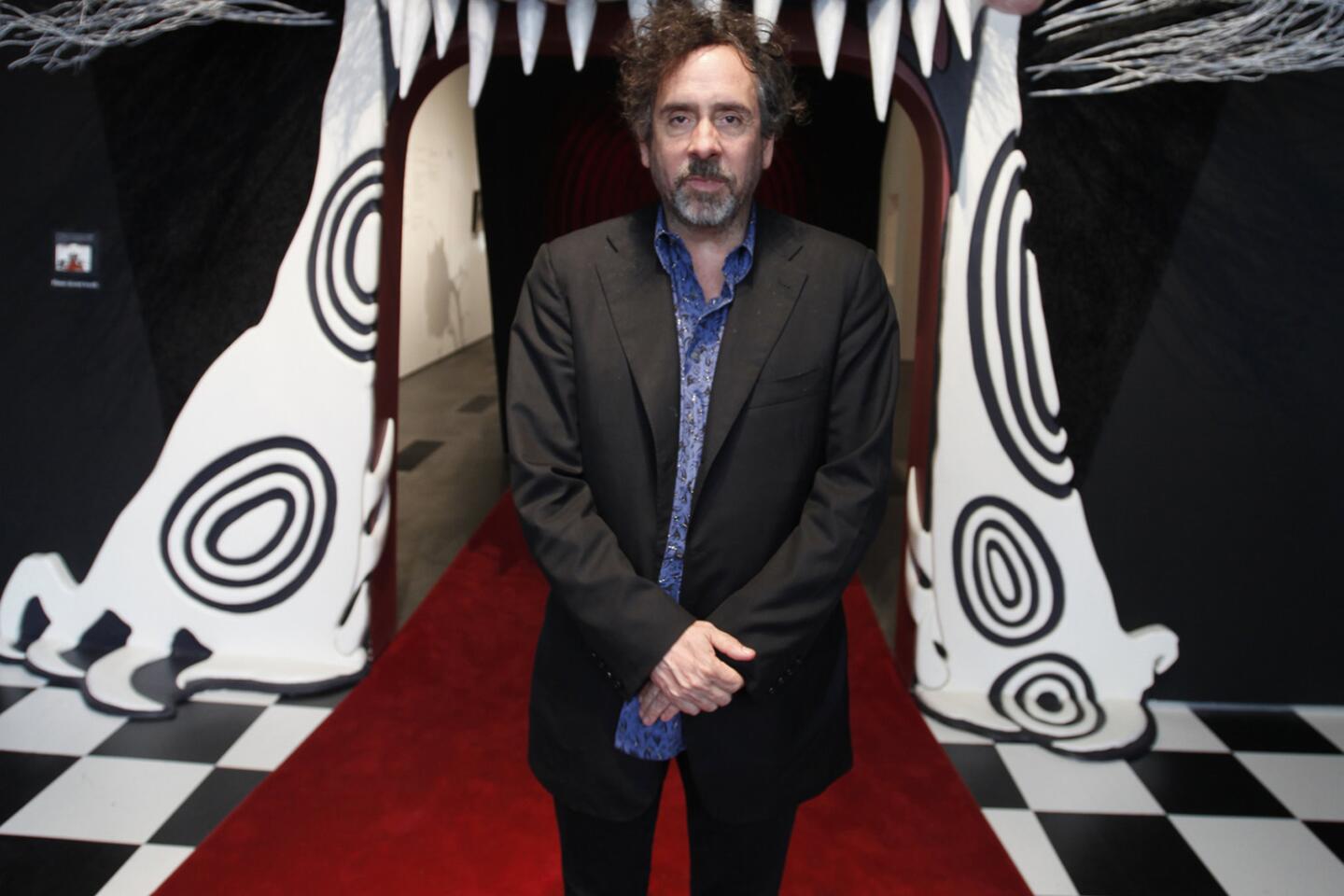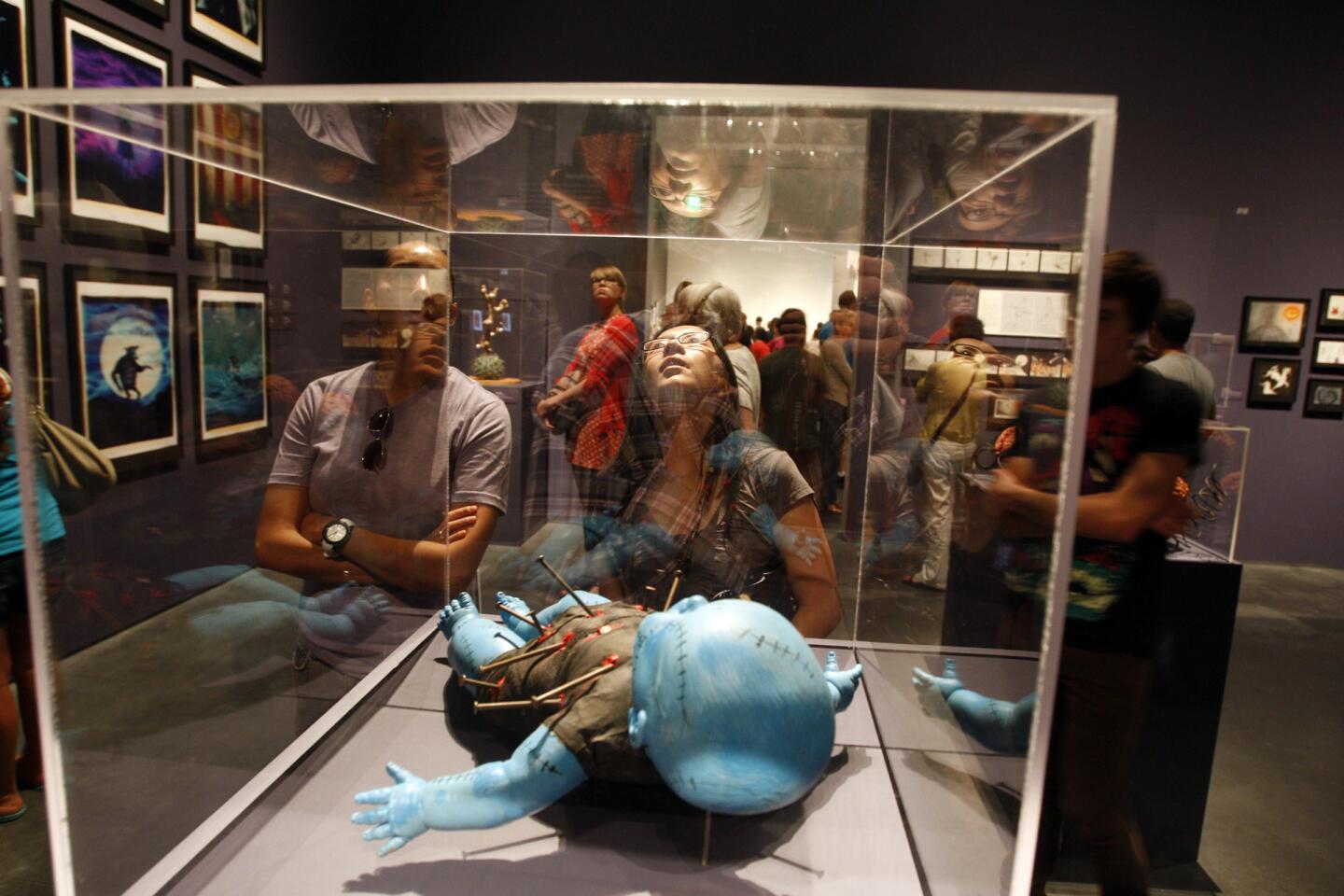Classical musicians suffer for their art — literally
- Share via
So you think classical music is purely a rarefied pursuit, where what matter are creativity, spirit and soul? The musician’s body does not agree.
Not midway through a high-powered symphony. Not sitting near the crashing cymbals in Tchaikovsky’s 1812 Overture. Not during the long haul of Wagner’s “Ring” cycle.
Take violinist David Harrington. He was in rehearsals with his adventurous Kronos Quartet, preparing to play the epic String Quartet No. 2 by Morton Feldman — it notoriously spans six hours without intermission. Just continuous playing through what seems like a universe of time.
“We’d already done eight performances of the piece, and this 1996 concert at Lincoln Center was to be our last outing with it,” he said by phone from San Francisco.
FULL COVERAGE: 2013 Spring arts preview
But pains started shooting up and down his arm 40 minutes into rehearsal. They grew more and more alarming.
“Finally, after several hours of rehearsal, the pain was excruciating,” he said. “We ended up canceling this last and most famous venue for the work.”
As with so many other musicians, Harrington found himself afflicted with a literally show-stopping physical handicap. Luckily for him, the condition was temporary. He could go back to his calling: playing music that demands the utmost precision, fluency, coordination and endurance — and doing so with an Olympian level of artistry.
Not everyone is so fortunate. A trumpeter in Los Angeles once ended up with lockjaw and had to withdraw from the Philharmonic. A number of pianists have developed carpal tunnel syndrome that has severely interrupted their careers.
Harrington spoke about his experience with the Quartet No. 2 and what pain the Kronos players’ bodies have endured with it over the years.
PHOTOS: Gustavo Dudamel career in pictures
“My back, John Sherba’s little finger. Joan Jeanrenaud’s leg that went to sleep. Beyond that, how we trained ourselves to stay in the character of the music,” he said.
“But there comes a point when that pain is almost unbearable. In Hour 3, I would get so angry at Morton [Feldman]. Then you forget about it because the music is so incredibly beautiful, the audience is ecstatic, in another space. The experience is unlike anything else.”
That’s how listeners on the other side of the footlights see it, with no idea of the risk of physical injury in the pursuit of aesthetic goals.
Reports of torn rotator cuffs, repetitive stress injury, inguinal hernias, exploded neck vertebrae and lower spine problems tell the story. The ailments sound like a disabled list for a professional sports team.
“Elite athletes of the small muscles” is how cellist Janet Horvath refers to her fellow musicians. Unlike athletes who are likely to work 10 to 15 years, musicians boast long careers, so their bodies must toil for decades, with a regimen of practice, rehearsals and performances, often for more than 10 hours a day. As with cars, human parts wear out. And repetitive motion with tensed muscles and held positions takes a huge toll on the body.
PHOTOS: Arts and culture in pictures by The Times
Even a young pro such as L.A. Phil music director Gustavo Dudamel is not immune, sustaining, in a wildly exuberant flourish, a neck/shoulder injury a few years ago. Famous pianists such as Leon Fleisher and Gary Graffman have grabbed headlines with their agonizing hand disabilities, their attempted surgical repairs and eventual recoveries.
In fact, orchestra ranks are filled with casualties, especially among string players.
Laura Hamilton, principal associate concertmaster in the Metropolitan Opera Orchestra and in her 27th year there, said: “I played violin so many years that certain intrinsic hand muscles got weakened, resulting in painful tendinitis, on top of repetitive stress injury with moving my bow arm back and forth.” It took six months for her to recover after chasing around to find a correct diagnosis and proper treatment. Finally, with laser therapy, cortisone and strengthening exercises, Hamilton was able to get back in action.
“And I’m grateful for management’s rotation policy,” she said, which calculates a reasonable number of work hours for musicians with a vulnerability factor. Not many orchestras make such allowances.
The Met, she noted, has “a huge load of repertory — in a week there could be four different performances of three different operas, plus rehearsals. But no orchestra musician sits for everything. The schedules are carefully mapped out so that there is adequate time off.
CHEAT SHEET: Spring Arts Preview
“Even so, we don’t mind the high volume. How could we? The music we play, the great singers on stage -- it’s all just fantastic.”
Similar sentiments come from violist Jerry Epstein, retired after 40-plus years with the L.A. Phil. But he’s had three rotator-cuff surgeries and cannot lift his shoulder even for ordinary tasks, forget about playing his instrument again. He does teach now, but he cannot demonstrate for a student, only verbalize, which, he says, falls short of the mark.
“We’ve had more injuries than professional football players, and inside our lockers it looks like a hospital supply room,” he said.
“Still, when you’re on stage doing a great Mahler symphony, you play through the pain, because it’s compelling music. For the fast pages, it’s like skipping rope, but the slow stuff kills. Thirty-five minutes of slow bows and no rest. I remember hyperventilating, saying to myself, ‘You’ll get there, you’ll get there. Hang in.’ ”
Principal players at the L.A. Phil get special privileges such as time off from a grinding play-every-concert schedule. Epstein said being an orchestra member without a title such as assistant or associate principal or principal is “a no-man’s land, the worst place to be, because your contract does not let you out of children’s or pops or Bowl concerts, except on a rare occasion.”
But at least he played in the front row, which kept him away from the brass and percussion, where there’s the possibility of ear damage. Janet Horvath, a former associate principal cellist with the Minnesota Orchestra, now retired after 30 years, suffers a condition called hyperacusis.
“It’s worse than hearing loss,” she said. “It’s life-changing pain. It can make one become a hermit, suicidal, just in the need to stay away from sound. The world, especially this high-decibel world we live in, is toxically noisy.
“There’s a logarithm for it, according to OSHA, there’s a certain number of hours spent in hearing range of sound levels unfit for human ears that causes damage.”
And, as she explains, it was just that high-decibel environment on stage with the orchestra playing additional, amped-up pops concerts for extra income that caused her condition, “especially on occasions when I sat next to singers belting into speakers.”
Her departure from the Minnesota Orchestra came in 2010, after many doctor visits and trial remedies. “I realized I was done — too much pain — when we toured London and played Beethoven’s Ninth and a Bruckner symphony in the 5,000-seat Albert Hall.”
But along her path of dysfunction she wrote a book, “Playing (Less) Hurt,” as an injury prevention guide for musicians — and has seen the burgeoning of performing arts medicine, in conjunction with sports medicine. (Her advice includes repositioning legs and feet, keeping head and neck in alignment, walking around during breaks, flexing/extending hands/fingers/wrists.)
“Still, many musicians would rather be known as lepers than injured and questionable,” she said, “because managers are not all as forgiving as the Met Opera, for the usual budgetary reasons.
“And as devastating as leaving the orchestra was for me, I’m now getting a master’s in creative writing and involved in peace and justice activities and am able to play a little chamber music. But I feel horrible about the Minnesota Orchestra, which is wiped out financially. They have nothing but their music.”
David Langlitz, though, still has his. Thirty-seven years as principal trombonist at the Met orchestra, his outcome is something to cheer: After surgical repair of a triple hernia (caused by strong blowing) and the most carefully paced, slow recovery that took him out for a full season, he’s back at his first chair.
“A hernia for a brass player is like a runner having an operation on the soles of his feet. Breathing is the main vehicle of playing. Without it, there’s nothing.
“So when I finally returned, it was like a performance for my colleagues. We were playing ‘Turandot,’ and I got a foot shuffle from them. Their support and the highly sympathetic management account for my good luck.”
More to Read
The biggest entertainment stories
Get our big stories about Hollywood, film, television, music, arts, culture and more right in your inbox as soon as they publish.
You may occasionally receive promotional content from the Los Angeles Times.
